
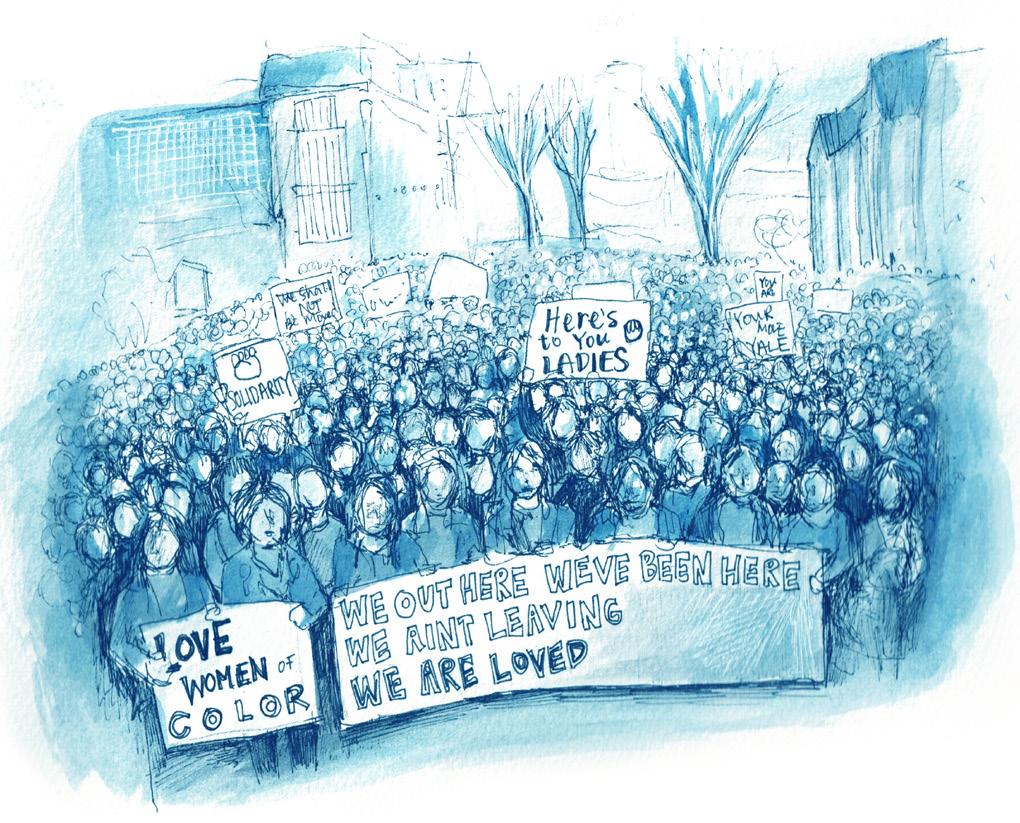



BY EMILY AKBAR AND SULLIVAN HO CONTRIBUTING REPORTERS
At 9:34 p.m. on Tuesday night, AP News declared that Zohran Mamdani — a democratic socialist state lawmaker from Queens — will be the next mayor of New York.
Defeating former New York Governor Andrew Cuomo, who ran as an independent candidate, and underdog Republican nominee Curtis Sliwa, Mamdani’s campaign focused on mobilizing voters through social media and reducing costs of living.
For 10 students interviewed by the News, Mamdani’s win represents a powerful shift away from the political status quo, for better or for worse.
“I voted for Zohran Mamdani, who is the only major political candidate in my lifetime who seems to acknowledge genuine issues and be looking for solutions to them. It’s the first time I felt like I voted for someone with genuine values who will try to improve things instead of maintaining a failing status quo,” Dash Beber-Turkel ’26 wrote in an email.
BY ETAI SMOTRICH-BARR
CONTRIBUTING REPORTER
The University office that responds to reports of harassment and discrimination published an expanded set of procedures in August, explaining how the office responds to reports of misconduct, investigates complaints and issues findings.
In an Aug. 1 email to the Yale community, Elizabeth Conklin, the associate vice president for institutional equity and accessibility, wrote that the revised procedures for the O ce of Institutional Equity and Accessibility, or OIEA, would “o er greater clarity on investigation processes, timelines, alternative resolutions, supportive measures, and confidentiality.”
A confidentiality policy included in the new procedures enables Yale to discipline sta , students or faculty
who share documents related to their engagement with the OIEA, raising questions about how the o ce and University leaders can be held accountable if they fail to adequately address complaints.
In a statement to the News, OIEA Interim Director Nancy Myers stressed that the confidentiality policy applies only to OIEA documents and does not prohibit speaking about interactions with the o ce.
The revised OIEA procedures come after an investigation by the News last October revealed that a senior director of Yale Hospitality remained employed by Yale even after multiple complaints to the OIEA and a finding by the o ce that the director had committed “severe” sexual misconduct.
“It’s so disappointing,” said Vanesa Suarez, a former Yale Hos-
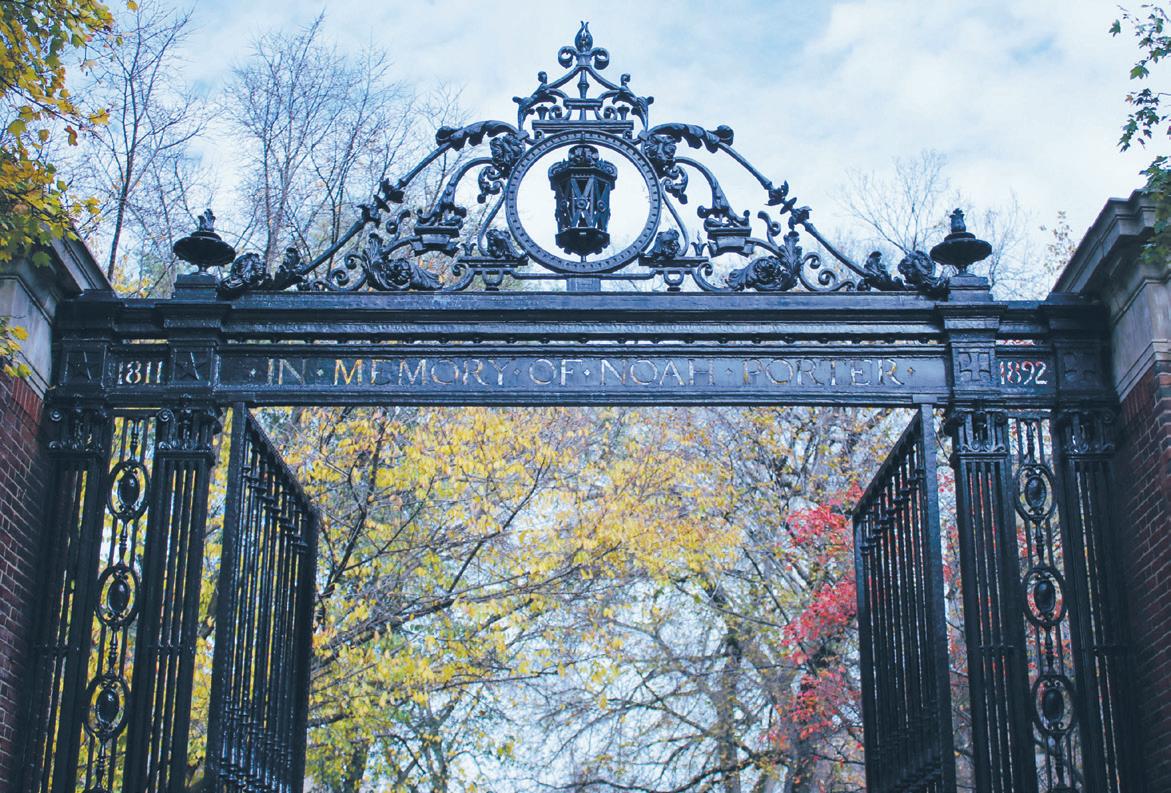
Alum and current White House
advisor Daniel Wasaserman

BY ELIJAH HUREWITZ-RAVITCH STAFF REPORTER
In a resounding victory, Mayor Justin Elicker won reelection to his fourth term, while his fellow Democrats swept every one of New Haven’s municipal elections Tuesday night.
“I feel great,” Elicker said in an interview at his campaign’s Tuesday night celebration. “It was the overwhelming support across the city, and that’s not easy in a city like New Haven, where we have a lot of challenges.”
Elicker won 12,002 votes, or 84.5 percent of the votes cast for mayor, according to election night returns aggregated by the New Haven Independent, which do not include absentee ballots. Elicker’s challenger, Republican candidate Steve Orosco, won 2,185 votes. In 2023, Elicker’s Republican opponent, Tom Goldenberg, won 2,322 votes.
Orosco said in a phone interview that he was “very surprised” and called the decrease in the Republican vote share relative to the 2023 election “disheartening.”
“I always said, going into this election, the chances of winning are very slim,” Orosco said. He added that if he had received around 5,000 votes, roughly half of Elicker’s 2023 total, “that’s definitely a good indicator to fight again in 2027.”
“To me, if the needle wasn’t moved even a little bit, something is o ,” he added. Elicker faced Orosco in this election. But in his victory speech, the only Republican he mentioned was President Donald Trump.
Speaking to a crowd of dozens gathered at Da Legna at Nolo for his victory party, Elicker was exuberant. He attributed the wide margin
SEE ELICKER PAGE 4

BY ELIJAH HUREWITZ-RAVITCH STAFF REPORTER
New Haven’s fledgling Independent Party backed five candidates in alder races across the city this election.
Despite their e orts to disrupt the status quo, all five lost. Come 2026, the Board of Alders will be composed exclusively of Democrats, as it has been since 2012.
“I thought this was a year of change because I thought we had a shot,” Anthony Acri, who ran on the Independent and Republican lines for
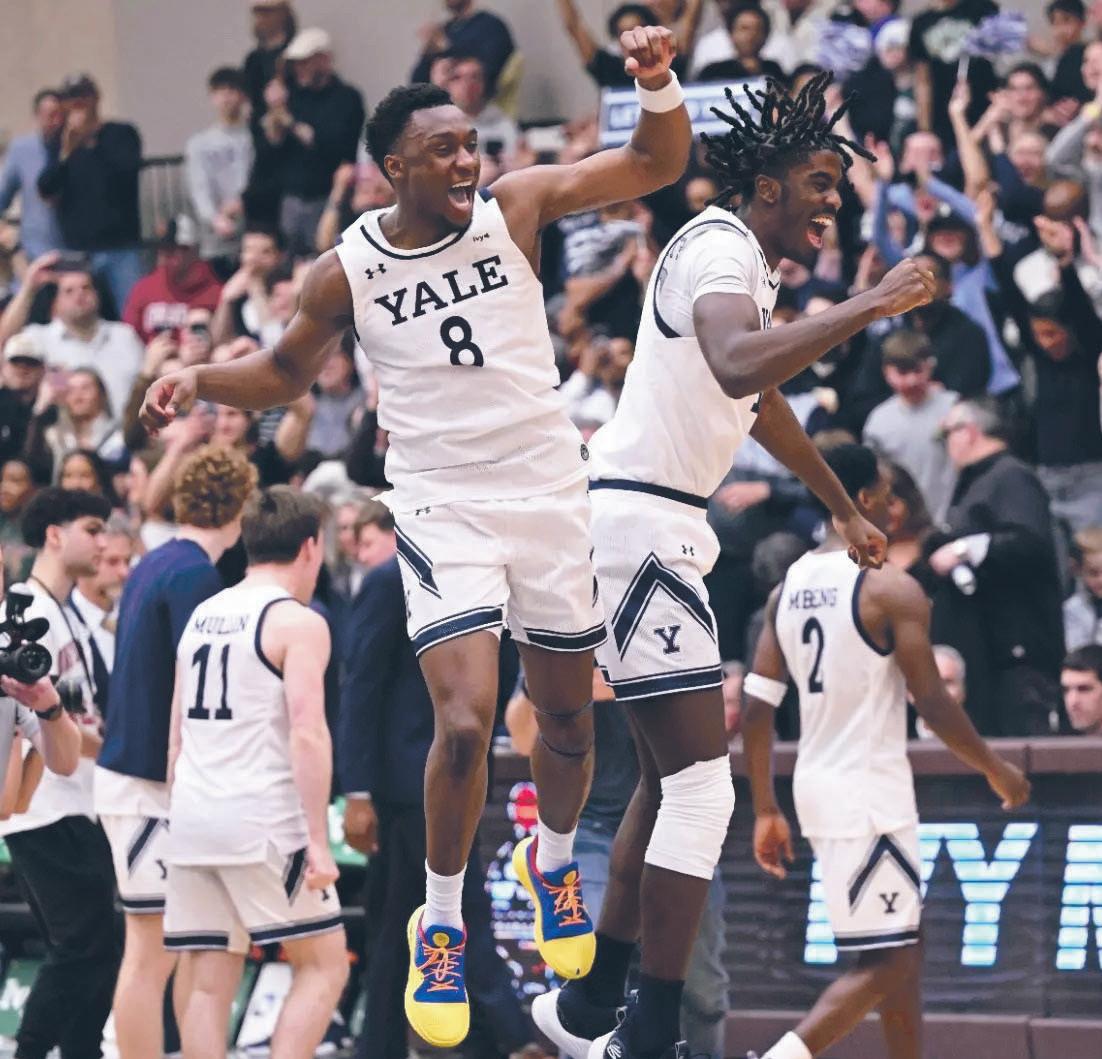
alder in East Shore’s Ward 18, said in a phone interview.
Jason Bartlett, a longtime local political organizer and the Independent Party’s founder and executive director, said he was unsurprised by Tuesday’s results.
“I didn’t have a high expectation that we were going to win,” he said in a phone interview. “It’s a new party and part of the strategy is just to start.” Independent candidates around the Elm City performed unevenly at the polls.
BY BRODY GILKISON AND WALTER ROYAL STAFF REPORTERS
After winning two consecutive Ivy League championships and earning bids to March Madness in back-toback seasons, the Yale men’s basketball team will be looking for new players to step up this year. A season ago, Mbeng was named the Ivy League Player of the Year. Townsend, who, while averaging 15 points per game and seven rebounds per game while shooting nearly 50 percent from downtown, made a late run of his own to be in the conversa-
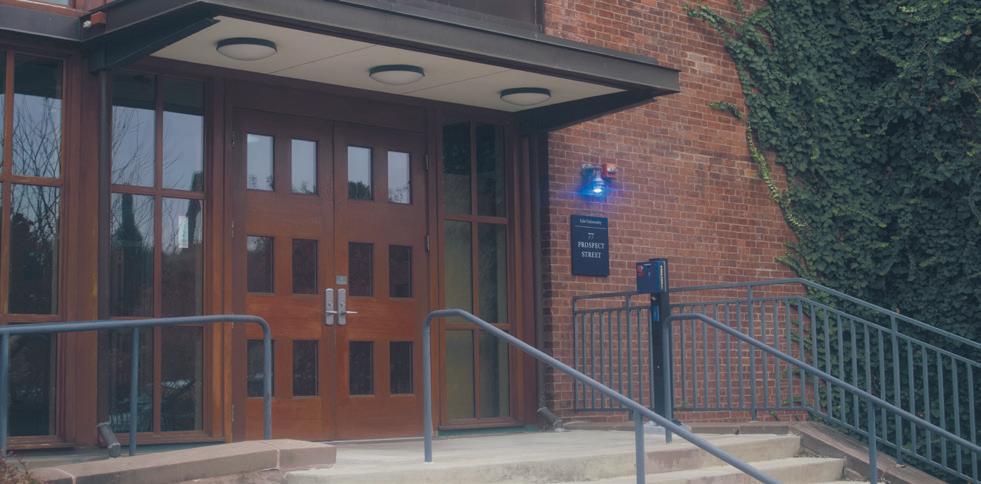
tion for winning player of the year.
While he did not win the award, he was named First Team All-Ivy and is a preseason favorite to win player of the year this season. Additionally, Townsend has been named to several watchlists as one of the best mid-major players of the season.
“Like a lot of the past years, there are a lot of new pieces after we lost some really good ones,” Townsend told CT Insider. “It’s been fun to try to figure out what our potential could be. I feel like this program has done
BY JERRY GAO AND HENRY LIU STAFF REPORTERS
President Maurie McInnis took the stage Wednesday evening in Charleston, S.C. for a talk hosted by the Gibbes Museum of Art.
According to the event’s description, McInnis’ 6 p.m. talk is part of the 14th annual Gibbes Museum of Art Distinguished Lecture Series and explored how her background in art history prepared her for university leadership.
McInnis is regarded by many art history professors as a distinguished art historian. Her work has often involved the American South. In 2005, she published “The Politics of Taste in Antebellum Charleston,” which, according to the book’s description on Amazon.com, “explores the social, political, and material culture of the city to learn how – and at what human cost –Charleston came to be regarded as one of the most refined cities in antebellum America.”
McInnis has consistently referenced artworks in her formal addresses to students.
For the class of 2028’s opening assembly, McInnis referenced Edward Hopper’s “Sunlight in a Cafeteria,” which she said captures the subjects’ “sense of isolation and loneliness.” McInnis pointed to John Trumbull’s painting “The Battle of Bunker’s Hill” as a depiction of “an unexpected demonstration of com-
November 7, 2000 / Yale professor to predict election results for NBC
On this day in 2000, the News reported that professor John Lapinski would predict that evening the winner of the presidential race between Texas Gov. George W. Bush ’68 and Vice President Al Gore. Lapinski, a teacher in American government and political science statistics, was hired by NBC as a member of an eight-person team to predict the winners of over 450 national election races. He emphasized the race’s closeness, telling the News: “It’s so close, I may not be going to bed tonight.”




By Etai Smotrich-Barr
When I received the Aug. 1 email announcing that Yale had revised its misconduct procedures, I was cautiously optimistic. By then I knew more than most about Yale’s anti-harassment o ce, the OIEA, and what I knew was that going to the OIEA for help could be confusing, slow, and ultimately disappointing. Last fall, I published a story in the News saying as much.
Back then, the OIEA’s website contained astonishingly little about how the o ce worked. To learn even the most basic facts, I talked to people who had tried their luck with the OIEA, knocked without warning on the o ce doors of OIEA administrators, and asked around for internal OIEA documents.
Now, the OIEA’s procedures are laid out in semiclear terms on the o ce’s website. But despite my optimism, they seem to bear a striking resemblance to the old. I’ve found only one major revision.

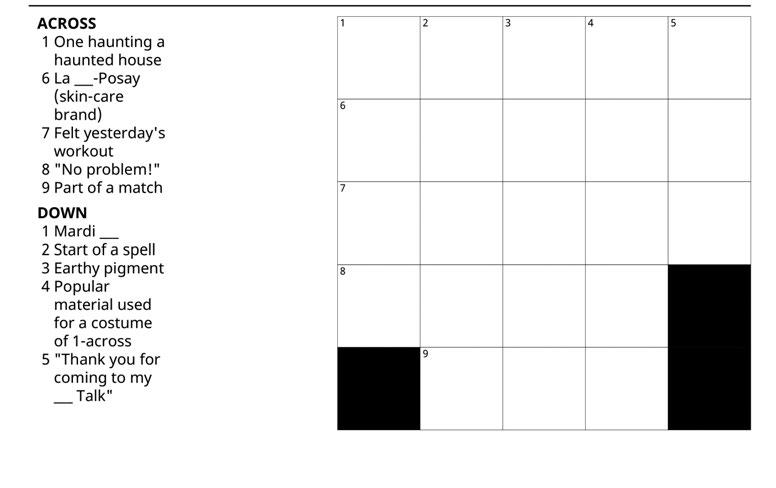
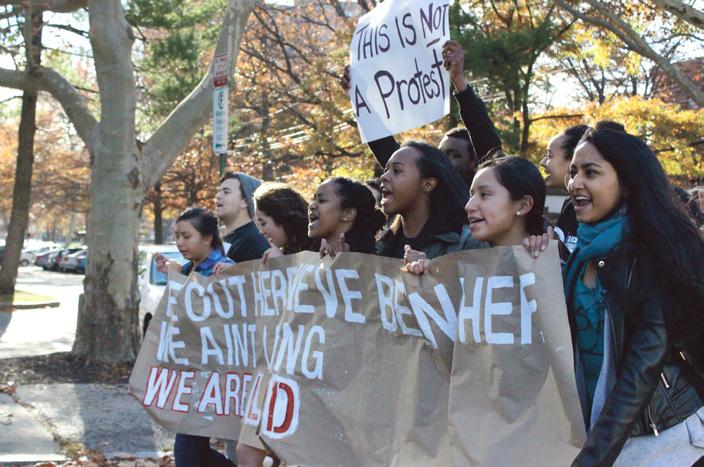
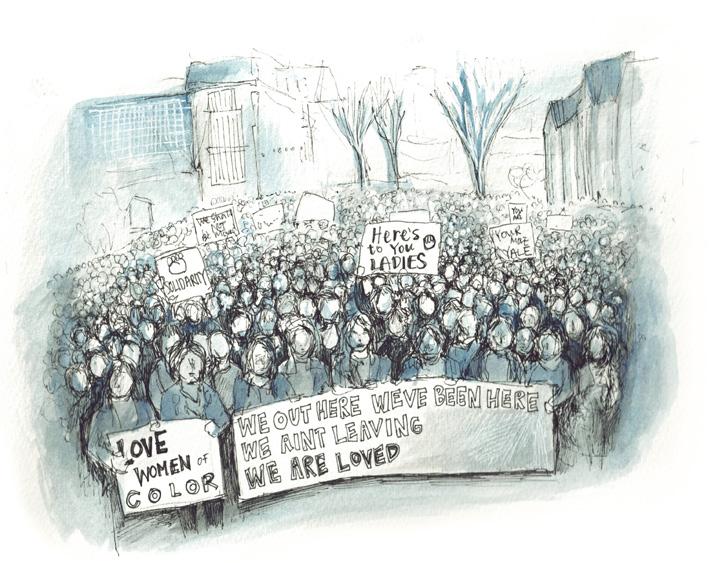
In the coming days, plenty of pundits will o !er their takes on what Tuesday’s election results mean — for the midterms next year, for the presidential race in 2028, and for the country generally. Your columnist’s beat happens to be national politics, so I thought I’d give my two cents.
As regular readers will recall, I’m a dyed-in-the-wool Democrat. And I do have to say: it feels damn good to win again.
Here in New Haven, Mayor Justin Elicker was re-elected in a landslide, and Democrats won six out of the seven contested seats on the board of alders. In Virginia, Abigail Spanberger, a former congresswoman, trounced Winsome Earle-Sears, the state’s Republican lieutenant governor, by 15 points — the largest margin for a Democrat since 1961. Her coattails were long enough to deliver Democrats a thumping majority in the state legislature and to put Jay Jones, the embattled Democratic candidate for Virginia attorney general, over the top. Mikie Sherill won the New Jersey gubernatorial race by 13 points; most polls had the race much closer.
And, of course, Zohran Mamdani was elected mayor of New York City, winning just over 50 percent of the vote against Curtis Sliwa, who was shot several times by the mafia in the back of a yellow cab in the ’90s; and Andrew Cuomo, the former governor, who resigned after he was accused of sexually harassing several women.
I don’t agree with Mamdani on everything — I’m a liberal, not a socialist — but if I lived in New York, I would’ve voted for him in the primary and the general. Mamdani represents something new. He ran an inspiring, hopeful campaign, laser-focused on the cost of living. He delivered on Bernie Sanders’s promise to remake the electorate by bringing record numbers of young people to the polls.
Some people argue that “authenticity” in politics is basically fake. To some extent, it is; a candidate is deemed as “authentic” in part by having their supporters say that they are again and again online during primaries. But you can’t manufacture an aura of authenticity or charisma without the raw material. No amount of “brat” memes could make Kamala Harris seem authentic or charismatic because she isn’t. Zohran “bhai” has the juice. Cuomo, on the other hand, embodies everything wrong and rotten with the Democratic Party. He’s old, he’s corrupt, he’s out of touch. He acted like the mayoralty was owed to him as compensation for being forced to resign from the governorship in 2021 and ran a lazy, uninspired, AI-slop campaign. He deserved to lose, and I’m very glad that he did.
Mamdani’s ads and his social media content were relentlessly focused on one thing — freezing the rent — according to a post-election analysis
from the Searchlight Institute.
Searchlight’s polling found that New Yorkers’ top priorities were a!ordable housing and a!ordable prices. Voters thought Mamdani shared their priorities; they thought Cuomo’s top issues were crime and Israel.
There’s a lesson here for other Democrats. Meet people where they are. Show them that you care about the things that they say matter most. Don’t crowd out your strongest issue by talking about a bunch of other stuff; stay focused, no distractions and grind.
As I said, I really like Zohran Mamdani. I’m rooting for him to be a successful and popular mayor. And I think there are real and valuable lessons to take from his campaign.
But not everything about Mamdani’s success will translate outside of New York City. Not every candidate has either his unique virtues or the good fortune of running against opponents as flawed as Cuomo and Eric Adams.
There are 283 precincts in New York City that voted for Biden in 2020 and Trump in 2024. Andrew Cuomo carried those precincts by 18 points.
The Trump-Mamdani voter appears to be a pretty rare species.
For decades, Democrats have benefitted from higher turnout because we used to have what’s called a “lower-propensity” coalition — our voters often showed up for presidential races but sat out midterms and o!-year races. That’s not true anymore. If everyone had voted in 2024, Trump would’ve won the popular vote by more.
The implication is that while Spanberger and Sherill both ran far ahead of Harris in their respective states, at least some of their overperformance has to be chalked up to Democrats turning out and Republicans staying home. Exactly how much of their victories are owed to turnout differentials and how much is owed to persuasion is something that election analysts will tease out in the coming weeks, but probably not before the post-election narratives have been set.
That’s all to say that while celebration is warranted, those of us on the left of center shouldn’t count our chickens just yet. Depending on how much gerrymandering in red and blue states cancel each other out, Democrats have a good shot at winning the House next year. We might even get lucky and beat Susan Collins in Maine.
Part of that will be due to popular backlash to Trump’s actions. But part of it will be because many of the people who voted for Trump in 2024 will stay home in 2026. In 2028, they won’t.
MILAN SINGH is a senior in Pierson College studying economics and a former Opinion editor for the News. He is also the director of the Yale Youth Poll. His column, “All politics is national,” runs fortnightly. Contact him at milan.singh@yale.edu.

GUEST COLUMNIST
JOHN FOMECHE
Last summer, a young man walked into our clinic determined to stop his methadone. He had been stable for months, working, reconnecting with family, until a viral video convinced him that methadone was “poison,” part of a government plot to keep people addicted. He told me, “Doc, I think I’m ready to do this on my own.” Two weeks later, he overdosed.
At the Yale School of Medicine, we’re trained to interpret data, not defend it. Yet in 2025, defending the truth has become part of the job.
Across the country, medicine faces a new epidemic: misinformation. From vaccines to addiction treatment, science itself has become politicized. Earlier this year, the National Institutes of Health paused a major study on health misinformation after political pushback, raising concerns about interference in public health research. The NIH has proposed cutting university research overhead, a move that would drain resources from community programs.The ground under evidence keeps shifting.
Here at Yale, those national tremors become local realities.
At the Yale Program in Addiction Medicine, we meet people every week whose lives are threatened not only by fentanyl but by falsehoods. Misinformation can turn a lifesaving medication into a moral battleground. Patients fear that buprenorphine is “replacing one addiction with another” or that naloxone, the overdose-reversal medication, “causes overdoses.” These myths spread faster than methadone can stabilize.
Yale’s Community Health Care Van, a mobile harm-reduction unit that travels through New Haven, o!ers clean syringes, HIV testing and linkage to care. Yet its sta! often spend hours countering online rumors instead of treating patients. In August, Connecticut addiction advocates released a short film, “The Truth About Fentanyl
Exposure,” to debunk claims that merely touching fentanyl can cause an overdose, a myth still believed by many in our own community. This isn’t abstract misinformation; it’s misinformation that kills. The erosion of trust also affects how care is delivered. A 2022 survey by the Yale Global Health Justice Partnership found that nearly one-third of Connecticut respondents viewed misinformation about fentanyl exposure and treatment as a major problem in local media coverage. Yale researchers recently reported in JAMA Network Open that racial and ethnic disparities persist in those who receive addiction treatment after an emergency department visit, disparities that deepen when misinformation discourages people from seeking help. When institutions lose credibility, science loses reach. Meanwhile, the policy environment grows murkier. Federal scrutiny of addiction-research grants has made universities cautious. The CDC’s evolving recommendations on opioids have left both patients and providers uncertain about what “safe prescribing” even means. For a patient deciding whether to trust a medication, or a physician deciding whether to initiate it, ambiguity feels like betrayal. Yale stands at the intersection of these tensions. The University partners with the Connecticut Department of Mental Health and Addiction Services and helps guide the state’s opioid response Initiative, which deploys settlement funds for prevention and harm reduction. But the success of those programs depends on public confidence. When misinformation spreads faster than outreach, even well-funded interventions lose their footing. The challenge now isn’t data; it’s delivery. Medical education still treats communication as a “soft skill” when it should be a survival
GUEST COLUMNIST
EYTAN
ISRAEL
skill. We need to train physicians to engage publicly with humility, to translate complexity without dilution and to counter falsehoods without arrogance.
Yale is uniquely positioned to lead that change. Its programs, from the Global Health Justice Partnership to the Community Health Care Van, already bridge research and community. The next step is institutional: valuing public communication as seriously as publication. That means supporting physicians who write, speak and post responsibly in public spaces and protecting them from the backlash that often follows.
The next frontier of medicine isn’t technological. It’s relational. It’s about rebuilding credibility in an age when anyone with a smartphone can drown out an epidemiologist. If we don’t equip future physicians to meet people where they are — their feeds, their fears, their forums — we’ll keep winning scientific battles while losing public trust.
The path forward begins in how we teach. Medical training should prepare students not only to diagnose disease but to recognize and respond to the spread of misinformation , an epidemic of its own. Integrating media literacy and science-communication skills into medical curricula is not an academic luxury; it’s a public-health necessity.
Yale’s motto is a promise as much as a legacy. Lux et Veritas can’t remain carved in stone; it must be lived out loud in classrooms, clinics and communities. Because if institutions built on truth don’t defend it, someone else, less qualified, less honest and far more viral will. The stethoscope and the pen once defined the physician. Today, it may also be the microphone.
JOHN FOMECHE is an Addiction Medicine Fellow at the Yale School of Medicine. He can be reached at john.fomeche@yale.edu.
Imagine this hypothetical:
A student councilman at the University of Moral Certainty — who happens to be a leader of Students for Fetal Life — pounds his gavel. “Honorable senators,” he declares, “We have learned that our institution once passed on a donor-advised gift to Planned Parenthood. This is morally outrageous! We must condemn all donations to organizations that perform abortions.”
Another senator raises a hand. “But, didn’t this vote not pass last week?”
“Ah, but progress requires persistence,” the first senator replies. “We can call it double jeopardy for justice. We will keep voting until righteousness wins out, or until the dissenters drop the debate.”
What might sound like an absurd spectacle became reality at Yale over the weekend. This week, two weeks after a very similar proposal failed, the Yale College Council voted to condemn Yale’s donor-advised gift to the Friends of the Israeli Defense Forces — a U.S.-registered 501(c)(3) nonprofit that provides education, housing, therapy and family support to Israeli soldiers and their children. By condemning a lawful charity because it o !ends certain political sensibilities, the YCC has gone down a slippery slope. If we normalize moral gatekeeping over philanthropy, what’s to stop another campus from banning donations to Planned Parenthood or the American Civil Liberties Union? The logic works both ways.
And, by voting again on almost the same failed measure until it passed, the YCC modeled activism — not democracy. A YCC senator
showed me several harassing messages he received in the two weeks between the votes, shaming him for voting “no.” Those messages might have been enough to make the average person vote “yes” in the double jeopardy trial. That’s not moral leadership; it’s moral coercion.
If supporters of the resolution point to last year’s referendum as proof of student will, let’s be clear: the undergraduate referendum addressed Yale’s “investments” in “weapons manufacturers.” Investments and donations are fundamentally di!erent. When Yale invests, it does so for its own financial gain, using university-controlled funds. Donoradvised gifts, by contrast, come from individuals who contribute to Yale with the understanding that their money will be passed on to other registered nonprofits of their choosing.
FIDF is not a weapons manufacturer, nor does it supply arms or even defensive vests or helmets. The organization itself acknowledges that American nonprofits are prohibited from donating military equipment of any kind. Instead, it’s a nonprofit that supports soldiers’ education and well-being within U.S. law. Blocking Yale from passing on the donation would also likely not prevent the money from being given; the individual who wished to make the donation through Yale might simply put it through another donor-advised fund, or donate directly, accomplishing nothing but hurting Yale’s credibility and our culture of open debate. Furthermore, as one senator noted, condemning this donation implies that every future gift not condemned is tacitly approved. Though, predictably,
only those involving Israel seem to invite debate.
To Yale’s international students: I sincerely hope the YCC’s actions do not lead to federal attention that threatens your visa status. To everyone on financial aid: I pray that this motion will not lead the federal government to withhold more funding and lead Yale to cut back on providing vital aid.
Let’s return to our fictional “University of Moral Certainty.” The motion passes easily this retrial, 19-7 — perhaps all the abstentions of senators who had run for o ce to plan Spring Fling turned to yeses to get over with the debate. Applause erupts. The senators congratulate themselves on standing for human life, truth and selective compassion. The chamber adjourns until the next week when they move from condemning Planned Parenthood to condemning climate change prevention charities, global human rights groups and more. If it doesn’t pass the following week, they can and will try again and again. Soon, ‘justice’ is achieved. What began as moral conviction ends as moral control. What began as conscience ends as censorship. And in the silence that follows, diversity of opinion disappears. Student government should make life better for students, not play foreign-policy referee. When it forgets that, we come outstandingly close to the “University of Moral Certainty.”
EYTAN ISRAEL is a senior in Saybrook College studying Electrical Engineering and Computer Science. He can be reached at eytan.israel@yale.edu.
ELICKER FROM PAGE 1
of his win to his administration’s focus on crime, a ordable housing and the climate crisis, but added that “it is also because when Donald Trump attacks our community, we fight back.”
He mentioned all four of the lawsuits New Haven has joined against the Trump administration since the president’s January inauguration. Just last Thursday, the city joined a national lawsuit over anticipated cuts to Supplementary Nutrition Assistance Program, or SNAP. After a federal judge filed a temporary restraining order against the White House, it announced it would send partial payments this month.
And Elicker said in an interview that the antagonistic posture he has taken toward Trump may have helped cement his win.
“At a poll, I said to one woman, ‘Thanks for coming and voting,’ and she said, ‘Thanks for fighting Trump,’” he said. “And that kind of message I heard from many voters across the city that feel deeply concerned about what’s going on in our nation.”
Elicker added that he saw much of the president in his challenger.
“Technically, Orosco was my opponent, and Orosco was somewhat Trumpish in his campaign, that wasn’t always accurate, was unbelievably negative, didn’t really have anything positive to say, any real solutions,” he said.
Orosco, for his part, said that he was counting on support from Trump voters that never materialized.
“If Trump got 7,000 votes in New Haven,” he said, “and I only had 2,000, that number doesn’t add up to me, because those 7,000 people should definitely be motivated to vote again this year.”
But entrenched one-party rule has drained energy from the city’s democratic life and kept voter turnout low, per several political observers.
Elicker himself acknowledged that “in New Haven, it’s hard for a Republican to win.”
Referring to Orosco, he added that “I appreciate him throwing his hat in the ring. I think that it’s not easy to run a campaign.”
“The stars don't look bigger, but they do look brighter.”
Democrats sweep alder races Down the ballot, in six of the seven contested alder races, the Democratic candidates won handily.
In Wooster Square’s Ward 8, Democrat Amanda Martinelli, who was endorsed by outgoing alder Ellen Cupo, beat Republican Andrea Zola by around 74 points.
Martinelli said she felt “good” in an interview at Elicker’s victory party.
“I really worked hard to get out and meet as many neighbors as I possibly could” — and that, Martinelli said, is why she won.
In Quinnipiac Meadows’ Ward 12, one-term incumbent Theresa Morant beat Robert Vitello, who ran on the Independent and Republican lines, by around 50 points.
Meanwhile, in Fair Haven Heights’ Ward 13, Democrat Mildred Melendez won 417 votes to Green candidate Paul Garlinghouse’s 71 and Independent Luis Jimenez’s 32.
At Elicker’s party, Melendez said she felt “fantastic, fabulous, super excited. Paul Garlinghouse was a perfect opponent. He was kind. He’s smart. I truly respect him. He ran a great race. It was a good day together — great example of democracy.”
In Fair Haven’s Ward 16, Democrat Magda Natal trumped Independent Rafael Fuentes by around 63 points.
Natal said that she “expected” to win.
“There was no doubt,” the alderelect said. “I was hoping to see higher numbers, just because I’ve been out for so many months.” Natal had won 154 votes as of Tuesday evening. She added that she felt “overwhelmed” thinking about the work that lies ahead.
Over in East Shore’s Ward 18, Democrat Leland Moore received 692 votes, while Anthony Acri, who is running on the Republican and Independent lines, won 395 and petitioning candidate Zelema Harris 37.
“It feels good,” Moore said in an interview inside the ward’s polling place. “I’ll take a little break tomorrow and once sworn in, we’ll get to work.”
Acri lamented the challenge of running as a Republican or Independent candidate.
“We’re fighting against the Democratic machine in this city — but we did pretty well and


maybe some people will listen.” He added that he will “still be involved in the community — politics, I don’t know.”
In West Rock’s Ward 30, threeterm incumbent Honda Smith crushed Republican challenger Perry Flowers by 86 points.
New Haven’s only competitive race took place in the Hill’s Ward 3. In that contest — marred by allegations of misconduct at its eleventh hour — half-term incumbent Angel Hubbard, a Democrat, emerged victorious over challenger Miguel Pittman, winning 347 votes to his
303. Pittman, who ran on the Independent and Republican lines, also lost to Hubbard in this year’s Democratic primary and in a 2024 special election.
For Elicker, it’s straight back to work Wednesday morning.
“I could pull out my schedule, but it’s jam packed with meetings,” he said.
Orosco, meanwhile, is not sure what lies ahead. He lost one race for alder and two for state senator in previous years; last month, he speculated he might one day run for governor. And he has not ruled out running
for mayor again in 2027.
“You know what it is?” Orosco said. “I love to fight. I just do. I can’t help myself.”
This was New Haven’s first municipal general election with early voting, and as of Tuesday night, before all ballots had been counted, turnout was up from 2023 by more than 1,100 votes.
Eric Song, Chantal Eulenstein and Nellie Kenney contributed reporting.
Contact ELIJAH HUREWITZ-RAVITCH at elijah.hurewitz-ravitch@yale.edu.
Most successful was businessman Miguel Pittman, who challenged half-term incumbent Angel Hubbard, a Democrat, for the Hill’s Ward 3 alder seat. He previously lost to Hubbard in a tight 2024 special election and in this year’s Democratic primary. This cycle, running on the Independent and Republican lines in a race marred by allegations of misconduct, he won 303 votes to Hubbard’s 347, according to data from New Haven’s Registrar of Voters.
Pittman led by a wide margin in early voting, however. Bartlett speculated that once it became clear Ward 3’s race would be the most competitive, “the machine — I mean the Democratic Party, the alders, New Haven Rising and UNITE HERE” put its resources behind Hubbard.
Acri, who has previously run as a Republican twice for city clerk and twice for state representative, also nabbed a significant share of the vote in the Ward 18 race, winning 37 percent.
“We did not get the Republicans to turn out as I had hoped that they would,” Acri said. “I did not get the number of Independent votes that I expected either.” Ward 18 saw a higher share of its residents vote for President Donald Trump last fall than any other ward.
Still, Acri fared better than some of his fellow Independents.
In Quinnipiac Meadows’ Ward 12, Robert Vitello, who also ran on the Republican line, won just over 25 percent of the vote.
In Fair Haven’s Ward 16, Rafael Fuentes won 16.7 percent of the vote.
And in Fair Haven Heights’ Ward 13, Luis Jimenez won 6.3 percent.
“Quite frankly,” Bartlett said, some of the candidates “didn’t put in a hundred percent.”
Indeed, Vitello said that he only decided to run for alder because he had heard, mistakenly, that one-term incumbent Teresa Morant was not seeking reelection.

“I would have never went against her,” he said, adding that they became friends while standing outside of the ward’s polling location Tuesday.
Fuentes, meanwhile, said that he only ran to unseat 10-term incumbent Jose Crespo. But when Crespo dropped out of the Democratic primary in August, Fuentes’ name was already on the ballot. He ended up squaring off against teacher Madga Natal, whom he referred to as “a good woman.”
“I didn’t do all that crazy legwork,” Fuentes said, adding that he did not particularly want to win. “I didn’t go knocking door to door. I didn’t call people at their house.”
He said that immediately after the results of his race were called, he congratulated Natal and then drove in his RV from the polls to Maryland to participate in the Haltech World Cup Finals, a drag racing competition. Many of the Independent candidates who ran this cycle have colorful histories.
Acri was sentenced in 2016 to five years in prison for conspiracy to commit wire fraud, while Vitello was once a mob enforcer, he told the News, and was arrested in 2000 for kidnapping. Fuentes has been accused of organizing drag races by
Crespo, the incumbent alder, allegations he denies.
In Bartlett’s eyes, the only way for the Independent Party to gain a foothold on the Board of Alders is to run a larger slate of competitive candidates, which would prevent the Democratic party from concentrating its resources on a single race.
“We understand what it’s going to take,” Bartlett said. “Now that I have a party, I can start recruiting today, tomorrow, and we can build, and we can fundraise and actually have the financial capacity and the infrastructure to actually help people across the finish line.”
Bartlett is now focused on finding “more Miguels — more candidates that truly want to win and serve and make a di erence in the community,” he said, referring to Pittman.
Ultimately, Bartlett places some of the blame for his candidates’ losses on factors far beyond New Haven.
Voters, he said, “weren’t thinking local issues. They were like, ‘Okay, we got to go in there and show that we’re not for Trump. We’re for the Democrats.’ And they just voted straight Democrat.”
Bartlett said that local races in Connecticut became part of “a
national referendum” on the Trump administration.
Indeed, Democrats flipped open seats and ousted Republican incumbents in cities and towns across the state, with Sen. Chris Murphy calling the shift “seismic” and “possibly unprecedented” in a Tuesday night X post.
Anti-Trump sentiment made it “a lot tougher than it should have been” for non-Democrats to win in New Haven, Bartlett said.
He added that the apparent unpopularity of Steve Orosco — who ran against incumbent Mayor Justin Elicker on the Republican and Independent lines and won a smaller vote share than Elicker’s 2023 challenger, Tom Goldenberg, did — might have also discouraged New Haveners from voting for Independents down the ballot.
“Politics in New Haven have gotten too comfortable,” Jimenez said. “I think that people might be scared of change.” Elicker won reelection by around 69 points.
Contact ELIJAH HUREWITZ-RAVITCH at elijah.hurewitz-ravitch@yale.edu.
FROM PAGE 1
passion amidst chaos” for the class of 2025’s baccalaureate and, at this year’s opening assembly, compared the “inherent ambiguity” of Winslow Homer’s “Old Mill” to the uncertainty the class of 2029 may feel.
In an interview with The Post and Courier, a Charleston newspaper, published Oct. 27, McInnis further detailed her connection to the South, specifically South Carolina — adding that she lived in Charleston for three years while writing a dissertation on its architectural history.
“And as a Southerner whose grandfather was himself a South Carolinian, I can hardly resist an opportunity to enjoy some Lowcountry cooking,” McInnis told The Post and Courier.
According to University spokesperson Karen Peart, McInnis was in Charleston mainly for the event and will return to New Haven on Thursday.
“She was invited by Gibbes in June 2024 to participate in its Distinguished Lecture Series, and she plans to discuss the unique skills and perspectives that her background as an art historian brings to her leadership,” Karen Peart, a university spokesperson, wrote in an email to the News on Wednesday afternoon before the event.
Charleston Music Hall and the Gibbes Museum of Art did not immediately respond to the News’ emailed requests for comment.
In 2023, Sarah Lewis GRD ’15, a former art critic at Yale School of Art, was the first art historian to speak at the annual lecture series.
Contact JERRY GAO at jerry.gao.jg2988@yale.eduand HENRY LIU at henry.liu.hal52@yale.edu.
pitality employee whose report of harassment was dismissed by the OIEA. Suarez told the News that she had hoped revisions to OIEA policy would focus on empowering the o ce to take a more active role in preventing misconduct.
“The only thing you could come up with is confidentiality?” Suarez said.
New clarity Before this update, the webpage explaining OIEA procedures contained only eight paragraphs and provided few details on what the o ce did after receiving a report of harassment or discrimination.
“The updated OIEA procedures aim to provide a clear and structured roadmap for individuals engaging with the o ce,” Myers wrote in an email to the News.
According to the revised procedures, someone who reports misconduct to the OIEA can seek non-disciplinary “informal” or “alternative” resolutions, or they can choose to bring a “formal complaint.” A formal complaint requests that the OIEA initiate an investigation against the accused party, who is referred to as the “respondent.”
In an investigation, the OIEA interviews the complainant, respondent and relevant witnesses and then produces an investigative report, which includes a determination of whether or not the respondent has violated Yale’s policy against discrimination and harassment, according to the revised procedures. If the OIEA finds that the respondent violated Yale’s policy, other personnel processes outside of the o ce determine any potential disciplinary action.
The revised procedures publicly describe this process in detail for the first time. Myers wrote that the process is “consistent with the internal investigation practices first developed by the o ce in 2021, which have been regularly reviewed and refined since that time.”
Confidentiality policy
The revised procedures also include new language that restricts the sharing of documents prepared by the OIEA in response to a formal complaint.
Under the new procedures, the OIEA now informs both the complainant and the respondent in an investigation that they “must keep all documents, including any investigative report, prepared specifically for the investigation strictly confidential.” Parties to an investigation cannot share the documents with anyone
except “their support person, family, legal counsel, union representative, or appropriate government agencies.”
“Alleged violations of the confidentiality provision are reported to the appropriate disciplinary body, depending on individual’s affiliation with the University (i.e., student, faculty member, or staff member),” Myers wrote to the News. “OIEA informs both complainants and respondents that violating this confidentiality provision may result in disciplinary action.”
Yale’s status as a private institution means that “they can set disciplinary policies with a great amount of leeway, without much worry of regulation,” according to civil rights attorney Alex Taubes LAW ’15.
The contracts between Yale and UNITE HERE Locals 34 and 35 — the unions that together represent Yale’s clerical, technical, maintenance and service workers — allow the unions to intervene on behalf of their members in any instance where Yale pursues disciplinary action.
“But if it’s a non-unionized employee,” Taubes said, Yale “could discipline them all the way up to firing, if they chose.”
The confidentiality clause permits sharing OIEA documents with some government agencies, such as the federal Equal Employment Opportunity Commission. What the policy seeks to prevent, Taubes said, is “going public.”
Losing a tool for accountability
Last October, an investigation by the News found that dining staff felt neither the OIEA nor University leaders had properly addressed complaints of sexual misconduct by a former senior director of Yale Hospitality, Robert Sullivan. When reached by the News last year, Sullivan broadly denied the accusations without addressing them specifically.
The News’ investigation relied on OIEA documents to show how the office and University leaders responded to the alleged conduct. Those documents would now be subject to the University’s confidentiality policy.
In July 2019, the OIEA reached out to Vanesa Suarez after the o ce was made aware of a letter she wrote alleging that Robert Sullivan, then a senior director of Yale Hospitality, had sexually harassed her.
Yet less than three weeks after the initial outreach and without the OIEA ever meeting with Suarez, the then-director of the office wrote in a document — obtained by the News
and included in the October 2024 article — that she had completed an investigation and “found no evidence to support” Suarez’s account. The OIEA never notified Suarez that her allegations had been dismissed. Suarez, waiting for a meeting that would never come, gave up.
In 2023, the OIEA investigated a new complaint against Sullivan and found — according to another document obtained by the News — that Sullivan had committed “severe” sexual misconduct. Despite the OIEA’s finding, Sullivan was issued a new role as a “consultant” and remained listed as an employee until the News began reaching out to University leaders about Sullivan’s conduct.
Both Suarez and the other complainant, who spoke on the condition of anonymity, said they shared their stories with the News because they felt that the OIEA and University leaders had failed to address Sullivan’s behavior. They said they felt particularly betrayed by Sullivan’s continued employment, despite OIEA documents that proved University leaders were aware of his conduct.
Myers wrote that “the confidentiality provisions do not prevent individuals from speaking about their experiences, but it does require that they maintain the confidentiality of documents prepared in the course of an investigation. This protects the privacy of all involved in an OIEA investigation, including witnesses who may otherwise be hesitant to participate.”
Without being able to share OIEA documents, Suarez wondered what mechanisms were left to hold University leaders accountable for their response to misconduct.
The confidentiality policy, Suarez said, means that “Yale is basically telling you, ‘You’re done after us. If we fail you, you can’t go air this out to the rest of the world — not just what happened to you, but the fact that we failed you.’”
Between January 2022 and December 2024, the OIEA received 545 reports of discrimination and harassment, according to the o ce’s data dashboard, resulting in 90 formal investigations.
In 10 of those investigations, the OIEA found that a respondent violated the University’s policy on discrimination and harassment.
Contact ETAI SMOTRICH-BARR at etai.smotrich-barr@yale.edu.
According to exit polling from CNN, Mamdani won 78 percent of votes from New Yorkers aged 18-29. Critics, however, cited inexperience and unfeasible policy proposals as reasons why they were hesitant to support Mamdani’s run. Manu Anpalagan ’26, the president and founder of the Yale College Republicans, wrote in an email that he felt “disappointed by the false promises” Mamdani made “to voters about what he can accomplish.” Anpalagan, who is not from New York City, characterized Mamdani’s messaging as “ingenuine and dishonest.”
Avi Rao ’27, who is from New York but did not vote for Mamdani, said in an interview that he has doubts about many of Mamdani’s policy proposals, since they hinge on increasing tax revenue, which would be dependent on approval from the New York State Assembly.
Ahead of Election Day, a dozen members of Yale College Democrats, or Yale Dems, canvassed for Zohran Mamdani over the weekend. Maryam Abbas ’29, who does not live in New York but canvassed with Yale Dems, observed how many voters expressed their excitement about Mamdani’s policies, citing his plans to make the city affordable. Abbas also mentioned critics she encountered who had less faith in the campaign’s promises. “There were some people who said, ‘I would never vote for that man, God forbid,’” Abbas noted. “There was one person, for example, who I was talking to, and she said that she likes Zohran’s policies, but she feels like it’s hard to attain his policies.”
Mamdani’s win on the national stage
Many students viewed Mamdani’s win as a promising shift in the overall national Democratic strategy. Brooklyn resident Maya Evans ’27 wrote in an email that she hoped his win would be “a big wake up call to the Democratic Party to get o their ass and do something.”
Yale voters also cited the city’s relationship with President Donald Trump as a factor influencing their vote. New Yorker Manu Bosteels ’28, who is an opinion columnist for the News, wrote in an email that “Cuomo has shown himself to be unwilling to stand up to Trump and indeed takes money and cues from the same people.”
“It’s felt really hard to be living in Trump’s America over the last several months,” Sonja Aibel ’28, who is from Brooklyn and is a copy editor for the News, said in an interview. Aibel said she valued the idea of “local gov-
ernment being a place where the values of that city can be upheld despite what is going on on the national level,” and hoped Mamdani could be a step towards that vision.
Rao, however, expressed concern that Mamdani’s election could bring too much federal focus to the city. Rao described Mamdani’s relationship with Trump as “overly combative.”
“You don’t want to be a collaborator necessarily, but being able to deflect federal pressure and run the city well enough that there isn’t this sort of eye on it, I think that’s the most important,” Rao said.
The future of New York
After Mamdani’s win, voters reflected on the direction New York is now headed. Bosteels praised Mamdani’s campaign strategy as a model for Democrats nationwide, specifically by “using social media e ectively and clearly, and being willing to deviate from the stale monotony of mainstream Democratic politics when it matters most.”
Beber-Turkel wrote that Mamdani’s win can signify to the entire country that there is room for more leftist policies within the Democratic party.
“I think his election would signify to the US as a whole that there is a place for real leftism and that the enthusiasm shown for candidates like Mamdani will not automatically transfer to the least o ensive elderly, milquetoast neoliberal selected by the DNC,” Beber-Turkel wrote. Abbas reflected on her enthusiasm at being able to identify with Mamdani, New York’s first Muslim mayor.
“There’s so much excitement, especially as a Muslim, like seeing the Muslim community being really excited about the first Muslim mayor. It’s just so incredible,” she said.
Regarding New York’s relationship with the federal government, Aibel said that she is optimistic about Mamdani’s plans to fight back against pressure from the Trump administration, especially in what she claimed should be a “sanctuary city” for immigrants.
“I am excited about the idea that New York is picking someone who will really stand up to what’s going on outside of New York and will defend the things that make our city special,” Aibel said.
Andrew Bard Epstein GRD ’17, the communications coordinator behind Mamdani’s social media campaigning, graduated from Yale with a doctorate in history.
Contact EMILY AKBAR at emily.akbar@yale.edu and SULLIVAN HO at sullivan.ho@yale.edu.
a really good job of having someone ready to step up every year. There’s something really special about that.”
In addition to Townsend’s preseason spotlight, national media also picked Yale as the unanimous favorite to claim the Ivy League’s March Madness bid in the league’s preseason poll. Harvard and Cornell came in second and third, respectively. Preseason KenPom rankings also favor the Bulldogs. KenPom, short for Ken Pomeroy, is an independent NCAA men’s basketball database whose rankings are widely regarded as one of the more accurate predictions of seasonal performance.
Many of the traditional Ivy basketball powerhouses are reeling following a messy offseason. Princeton’s superstar guard Xavian Lee earned $6 million in NIL and roster deals via a transfer to the reigning champion Florida Gators during the o season, On3, a sports news site, reported. Cornell, last year’s Ivy runner-ups, graduated their leading scorer, Nazir Williams, and their leading rebounder, Guy Ragland Jr. Harvard, who returns unanimous Ivy Rookie of the Year Robert Hinton, also graduated two starters. Nonetheless, the Ivy conference-play season is notoriously unpredictable. Before then, however, Yale will face a challenging non-conference schedule. Highlighted by preseason AP No. 15 Alabama (1-0), the Bulldogs will have a chance to sharpen their teeth against multiple NCAA tournament-level opponents.
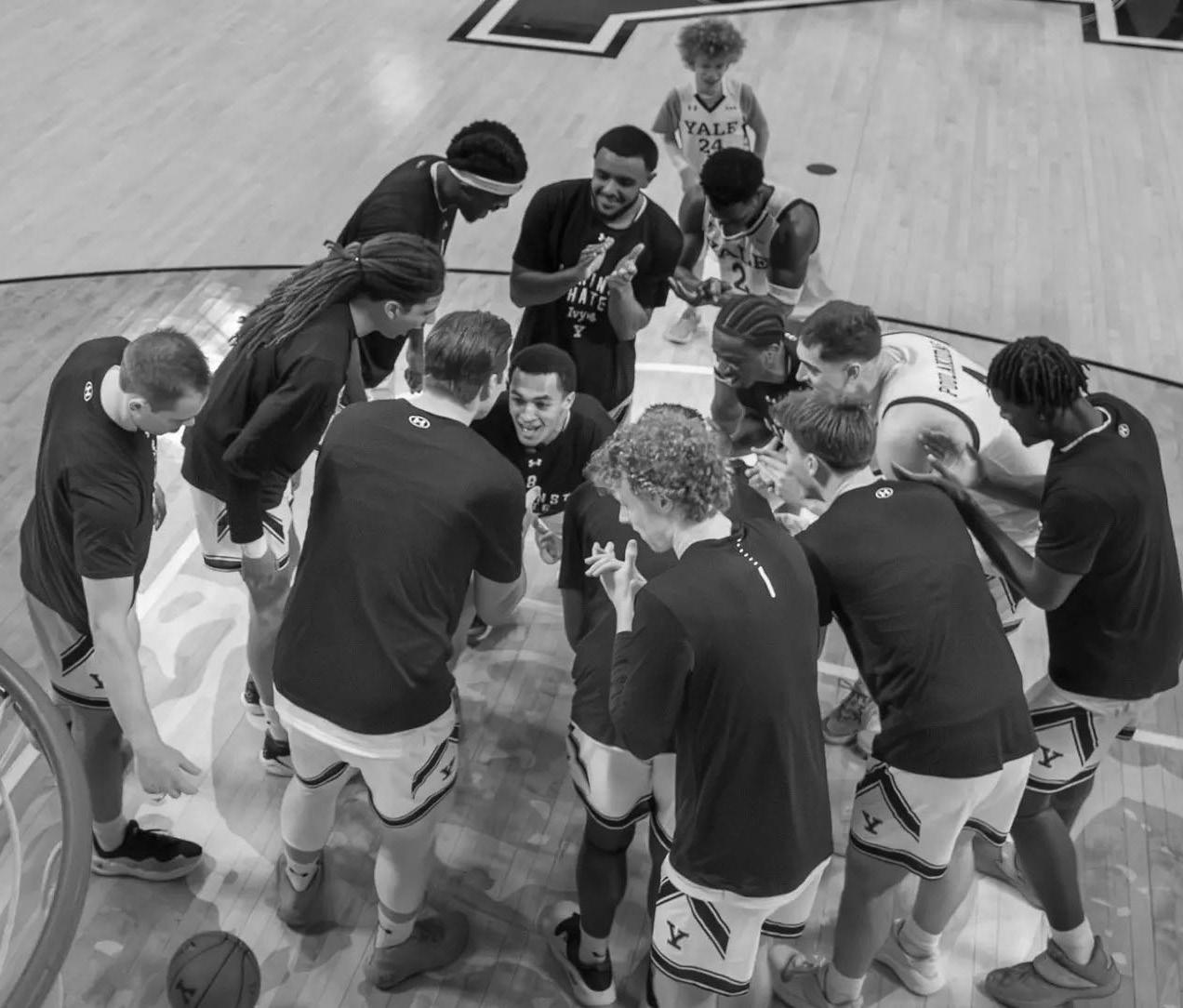
big plays of Aletan’s career came in the final seconds of Yale’s victory over Auburn in the first round
of the NCAA Tournament, when he swatted two shots to clinch the win for the Bulldogs. Since then, he has emerged as one of the better defensive players in the Ivy League, making a name for himself on both defense and the o ensive side with his rim-rattling dunks.
“This summer I worked really hard in the weight room because I want to enhance my physicality around the rim on both ends of the floor,” Aletan wrote in a text message. “On the court, my coaches have been great working with me to build confidence handling the ball and improve my touch in the paint.”
With the increased physicality and refined skills on the court, Aletan could become a force for the Bulldogs as they aim to repeat their past success.
“Having seen some of the past guys go through the program and have a lot of success, we’ve been given a great blueprint on how to succeed as a basketball team,” Trevor Mullin ’27 said. “Even though we have a lot of new faces on the court, I’m excited to see how we will work together to accomplish our goals.”
On Friday, the Yale men’s basketball team will open up its 2025-26 season against Navy at 8:30 p.m. in the Veterans Classic in Annapolis, Maryland. The game will be televised on CBS Sports Network.
Contact BRODY GILKISON at brody.gilkison@yale.edu and WALTER ROYAL at walter.royal@yale.edu.
“If the Sun and Moon should ever doubt, they’d immediately go out.”
WILLIAM BLAKE ENGLISH POET
BY ISOBEL MCCLURE AND ASHER BOISKIN STAFF REPORTERS
University President Maurie McInnis traveled to Washington, D.C., last week to attend a Tuesday For Humanity event, as the fundraising campaign enters its final stretch.
Her visits to Washington, now monthly, come as the University increases its lobbying presence amid increased political scrutiny of elite colleges. The For Humanity event featured remarks from Jackson School lecturer Jimmy Hatch ’24 and was attended by a group of Naval Reserve Officer Training Corp, or ROTC, students. During the trip, Hatch and the students visited “a number” of lawmakers on the Hill, McInnis said in a Friday interview.
“We should probably do more of that,” McInnis said, referencing the students’ meetings with lawmakers. She noted that “there is no doubt that they can tell Yale stories in ways that I
think are more personal and perhaps even more meaningful.”
Federal filings released on Oct. 20 show that Yale spent $370,000 on lobbying between July and September, surpassing every other Ivy League university. The filings list the University’s priorities as student aid, endowment taxation and federal research funding.
McInnis described the students’ meetings as a way for lawmakers to “get to know Yale in a di erent way from meeting with” herself or a representative from Yale’s O ce of Federal and State Relations.
During her trip to the capital, McInnis attended the biannual Association of American Universities’ meeting of presidents.
McInnis, who serves on the organization’s board, said that the AAU meets with U.S. Secretaries of Education and Energy and others “who are doing the policy work that relates to higher education.”
“We like to have an opportunity for both us to hear from
them and for them to hear our questions, and then we talk about other things that you know are issues in common for higher education,” McInnis said. She did not specify who gave remarks at the recent AAU meeting.
In June, the University provided financial support to students that organized a rally in the capital against the Republican-backed “One Big Beautiful Bill,” which raised the endowment tax on wealthy universities like Yale from 1.4 to 8 percent. During the spring, the University solicited statements from Yale students about their Yale experience to use in its lobbying efforts.
Asked whether lobbying efforts align with the University’s year-old policy on institutional voice, McInnis said she sees no contradiction between the two. The policy, adopted last fall, advises Yale leaders to avoid commenting publicly on political or social issues except in rare cases.
When lobbying, McInnis said she aims to “defend and speak to Yale’s mission” with lawmakers whose decisions directly affect higher education funding and policy.
“What I believe I am doing is opening up a conversation about the impact that through our education, research and clinical care missions, the impact that we are having on all Americans and the importance of preserving that partnership for the good of the United States,” McInnis said.
Legislation about indirect research costs remains a “very alive and unsettled issue,” she said when asked about this lobbying area. Alongside other universities, Yale has advocated for the Federally Allocated Indirect Rate, or FAIR model — a proposal to reform how the government reimburses institutions for indirect research costs like lab maintenance and equipment.
McInnis said the reform would make the system “more transparent” and “understandable to the public.”
Universities and agencies are “building a lot of support” among lawmakers for the reform, McInnis added. According to McInnis, final decisions could be incorporated into Congress’ upcoming appropriations process, which has been delayed by the ongoing government shutdown.
When asked about the government shutdown, McInnis said that “for now, there have not been major impacts,” although noting that fewer lawmakers are currently in Washington.
“In past government shutdowns, if there have been any gaps in funding, it’s always been later restored,” McInnis said.
“We have always just covered any places there are gaps.”
McInnis was inaugurated as the president of Yale on April 6.
Contact ISOBEL MCCLURE at isobel.mcclure@yale.edu and ASHER BOISKIN at asher.boiskin@yale.edu .
BY SASHA CABRAL STAFF REPORTER
The Yale Center for Civic Thought on Monday hosted recent Yale alum and current White House policy advisor Daniel Wasserman ’19 for an off-therecord discussion about the compact sent by President Donald Trump to various universities and the role presidents should play in reforming universities.
Bryan Garsten, the faculty director and founder of the center, said that the Center for Civic Thought strives to facilitate “a more thoughtful public sphere” along with “a more responsible intellectual life.” Garsten also said that President Donald Trump’s recent pressure on universities makes the views of a young graduate employed at the White House “interesting.”
“He was chosen because he’s a pretty recent Yale alum who finds himself in the position of being
close to the White House working on university issues,” Garsten said in an interview. “He and I have spoken once or twice, and I thought it would be provocative and useful for him to come to campus and he agreed.”
Garsten added in an email to the News that Wasserman spoke on his personal views and was not acting as a representative of the Trump administration.
The 25 attendees in the audience consisted of students, faculty and sta , according to Garsten and Anna Stroinski, the center’s program manager. Attendees leaving the event declined the News’ requests for comment.
“Some people were sympathetic to some of the recent criticisms of universities but skeptical of the administration’s methods and proposed solutions; some approved of the administration’s approach to universities; others rejected the administration’s diagnoses alto-
gether,” Garsten wrote in an email after the event.
“Some participants shared concerns about intellectual diversity and violations of civil rights law. Some raised questions about the administration’s approach, including why research funding was an appropriate response to violations in other parts of the university,” he added.
Wasserman declined the News’ request for comment about the event.
Wasserman, who was in Davenport College as an undergraduate, graduated from Harvard Law School and studied political thought and intellectual history at the University of Cambridge.
At Yale, he wrote a News opinion article arguing for the necessity of “civil” and “concrete” arguments.
In June, the New York Times reported that Wasserman served as a “cooperating witness” in a Justice Department investigation
into alleged claims of discrimination against white men at the student-run Harvard Law Review. In letters to Harvard sent in May, the Times reported, the department disclosed that Wasserman had provided information about the publication and accused the Law Review of retaliating against Wasserman and asking him to destroy evidence.
Wasserman began working for the White House on May 22, the Times reported.
In a confirmation email to the Monday event attendees, Stroinski provided copies of the Trump administration’s “Compact for Academic Excellence in Higher Education,” a Wall Street Journal article regarding the compact being sent to universities and Harvard’s response to the Students for Fair Admissions v. President and Fellows of Harvard College ruling.
“We gently encourage you to read the attached pieces in
advance of the seminar to help prime the discussion. Please note that the event is structured as a small seminar, so it is designed to be an engaged, conversational session for all participants,” Stroinski wrote in the email.
Referring to the future of the Center for Civic Thought, Garsten elaborated on the center’s immediate goals for growth and inclusion of a diversity of people that are “different parts of Yale.”
“Although we’ve been doing similar work for years, we’re brand new as a center,” Garsten said. “So we still want to find our way into more and more parts of the university.” Wasserman’s undergraduate senior essay on political theory won the Philo Sherman Bennett Prize, according to the webpage advertising the Monday discussion.
Contact SASHA CABRAL at sasha.cabral@yale.edu.
‘Olympics’ between opposed groups seen as sign of Law School civility
BY HENRY LIU STAFF REPORTER
Members of Yale Law School’s conservative Federalist Society and liberal American Constitution Society put aside their ideological differences last month for an afternoon of friendly competition at Wilbur Cross High School in East Rock.
The groups came together in early October for the inaugural “FedSoc-ACS Olympics,” consisting of seven athletic competitions held between the two groups. Student organizers characterized the event as a fun opportunity to meet classmates outside their usual circles and to build connections across political and legal divides.
“We’re delighted to see our students taking the initiative to cross ideological lines, have some fun, and build relationships. Such connections foster the respectful dialogue that sharpens legal reasoning and deepens mutual understanding,” the Law School’s interim dean, Yair Listokin LAW ’05, wrote in a statement to the News.
The Federalist Society is a conservative-leaning legal organization, while the American Constitutional Society is a progressive legal organization that has been described as a “counterweight” to the older Federalist Society.
Listokin linked the Olympics to the Ronnie F. Heyman LAW ’72 Crossing Divides Program, which encourages dialogue and cooperation among students of differing viewpoints.
Tobias Johnson LAW ’27 — in email obtained by the News that was sent to the Window, an internal email list server for the Law School — highlighted the event’s significance in light of past tensions at the Law School.
“It’s not lost on any of us that such an event may not have been
possible in years past at YLS, and it’s a tradition we hope continues for years to come,” Johnson wrote in the email.
Colin Dunkley LAW ’26, who participated in the Olympics, told the News that while relations between liberal and conservative students broadly have been positive during his time as a student, he has heard that that relationship was “far more fraught” before he arrived, when there would be a “really intense social ostracization” of Federalist Society members.
“I do not think that if you were going to Yale Law School, let’s say six years ago, and if you were a liberal, I don’t think it would be common or even especially acceptable to have a friend who was in FedSoc,” Dunkley said.
Hannah Terrapin LAW ’26 also described the “leftist vs FedSoc divide” as “a lot less contentious” than previous years. Terrapin attributed that shift to tighter policies the Law School has adopted regarding campus free demonstrations.
Terrapin added that while she thinks some Federalist Society members hold views she finds “abhorrent,” there is a diversity of viewpoints in the Federalist Society and it would be a mistake to not engage with its members.
Ilani Nurick LAW ’27, who is the vice president of community engagement for ACS and was an organizer for the event, spoke to the News about the value of the Olympics for him.
“It’s important to do things that aren’t political and are fun, and humanize each other,” Nurick said. “In many instances, we live in these bubbles where you don’t necessarily get these kinds of interactions and it’s really easy to demonize people or not understand those people when you’re in these kinds of isolated situations.
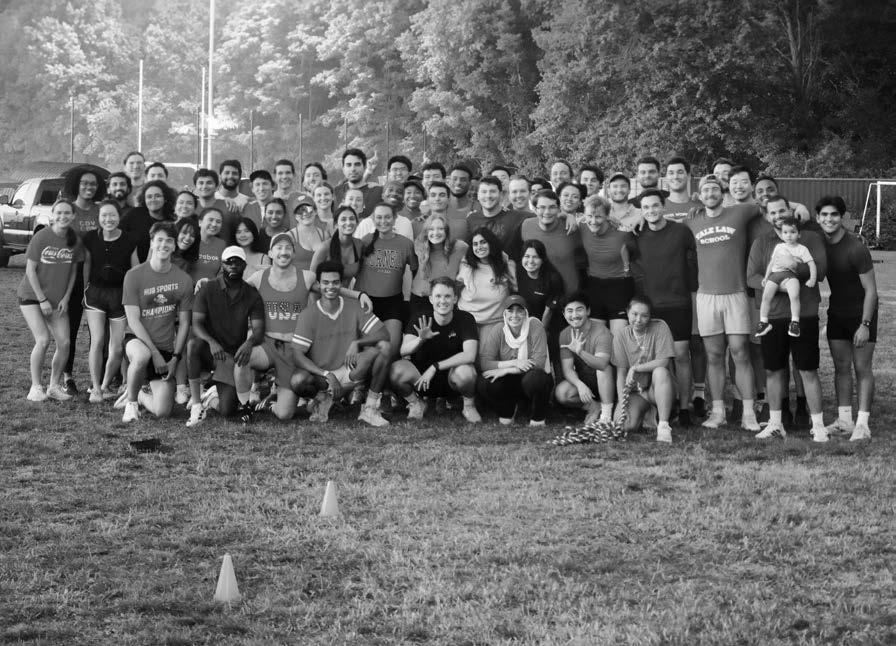
This is just a very low stakes way of at least giving people the opportunity to chat.” Johnson ended his email about the Olympics by referring to the Crossing Divides program.
“To (actually, for the first time since the inception of the program) crossing divides and to many more FedSoc victories,” Johnson wrote At the Olympics, according to Johnson’s email, the two groups competed in seven events: capture the flag, flag football, kickball, basketball, dodgeball, relay race and tug of war.
While ACS won in basketball and tied in tug of war, the Federal-
ist Society won all five other events, taking home the “Byron White Award for Supreme Excellence.”
“Even though ACS recruited from 90% of the law school’s population, FedSoc posted a dominant showing, winning 5 of the day’s 7 events and tying in another,” Johnson wrote.
David Haungs LAW ’26, the president of the Yale Federalist Society, wrote in a statement that he was proud of the Federalist Society’s win.
“Based on the strong performance of the Federalist Society 1Ls and our ongoing recruiting e orts, I expect that trophy to remain in conservative hands for years to
come,” Haungs wrote, referring to first-year law students.
Organizers said they hoped the event would mark the beginning of renewed cooperation between the two groups, who have co-sponsored Constitution Day events for two years in a row.
“I super hope so,” Nurick said when asked if the event would foster a better relationship between the Federalist Society and ACS.
The Federalist Society was founded in 1982 at Yale, while ACS was founded in 2001 at Georgetown University.
Contact HENRY LIU at henry.liu.hal52@yale.edu .
“I’m sick of the sun. It burns everyone.”
BY KELLY KONG AND SOPHIA LE CONTRIBUTING REPORTERS
Unidad Latina en Acción hosted its 15th annual Día de los Muertos celebration on Saturday at Bregamos Community Theater, followed by a parade through Fair Haven.
The parade was dedicated to the 20 migrants who, according to NPR, have died in U.S. Immigration Customs Enforcement’s custody in 2025.
“Everybody’s afraid. There are a lot of issues convincing people to be on the streets,” John Lugo, the co-founder and community organizing director of ULA, said. “People should know that we’re here, we’re going to stay, and we’re not going to stop bringing the good stu that we bring to the community of New Haven.”
Originating in pre-Columbian Mexico, Día de los Muertos celebrates and honors deceased loved ones by welcoming their spirits back for a brief reunion. Saturday’s festivities included face painting, Latin fare, music and dance, as well as a community “ofrenda” — an altar honoring departed friends and family members — dedicated to people who died in ICE custody.
According to ICE’s official website, “any death that occurs in ICE custody is a significant cause for concern. ICE prioritizes the health, safety and well-being of all aliens in its custody.” ICE also “employs a multilayered, interagency approach when a detained alien passes away in ICE custody,” the website reads.
In light of the federal government’s increased deportation e orts since President Donald Trump took o ce, Mayor Justin Elicker joined the hundred participants in the parade to demonstrate his support for the local
immigrant community, he said.
“The Trump administration is very actively attacking the immigrant community, particularly residents that are undocumented,” Elicker said. “That is not reflective of New Haven’s values, and we’ve done a lot to fight back on that.”
State Senator Gary Winfield, who represents parts of New Haven and West Haven, said that it is especially important for elected officials to show up for their constituents in person this year.
“A day of celebration, I think, is needed when you’re dealing with all of those terrible things,” Winfield said. “To have a period of time of celebration and release can go a long way towards helping people to continue fighting.”
Because immigrant communities are facing increased surveillance and the threat of deportation, Lugo said that ULA conducted heavier recruitment among American citizens and local politicians for the festival.
“That way, we create some kind of safety net,” Lugo said. “It’s important for the community to see that we’re getting the support, and not everybody’s a Trump supporter.”
Kay McAuliffe, a member of Connecticut Civil Liberties Defense Committee, showed up with fellow members of her organization, hoping to make the event feel larger in scale and less vulnerable, she said.
“It’s a scary time to have a cultural celebration,” McAuli e said. “We’ve lost community members, and we have to fight for the people who are still here and fight so that this doesn’t keep happening.”
During the parade, several attendees wore costumes and makeup to celebrate both the living and the dead.
“I made my skirt with the things


that are from myself, like you see the eagle? It’s my freedom,” attendee
Antonia Agular said.
Agular has been participating in the parade for the past seven years since immigrating from Puebla, Mexico, she said. This year, she also embroidered spiders, scorpions, and dragon flies onto her dress.
“They say when this dragon flies around it is because their spirits that are dead are around or an angel is present,” Agular said.
“That’s why I carry them.”
Participants wore costumes not only to honor loved ones, but also to address
their frustration with the Trump administration’s immigration policy. At the head of the parade, the leader of the crowd wore a dress with a long train embellished with flowers, skeletons and skulls. A poster extending from the top of her dress displayed, “Ni El Presidente Trump se salva de la MUERTE (Not even President Trump is safe from death).” Briam Timko, a volunteer coordinator for ULA, said that every one of ULA’s public parades is also a protest.
“We’re saying, ‘We’re here. We exist. We’re not going anywhere,’” he said. “Right now, honestly, being a migrant openly is more or less a protest in this country because they’ve criminalized it.”
More than 100 people marched in the parade starting from Blatchley Street up to Lombard Street, down to Woolsey Street and back to Bregamos Theater.
Contact KELLY KONG at kelly.kong@yale.edu and SOPHIA LE at sophia.le@yale.edu
BY NICK CIMINIELLO STAFF REPORTER
New Haven Restaurant Week, organized by Market New Haven, has expanded to two weeks this year — lasting from Sunday, Nov. 2, to Saturday, Nov. 15.
The event features a variety of cuisines, including American, Belgian, Spanish, Italian, Peruvian and Mexican. Most of the restaurants featured are in the city’s downtown area, but restaurants in other neighborhoods such as Wooster Square, Long Wharf, Westville and East Rock are included as well. For the two weeks, participating restaurants have special menus at set prices for lunch or dinner.
“Each year, New Haven Restaurant Week showcases the talent and creativity of our chefs and restaurateurs,” Bruno Baggetta, the chief marketing officer of Market
New Haven, said in a news release.
“Expanding to two weeks gives both restaurants and guests more opportunities to enjoy everything New Haven’s dining scene has to o er.”
New Haven’s was the first organized restaurant week program in Connecticut, having been in operation for 18 years, according to Market New Haven. Initially focused on the downtown dining scene, it has expanded to involve restaurants throughout the city.
In order to deal with the increased traffic, The Shops at Yale will offer free two-hour parking with a receipt for $50 or more from any participating restaurant. During lunch, Park New Haven will also o er a flat $6 parking rate in its Crown Street and Temple Street garages.
Some restaurants will o er both a two-course lunch and three-course dinner at set prices, while others will
only o er dinner. The restaurants o ering dinner for $55 per person are 80 Proof American Kitchen & Bar, Jack’s Bar and Steakhouse, John Davenport’s, Melting Pot, Olea and Zinc.
Those offering dinner for $45 are Barcelona Wine Bar, Camacho Garage, Encore by Goodfellas, L’Orcio and Tre Scalini. Eight restaurants will o er both lunch for $25 and dinner for $45: Ca e Bravo, Casanova, Chacra Pisco Bar, Geronimo Tequila Bar & Southwest Grill, Il Gabbiano, Pacifico, South Bay and Villa Lulu. Finally, those o ering lunch for $25 and dinner for $55 are Atelier Florian, BLDG at Hotel Marcel, Harvest Wine Bar and Heirloom. Market New Haven partners with the city to promote local tourism.
Contact NICK CIMINIELLO at nicolas.ciminiello@yale.edu.
BY ESMERALDA VASQUEZ-FERNANDEZ
CONTRIBUTING REPORTER
Trending travel destinations worldwide for next year include far-flung locations like Limón, Costa Rica, Madeira, Portugal — and New Haven.
A report by Skyscanner, a British search aggregator, found that online searches for New Haven spiked by 39 percent this year — from January through June compared to the same period last year — earning the Elm City a spot on its list of 10 top travel destinations. City and state officials and a local pizza expert attributed this increased interest in New Haven to its thriving pizza industry.
“People from all over the world — England, Russia, Canada, Australia, South Africa and all of the states — come for New Haven pizza,” Colin Caplan, creator of culinary entertainment company Taste of New Haven and an organizer of September’s Guinness World Record-breaking Apizza Feast, said.
Caplan noted that although New Haven has been informally known as the “Pizza Capital of the United States” for years, the city officially received this title from its own U.S. Rep. Rosa DeLauro in a congressional statement on May 22, 2024.
In September, Caplan spearheaded New Haven’s 10th annual Apizza Feast, a downtown celebration of the city’s iconic style of pizza. The event broke the Guinness World Record for the largest pizza party, with 4,525 participants. The event generated attention from news outlets across the country, drawing more attention to the city.
Anthony Anthony, Connecticut’s chief marketing officer, works with a team of 16 employees to promote the state’s brand and, among other goals, promote travel to Connecticut. Anthony said Connecticut’s budget for pushing tourism is 4.5 million dollars. Last fall, the state updated highway signs to read “Welcome to Connecticut, Home of the Pizza Capital of the United States.” Connecticut launched pizza license plates in the spring to promote travel to New Haven.
Anthony described his team’s work to promote travel to Connecticut as a “labor of love.”
“We care deeply about the small businesses,” he said. “Connecticut has the biggest number of independent restaurants.97percent ofthemareownedindividually. So that is one thing that makes Connecticut so great, the village of Connecticut — we still have that small intimacy and sense of belonging.”
Michael Piscitelli, New Haven’s
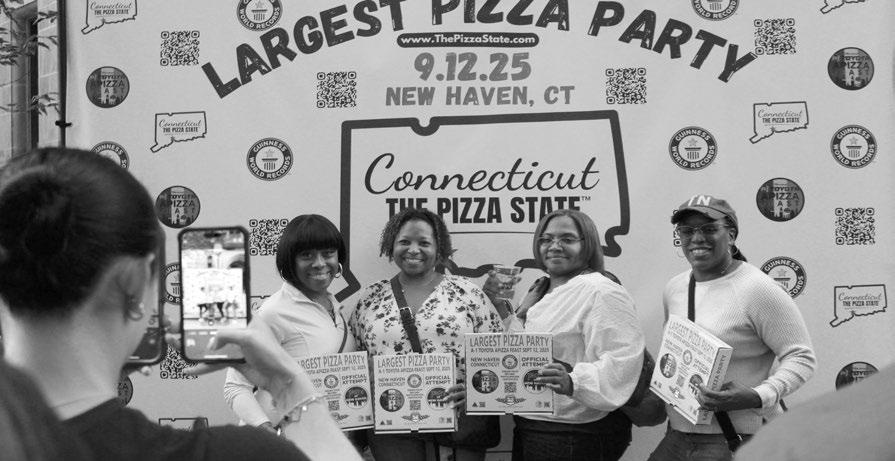
economic development administrator, cited the city’s pizza industry and other attractions as increasing interest in the city.
“Globally significant museums and the meaningful nature of innovation here in the city is driving New
“That’s one small step for a man, one giant leap for mankind.”
BY GILLIAN PEIHE FENG CONTRIBUTING REPORTER
The Yale Artists Cabaret, an undergraduate performance group, will perform in the O Broadway Theater this Friday.
“On the Verge,” will feature sixteen songs, spanning a diverse range of genre and style across the musical theater canon. Performance forms include solos, group numbers and one opening song with a full ensemble.
“The theater space of YAC has truly been so welcoming and has taught me so much about the art of performance,” performer Catinca Balasov ’29 wrote in an email.
The show is produced by executive director of the Yale Artists Cabaret Abby Asmuth ’26 and co-directed by Benjamin Jimenez ’27 and Nneka Moweta ’27.
In an email to the News, Moweta discussed the meaning of the show’s title “On the Verge.”
“Our theme this year is all about the crash out musical theater numbers and the Act 1 ending songs,” Moweta wrote.
“Iconic crash out numbers have been making a comeback lately in the musical theater world like ‘With One Look’ or ‘Sunset Boulevard’ from the musical Sunset Blvd. or ‘Rose’s Turn’ from Gypsy. It only feels right to do this theme now.”
Moweta’s interpretation was echoed by performer Angel Wilson ’29, who will be singing “Dust & Ashes” from “Natasha, Pierre & The Great Comet of 1812,” a musical written by Dave Malloy and based on Leo Tolstoy’s novel “War and Peace.”
According to Wilson, the show explores breaking points and the ways people interact with pres -
sure, elements that prompted the psychological transformation of the character he will be portraying in his song.
“While on the verge, he’s forced to evolve in a truly remarkable way,” Wilson wrote.
Balasov will be performing in the show’s opening ensemble, which she refused to spoil. She will also be singing “Dead Mom” from “Beetlejuice,” a musical by Eddie Perfect.
“Some of the greatest songs in musical theater come from points of emotional and mental breakdown — from being ‘on the verge,’” Balasov wrote. “Without spoiling too much, in my own performance, I interpret this as an unravelling of built-up tension in my character, and the song is a chance to channel that ‘snap.’”
Melany Perez ’26, the graphic designer for “On the Verge,” reflected on arranging visual elements for a cabaret show, confessing that she initially had di culty finding visual elements that fit into the show’s exploration of mental breakdown.
“Honestly it was a struggle to figure out what visual element to use that wasn’t too o -putting,” Perez wrote. Perez added that the final visual designs “focused more on not exactly depicting anger or sadness but more of a blurred emotion, an in-between.”
According to Motewa, the show’s lighting and costumes will follow a red and black color scheme, creating a dark-noirlike aesthetic. Also working as the show’s choreographer, Motewa discussed the role of dance in the production.
Experienced in choreographing for performances of a larger
‘Marseille’ explores friendship, nostalgia
BY LENA KATIR CONTRIBUTING REPORTER
Written and directed by Charlie Nevins ’25 and produced by his younger brother Jesse Nevins ’28, “Marseille” follows a group of recent college graduates as they navigate romantic tension, nostalgia and the uneasy transition into adulthood.
Charlie Nevins, a senior in Davenport College, first wrote the play for a class last year. The inspiration, he explained, grew in part from his own anxieties about life after Yale.
“It’s about people our age, played by people our age,” he said. “I hope the audience can recognize parts of themselves in it — the worry about growing up and leaving.”
Marseille captures the liminal moment between student life and adulthood, when everything feels both familiar and unsteady. The production will run from Nov. 6 to Nov. 8 in the Saybrook Underbrook, inviting audiences into a world that feels, as Nevins describes it, “a little too close to home.”
That sense of vulnerability guided the production. Jesse Nevins, who oversaw the production and set design, wanted every visual detail to deepen the sense of authenticity. An self-described interior-design enthusiast, Nevins described building the set as one of his favorite parts of the process.
“We wanted the audience to feel like they are with the characters,”
he said. “Everything — down to the choice of posters, plates, carpets and alcohol — was carefully picked.”
For stage manager Nava Feder ’27, what sets “Marseille” apart from other student theater experiences is its intimacy.
“It’s written by a Yale student who’s about to graduate and really speaks to the minds of people our age,” Feder said. “At its core, the audience will feel the vulnerability and stress the characters are going through in this stage of life.”
Beyond the visual design, “Marseille” is the product of what cast and crew members described as a deeply collaborative process. The Nevins brothers emphasized that the play evolved through conversation and active feedback, which collectively sharpened the dynamic that unfolds on stage.
The brothers’ creative partnership also shaped that environment of openness. Having grown up making movies together, the pair has developed an unspoken rhythm in their work. After staging a smaller production, “The Seagull,” in Davenport Courtyard last year, they turned to Yale’s Creative and Performing Arts program to bring “Marseille” to life on a larger scale.
“This play is production-heavy,” Jesse Nevins said. “The CPA grant gave us a lot of creative liberty.”
Saybrook College is located at 242 Elm St.
Contact LENA KATIR at lena.katir@yale.edu .
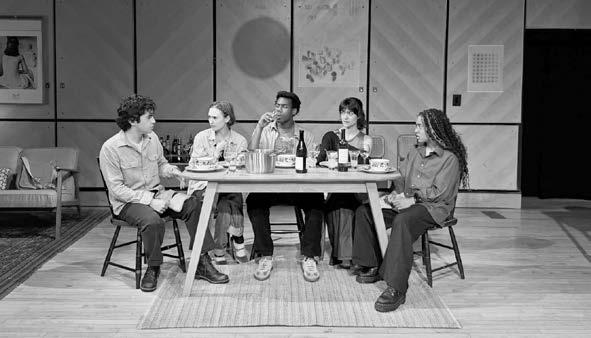

scale — such as musicals, plays or for the hip-hop group “Rhythmic Blue” — Moweta found choreographing for a cabaret show both challenging and extremely rewarding.
“For YAC, I created much more toned down choreography to better highlight the vocals and the amazing singers’ performances,” Moweta wrote. “It was honestly a little challenging for me because it’s a style that I’m not completely used to, but I had so much fun doing it.”
For Asmuth, one of the most exciting parts about doing a cabaret show is that it showcases a
‘Thriller’
wide range of talents and allows every performer their chance in the spotlight.
According to Asmuth, the Yale Artists Cabaret aims to bring people from diverse disciplines of performing arts together. Due to their productions’ relatively limited length and runs, the cabaret provides a platform for people to showcase their talents while balancing other commitments.
“Our group really aims to prioritize accessibility, collaboration and experimentation in our shows,” Asmuth said.
Balasov, who will make her Yale performing arts debut in “On
the Verge,” expressed excitement about working with the other people involved in the show.
“The first time I got to see everyone perform was in early October, and I think my mouth was hanging open in shock for the entirety of the run we did. I was just in awe of the stage presence, vocal talent and powerful performances that I got to see,” Balasov wrote.
“On the Verge” will be performed twice on Friday, at 8 p.m. and 10 p.m.
Contact GILLIAN PEIHE FENG at peihe.feng@yale.edu .
BY SOPHIA GAVIRIA PARTOW STAFF REPORTER
WA former Michael Jackson dance impersonator who studies at the Divinity School moonwalked across Cross Campus on the evening of Halloween, setting in motion the first “Thriller” flash mob to take place on Yale’s campus in recent years.
The event was organized by Gavin Susantio DIV ’26 and Charissa Lee DIV ’26 and sponsored by Yale Ballroom Dance Team. It featured 21 dancers in a minuteand-a-half-long piece, choreographed to Jackson’s “Thriller,” that repeated twice before closing with an improvised section open to dancers as well as observers.
“I saw people doing ‘Thriller,’ and I thought, ‘Oh, it would be meaningful if you do this in community,’” Susantio said before the event. “So it’s not just gonna be about me, it’s gonna be about Michael’s legacy and bringing people together.” Both of the event’s coordinators come from dance backgrounds, and they met with performers over the course of five all-group rehearsals in the Schwarzman Center dance studio leading up to the event. Susantio choreographed the flash mob and Lee directed rehearsals and coordinated logistics.
The flash mob paid homage to the annual performance of “Thriller” at a Halloween parade in New York City, following the choreography from the live-performed version of the song.
“What’s interesting about a flash mob is that it emerges and then it disappears, and it can happen anywhere,” Lee said. “There’s a sense of communal engagement and surprise. It’s fleeting, but also really special.”
Susantio opened the performance with the moonwalk, a quintessential Michael Jackson move. As he traversed Cross Campus in this fashion, over twenty dancers rushed in from the sidelines to assume formation and begin their zombie-like movements.
Susantio and Lee both said they were committed to ensuring the flash mob was accessible to students of all levels of dance experi-
ence. Nearly half of the performers had their first dance performance with the project, and many of them had been individually encouraged to join by Susantio and Lee after meeting them in di erent corners of Yale.
“I’m a perfectionist, a Michael Jackson purist, basically,” Susantio said. “So I had to decide, okay, what kind of performance would accommodate both people who are new to dance, and people who have danced for quite a bit?”
Susantio and Lee contrasted the choreographed portion of the performance with the improvised section at the end, during which dancers ushered observers onto the grass to join them. This portion merged the dance styles of Latin ballroom, K-pop, hoedown, tango and more in a showcase that highlighted what Susantio described as Jackson’s “globally minded” ethos.
Even within the choreographed section that made up the core of the performance, there was space for improvisation, and dancers were encouraged to infuse their personal styles into their movements. According to Susantio, some were more rigid and others less so; some fully assumed the zombie character while others remained humanlike.
“While there was some more complicated choreo, a lot of it was walking with a presence and being able to infuse energy into that,” Ryan Chao ’28, one of the dancers who performed in the flash mob, said. “There needs to be good energy in a dance — a lot of it is about facials and the crispness of certain moves.”
Susantio’s passion for all things Jackson emerged at the age of ten as he grew up in Indonesia, where he became a Michael Jackson dance impersonator. He said the wave of shock that took over his home country following Jackson’s death in 2009 inspired him to start listening to the artist’s music.
The first recorded performance by Jackson that he watched after the artist’s death was his 1983 debut of “Billie Jean” that was featured in the “Motown 25” television special, Susantio said.
“That’s the first time he did the moonwalk, and he literally transformed from a megastar to a leg-
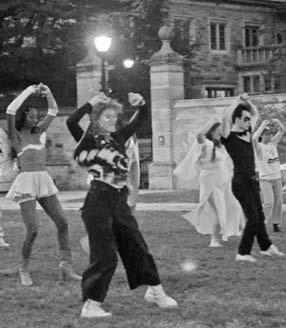
BROWN / CONTRIBUTING PHOTOGRAPHER
The performance paid homage to New York City’s annual Halloween parade.
end overnight,” Susantio said. “So when I saw the moonwalk, I thought, I want to pull o this kind of magic — I really thought it was a magic trick.”
From the ages of 10 to 13, Susantio went by the stage name Gavin Jackson and performed as part of a community of Michael Jackson dance impersonators in Indonesia. After a career as a solo performer in his teenage years, he set aside his show life to focus on academics and is only now reconnecting with his Michael Jackson origins by bringing the “magic” to Yale. He highlighted the power of Jackson’s music to bring together communities through its mass appeal, something that he and Lee wanted to replicate on campus by bringing together undergraduates, graduate students, New Haven residents and dancers as well as firsttime performers.
“There is something really beautiful about getting a bunch of strangers to dance together spontaneously,” Lee said. “There is this moment of spontaneous connection with a random person that you meet on Cross Campus that just exists for that moment.”
The “Thriller” music video premiered in 1983, and the dance has been performed at New York City’s Greenwich Village halloween parade since 2004..
Contact SOFIA GAVIRIA PARTOW at sofia.gaviriapartow@yale.edu .
“Somewhere, something incredible is waiting to be known.”
CARL SAGAN, AMERICAN ASTRONOMER
BY ANYA GEIST STAFF REPORTER
Michel Devoret woke up on the morning of Oct. 7 in Santa Barbara to unexpected news.
“I woke up at 7 in the morning, and then I saw this tra c on a cell phone and my computer, and I thought it was a joke,” Devoret said.
Devoret, a Yale professor emeritus in applied physics, had won the Nobel Prize in Physics alongside his colleagues John Clarke and John Martinis. In the 1980s, the trio worked in Clarke’s lab at the University of California, Berkeley, to prove that quantum phenomena could be observed in matter on a larger scale.
Now based at the University of California, Santa Barbara, Devoret also serves as chief scientist for quantum hardware at Quantum Artificial Intelligence Lab. The News spoke with Devoret about his career and lessons he has learned along the way.
After the Nobel Prize was announced, the media attention, Devoret said, was overwhelming.
“My profession is not rock star, it’s physicist,” Devoret said.
Still, he stressed how meaningful it was to see the field of quantum physics celebrated. The award, he said, reflected not only his work but also the contributions of countless researchers who helped build the discipline.
Devoret’s colleagues at Yale echoed that sentiment and emphasized Devoret’s value as a colleague.
“We both really enjoyed discussing physics and creating new ideas together,” Rob Schoelkopf, a professor of applied physics, said.
Steven Girvin, a professor of physics, wrote in an email to the News
that Devoret was thoughtful about his research.
“He has a very clear sense of direction in his research knowing what directions are likely to be fruitful,” Girvin wrote.
Devoret said he was honored to receive the award alongside his colleagues, Clarke and Martinis.
“I am also very pleased to receive it with two other colleagues that I hold in great, great esteem,” Devoret said. “It’s very nice to be in the company of those exceptional individuals.”
Devoret’s experiences with science began when he was young. Throughout his childhood, in France, he was interested in learning about electronics, electrical circuits and computers, he said.
“I was exactly what you Americans call a ‘nerd,’” he said lightly.
Later on, in high school, he built rockets with a school club — a formative experience that he said taught him the foundations of research.
“When we were making the rockets,” he said, “we were rediscovering things that are well known in hydrodynamics and the chemistry of combustion. We were rediscovering these things by trial and error.”
It’s important to “rediscover” existing theories, he said, because without that foundation, it becomes harder to develop original ideas later on.
Though Devoret once considered studying biochemistry, he found the physical elements of physics work — even the smell of electric soldering — more engaging than working with the chemicals of biochemistry.
“In physics, you had a wealth of little gadgets,” he said. “You could
do machining. It was a much, much more interesting environment from a tactile perspective.”
Devoret pursued his undergraduate degree in electrical engineering from the École nationale supérieure des télécommunications — since renamed Télécom Paris — before beginning his physics work as a graduate fellow at the University d’Orsay.
It was a standard path, he explained. The French education system wanted to ensure that undergraduate students pursue an applied undergraduate degree that would allow them to find employment even without a doctorate.
“A PhD is something really serious in the U.S.,” Devoret said. “It gives you intellectual freedom in a company. It remains unfortunately underappreciated in France.”
Still, Devoret enjoyed the work his PhD enabled him to do in France. After spending 25 years working in a French government lab, he moved to the United States, first joining Yale and later moving to Santa Barbara.
Lessons from a laureate
Over the decades, Devoret has distilled key lessons that have shaped his work and attitudes throughout his career.
One of the most important things in academia, he thinks, is the ability to work well in a group setting. His appreciation for teamwork began at age 18, when he worked as a counselor at a summer camp. He believes that experience informed the way he cooperates with colleagues and peers now.
Working in different countries and at different universities, Devoret has also learned to appreciate when his work is going

well and when is the right time to move on to a new opportunity.
“You should never, never wait until things degrade to leave,” Devoret said.
As a professor, Devoret often advises graduate students to learn from their own mistakes and those of others, so they do not repeat them.
He also emphasizes attention to detail. He is a stickler for neat PowerPoints, he said, and correctly labeled graphs. Such precision, he said, conveys professionalism and lends credibility to scientific work.
His approach to research has always been very purposeful.
Research should not be like a “hammer in search of a nail,” he explained — developing a tool and then looking for a problem to solve with it.
Instead, research should start with a specific problem and build a mechanism to solve it.
“The question would be, what kind of metallic object can I make that would make two pieces of wood
be connected to each other?” he said.
At the University of California, Santa Barbara, he continues to study quantum sensing, exploring new analysis techniques that probe matter on an atomic level. In contrast, his work at Google focuses on advising the company as it moves into a quantum age.
As for the future of quantum technology, according to Devoret, “technology forecasting is even harder than forecasting the weather.”
Though he noted that some technologies have grown and died within a few decades, he believes that quantum technology has a “bright future.”
“This field that we started has interested a lot of people,” Devoret said, reflecting on his career. “They have made fantastic contributions.” Devoret became a Yale professor in 2002.
Contact ANYA GEIST at anya.geist@yale.edu.
BY EDIS MESIC AND MICHELLE CHEON STAFF REPORTER AND CONTRIBUTING REPORTER
A recent study from the School of Medicine found that physicians today are leaving medicine more than ever before.
The nationwide analysis of over 712,000 physicians revealed that physician attrition, the rate at which doctors leave their clinical practice, has increased substantially across specialties over the years studied.
“Our results demonstrate increasing physician attrition across the workforce, across specialty groups, regions, and in both rural and urban settings,” Lisa Rotenstein, the study’s first author and a professor at the University of San Francisco wrote in a statement to the News.
Cameron Gettel, the co-director of the Yale Emergency Scholars Fellowship for Emergency Medicine, traced the start of the team’s work to a project that investigated the di erence in age of attrition between men and women in the emergency medicine workforce.
The initial project took place around the time of the COVID-19 pandemic, which Gettel described as a “trying time” with many pressures on the medical system that caused some physicians to reconsider their decision to practice medicine.
The preliminary study found that women tended to leave the emergency medicine workforce in their mid-to-late 40s and men in their mid-50s, and that the age was getting even lower over the years studied.
The next question for the team was to look at whether the trend in decreasing ages of attrition extended to other specialties as well.
“A common question I got when I was presenting that report was, ‘Well, is emergency medicine unique? Are we bad actors? Are we the ones quitting super early or leaving?’” Gettel said.
What the team found was that from the start of the study in 2013 to 2019, the proportion of physicians quitting their jobs across all specialties, geographies and genders is increasing.
Looking ahead, Rotenstein wrote that the next area for study is examining where physicians are going after leaving clinical practice and how the phenomenon of part-time practice factors into the equation.
For Gettel, the results reflect a systemic issue, rather than certain individual problems in healthcare.
“I think that takes some thought about how to reimagine the healthcare system, to make it more tenable, to make physicians work and provide the care that we need given all the projections of the position shortages in the coming years,” he said.
Gettel added that one of the more challenging aspects of researching physician attrition can be navigating findings that are less popular.
He explained that his initial work in emergency medicine directly contradicted and disproved studies from years prior that estimated a surplus of emergency medicine doctors.
“It’s important to shine light on those things that need to be

addressed but it can also be sort of challenging beating the drum of what’s wrong in the system.
It’s important to do, but that’s been challenging as well to grapple with that in these past few years,” Gettel said.
Gettel emphasized that the team hopes their work will help inspire positive change across the healthcare system.
In terms of solutions to mitigate burnout and other factors involved with rising rates of attrition, Rotenstein mentioned that institutions could pay careful attention to groups, such as female or rural physicians, that were found to be at increased risk for attrition.
She also noted that institutions can rethink and reshape the environment of clinical practice.
“Studies have demonstrated common factors that can improve the physician experience, including enhanced team support for practice, provision of technology that can reduce documentation burden, a strong culture of safety and mentorship,
and leadership support,” Rotenstein wrote.
Kristine Olson, a national thought leader on professional worklife wellbeing, recommended employee assistance programs with mental-health providers; trained peer supporters who understand the clinical context; access to certified coaching and reliable mentorship and executive sponsorship. In her view, those structures are the precondition for tackling burnout factors that can nudge clinicians toward part-time roles or out of clinical practice.
Looking into the future, Olson wrote that “the organizations who make professional wellbeing their top priority will be resilient and endure any challenges they may face.”
The study was published in “Annals of Internal Medicine” in October.
Contact EDIS MESIC at edis.mesic@yale.edu and MICHELLE CHEON at michelle.cheon@yale.edu.

FROM PAGE 14
Captain Halle Sherlock ’26 led the team in all of those categories. Against the Crimson, Yale found success by protecting the serve. Harvard often found themselves out of system, which made their offense predictable and errorprone. They had double the number of attacking errors as the Bulldogs.
On Saturday, the Elis will play Dartmouth. When the teams met on Oct. 17, Yale overpowered the Big Green in a dominating fashion, 25-14, 25-13, 25-21. Laurece Abraham ’27 was a force at the net, racking up 14 kills and four blocks. Arya Jue ’27 picked up 17 digs in the back row, keeping the Bulldogs in the match.
The Bulldogs minimized their errors in that game, with only nine attacking errors compared to Dartmouth’s 17. Multiple players went on service runs with strong serves, allowing for Yale’s o ense to capitalize on easy returns by the Big Green.
Yale will look to repeat those performances this weekend on the road.
The first serve against Harvard is slated for 7 p.m. on Friday.
Contact RACHEL MAK at rachel.mak@yale.edu.

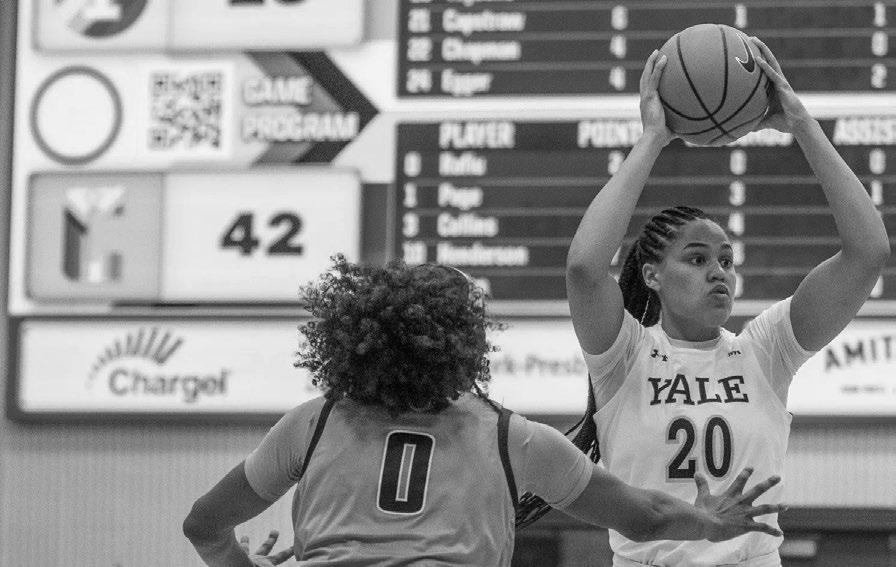
class for their work ethic and skill during the preseason.
“They’re really skilled players who are ready to make an impact this season,” she said.
The Bulldogs’ first-year class includes three guards, Olivia Kim ’29, Hannah Wasserman ’29 and Radhika Garapaty ’29, and two forwards, Dorka Kastl ’29 and Sophia Gibson ’29, who are 6’2 and 6’4, respectively.
The Bulldogs further strengthened their frontcourt through the transfer portal, adding 6’5 Mary Meng ’27 from Michigan State and 6’1 Luisa Vydrova ’27, who started at the University of Texas at El Paso last season.
“We’ve been able to add a veteran group of post players, Luisa and Mary, who are both extremely talented, smart, and lead some of the younger girls,” Capstraw wrote.
Both Vydrova and returning sophomore Schmidt spent the summer competing internationally for their respective national teams — Vydrova with Czechia and Schmidt with
Austria — gaining additional experience through European play before returning to New Haven. Schmidt said that her time playing 3-on-3 basketball for the Austrian national team helped her develop under faster-paced, highlevel competition.
“It gave me a lot of valuable game experience and helped me improve my ability to make the right reads in a very fast-paced game of basketball,” she said.
Schmidt said she hopes to bring that same deliberate court vision to Yale’s o ense this season by working not only to get herself open as a shooter, but also to create opportunities for her teammates through intentional cuts and screens.
The Elis will face off against Northeastern in their season opener at home Friday evening.
Contact AZARA MASON at azara.mason@yale.edu and TANNER BATTLE at tanner.battle@yale.eduBy Liza
MEN'S HOCKEY FROM PAGE 14
Yale,” he wrote in a text message.
Heading into the Friday night matchup, the Bobcats have time on their side because they have been competing since Oct. 3. Quinnipiac will enter the matchup following a 2-0 victory over the University of New Hampshire (3–4–0, 1–2–0 Hockey East) and a 2-2 double overtime tie to Alaska-Fairbanks (2–8–1, 0–0–0 Independent).
Over the weekend, Yale’s men’s hockey team lost its first game to Dartmouth in Hanover.
Last season, the Bobcats made a long post-season stretch in the ECAC Tournament, defeating Brown 4-1 and 4-0 in the quarterfinals to advance to the semifinals, where they ultimately fell to Cornell 3-2 in overtime. Cornell then went on to win the tournament, downing Clarkson 3-1 in the finals.
The Bobcats have already proven themselves to be a top opponent this season in the ECAC conference, after being picked to win the 2025-26 campaign first in the 2025-26 ECAC men’s hockey preseason poll. The team has already secured out-of-conference victories over high-profile teams, including Boston College (2–4–1, 0–2–0 Hockey East), Notre Dame (3–4–1, 0–2–0 Big Ten), the University of Maine (5–2–1, 2–0–0 Hockey East) and Holy Cross (3–5–1, 3–1–1 AHA).
First-year forward Ethan Wyttenbach leads the Bobcats’ o ense with 10 points from five goals and
five assists. Veteran players Jeremy Wilmer and Chris Pelosi have also proved to be powerhouse shooters for Quinnipiac, each tallying five goals this season. Goalkeepers Dylan Silverstein and Matej Marinov have anchored the Bobcats’ defense, boasting 91.1 percent and 90.4 percent save percentages, respectively.
Although Quinnipiac will be a tough team to beat, the Elis say they are not deterred and are using practices this week to refine their skills before Friday night.
“This week, we are primarily focused on dialing in on our habits and the foundations of our team identity: pace, pressure, and puck battles. The more these habits become second nature, we believe the offense and creativity of our team will take over games,” Chen wrote to the News.
Hartmann added that the defensive unit has emphasized cleaner puck movement after struggling to exit the zone against Dartmouth.
“Our defensive structure could use some work as always, but really our focus has been on our ability to manage the puck,” Hartmann wrote to the News.
“We fed Dartmouth’s transition game with our timid breakout mentality – a mistake that we won’t be making against Quinnipiac. Similar to Dartmouth, Quinnipiac plays a quick transition game and is tenacious on the forecheck. We need to be able to counter their pressure early to be able to set our tone for the game.”
Hartmann said the Bulldogs’ goal is to play more decisively out
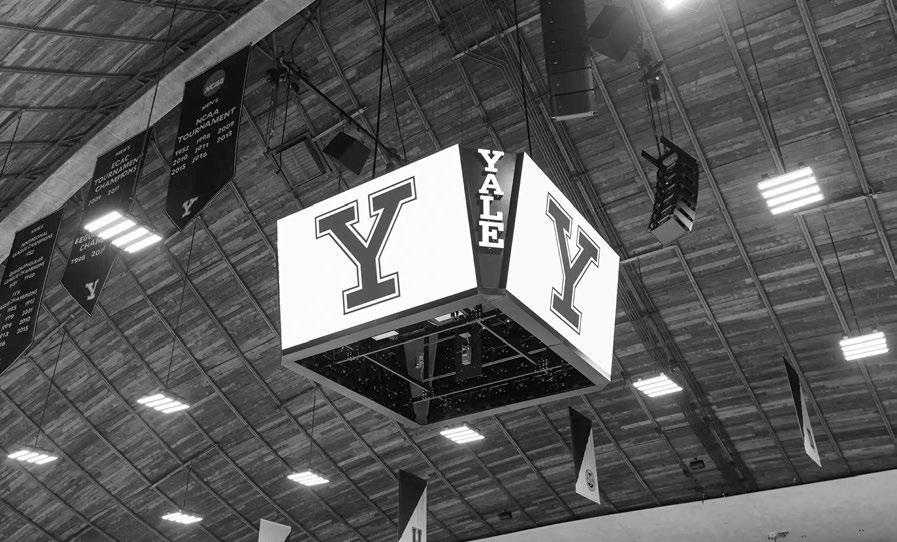
of their own zone and prevent the Bobcats from generating fastbreak chances off turnovers.
After the War on Whitney, the Bulldogs will return to the ice the next night to host Ivy rival Princeton.
The Tigers already have two victories under their belts, having downed Alaska-Fairbanks (2–8–0, 0–0–0 Independent) in a twogame homestand last weekend. Before driving to New Haven, the team is set to play Brown (0–2–0, 0–0–0 ECAC) on Friday night. Princeton finished last season with a losing record (12–15–3, 7–12–3 ECAC) and concluded post-season play with a 2-3 loss
to Brown in the first round of the 2025 ECAC Tournament. The Tigers welcome back last year’s top three scorers: Brendan Gorman, Jake Manfre and Jaxson Ezman, who led the team with 12, eight and seven goals, respectively. This season, the three have already proven their dominance on the Tigers’ line, putting up seven of Princeton’s 11 goals this season. In the net, Arthur Smith has blocked 90.2 percent of shots, only giving up five goals this season. With home advantage on their side, the Bulldogs will look to upset No. 1 and No. 8 pre-season favored teams. The Bulldogs
were ranked last — No. 12 — in the ECAC preseason poll.
“The home crowd always brings extra motivation and energy for us on the ice. Hearing all of the support from our fans in Ingalls is a special feeling every time we play at home,”
The Bulldogs will drop
“Don’t even try to talk to me when I’m watching the moon. That’s my moon, baby.”
WENDELIN VAN DRAANEN
BY KAMALA GURURAJA AND ANAYAH ACCILIEN CONTRIBUTING REPORTERS
Tarek Al Husseini ’28 is the youngest of twelve competitors on Season 12 of the Food Network’s “Holiday Baking Championship,” which premiered on Monday night.
The show, which splits bakers into “Naughty” and “Nice” teams, has a prize of $25,000. Al Husseini, a sophomore, applied to the Holiday Baking Championship over the winter break of his first year and is the show’s only non-professional baker.
“I know how to play the game,” Al Husseini said.
Filming took place in Los Angeles over the summer. The head baker for Yale Pop-Up, a cooking club on campus, Al Husseini previously appeared at age 13 on Season 7 of the Food Network’s “Kids Baking Championship,” where he was the runner-up.
“Holiday Baking Championship” consists of eight weekly Monday night episodes at 8 p.m., with one person ultimately crowned Holiday Baking Champion.
Al Husseini had wanted to do another baking show after the Kids Baking Championship. While he did not compete on any baking shows in high school, he consistently baked, selling multiple cakes a week in the lead-up to college.
Al Husseini was prompted to apply to another baking competition show because one of the producers that observed him on the Kids Baking
Championship reached out to him personally. “I remember one of them asked me, ‘How old are you?’” Al Husseini recalled. “And when I said 18, he said, ‘Have you ever considered applying for the adults show?’”
To prepare, Al Husseini memorized many of his base recipes and important ratios, which he could then modify during the competition. He also did many practice bakes every day in the week leading up to the competition.
Al Husseini said he initially felt that the older bakers questioned his capabilities. But, he added, “at the end of the day, I can’t blame them for that, because I would also be skeptical of a 19-year-old who isn’t professionally trained either.” Al Husseini ultimately grew very close with the other bakers, noting that they have a very active group chat to this day.
At Yale, Al Husseini is majoring in Economics and Global A airs. He spends time outside of the classroom as the head baker for Pop-Up, a biweekly fine-dining experience.
Anika Shethia ’27 works with Al Husseini on the Pop-Up baking team. She remembered interviewing him for the club during his freshman year at Yale.
“He was super committed. He’d already done the Kids Baking Championship,so we were like, ‘Oh, he’s definitely very skilled.’ We ended up taking him on the baking team, and he turned out to be more skilled than I even thought,” Shethia said. Pop-Up models its audition pro-
cess on “Chopped,” another wellknown cooking contest shown on the Food Network. Shethia added that the group created the role of head baker for Al Husseini specifically.
Roxy Jones ’29, a new member of the baking team, said that beyond being an amazing baker, Al Husseini is “an even more amazing mentor and friend.” Al Husseini has taught Jones how to take basic ideas and turn them into something that will appear on the next Pop-Up menu.
“He’s just so original,” Jones said. “He doesn’t have that Gordon Ramsey ego,” Jones added.
Shethia furthered that Al Husseini is a leader who takes action, advocating for more Pop-Up funds to be dedicated to the baking team.
Al Husseini said he has enjoyed the opportunity to be innovative thanks to Pop-Up’s creative freedom.
“I remember at one of the openings, someone came up to me and was like, ‘I’ve been to a lot of Michelin-starred restaurants, I’ve had a lot of Michelin-starred restaurant deserts, but this one is much better than a lot of the ones I’ve had,’” he said.
Looking forward, Al Husseini said he hopes to combine his passion for baking with his other interests.
“Baking is not something I want to have as a career because in past experiences I’ve had selling stu in high school, I got extremely burnt out, and I started kind of losing interest,” he said.
He pointed to the grueling hours and lack of job security as
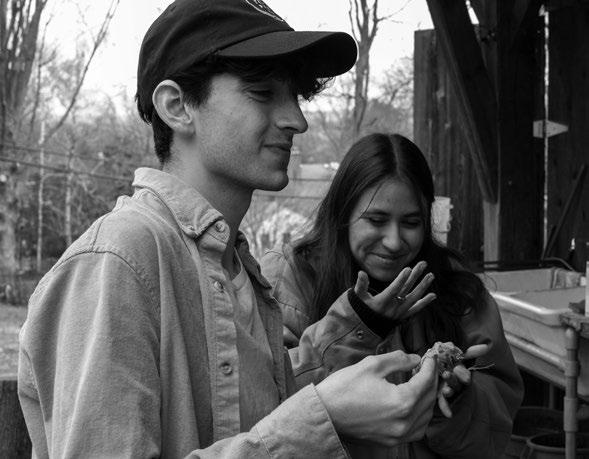
other downsides of being in the baking industry.
“I definitely want to do something that’s related to food in some capacity,” he said. “Anything from restaurant consulting or investment banking working with food companies, consumer retail, a jump into food entertainment or publishing a cook book.” Al Husseini also emphasized the valuable professional connections he made with his competitors on “Holiday Baking Championship.”
“Every single one of them has offered, if I ever want to jump in the industry, I am welcome to text them and I could have a job in their kitchen,” he said.
The first episode of the series featured a challenge where Team Nice team made hot desserts and Team Naughty team made cold ones.
Contact KAMALA GURURAJA at kamala.gururaja@yale.edu and ANAYAH ACCILIEN at anayah.accilien@yale.edu.
BY HANNAH LIU CONTRIBUTING REPORTER
Students gathered on Tuesday for a “teach-in and donation drive” at the Afro-American Cultural Center, known colloquially as the House, to hear three experts speak on the humanitarian crisis in Sudan.
The event was hosted by the Yale chapter of Delta Sigma Theta Sorority, Inc., a historically black sorority, in collaboration with the Sudanese Student Association at Yale and the Yale Black Muslim Students Association. It featured three speakers, two who spoke in-person and one via zoom. About 40 students attended.
“As a student in a space like Yale that comes with a lot of power and privilege, it’s our responsibility to pay attention to these humanitarian disasters,” Maryam Abbas ’29 said
in an interview. “I believe there’s a lot of power in student organizing and taking action. When we’re seeing one of the worst humanitarian crises and famines in the world, really understanding these situations is important.”
Host and moderator Ryen Eley ’27 opened with a brief overview of Sudan’s history and the recent conflict. Per Eley’s presentation, Sudan experienced various civil wars in the close of the 20th century, the creation of South Sudan and the war in Darfur, which lasted from 2003 to 2005 and resulted in the genocide of over 300,000 people by the Janjaweed, a Sudanese military group.
After the Sudanese revolution in 2019, the current power struggle between the Rapid Support Forces, which grew out of the Jan-
BY JOLYNDA WANG AND MADISON AGUILAR CONTRIBUTING REPORTERS
The Yale College Council Senate on Sunday passed a revised version of a previously proposed statement denouncing the University’s November 2023 distribution of a $1 million donation to the Friends of the Israel Defense Forces through a donor-advised fund.
In September, the Endowment Justice Coalition criticized Yale for the donor-advised distribution in an Instagram post. The Friends of the Israel Defense Forces, or FIDF, is a nonprofit that supports Israeli soldiers through financial, educational and well-being programs, according to its website.
Three weeks ago, the senate voted for the first time on the initially proposed statement, which ended with a tied vote of 12-12 and four abstentions in the first round of voting. Vice President Jalen Bradley ’27 abstained from casting a tiebreaking vote, ultimately leading the proposal to fail.
On Sunday afternoon, through an anonymous vote, 19 senators voted in favor of issuing a revised public statement, while seven voted against condemning Yale’s donation to the organization.
The revised statement now calls on Yale to “adopt an ethical standard for approving donoradvised distributions” that “would prohibit financial support to any organizations implicated in genocide, apartheid, ethnic cleansing, scholasticide, or other human rights violations per the United Nations and International
jaweed, and the Sudanese Armed Forces, erupted in April 2023, resulting in displacement, crisis and violence towards civilians, Eley said in her opening speech.
Caitlin Howarth, the director of conflict analytics at Yale’s Humanitarian Research Lab, spoke about what her team at the HRL is working on, which includes the use of satellite imagery in the conflict and lab reports accessible to the public.
“This is a culmination of the genocide that began in the early 2000s,” Howarth said. “It’s never been more important for people to be not just inventive, but to think creatively about how to build that infrastructure within ways that cannot be easily torn down.”
Ellen Bevier, a senior humanitarian policy advocate at the international humanitarian aid orga -
nization CARE, spoke about the conflict from the perspective of the humanitarian aid sector.
“It’s a moment that requires us to practice responsible system citizenship, both here and around the world,” Bevier said. “We must see the su ering of our fellow humans and rise to meet it in the ways we can, by fundraising, by spreading their awareness, and holding our policy makers accountable.”
Eman Salih, postdoctoral associate from the Yale School of Public Health, shared her personal experiences relating to the conflict, having served in Sudan as the director of bilateral and multilateral relations at the Ministry of Health.
She also noted the growing crisis of gender-based violence in Sudan, the prevalence of preventable diseases and the importance of using
social media to raise awareness about the crisis.
“I’m so proud to see this room full of young people standing for Sudan,” Salih said. “I was there during the revolution, and I have seen what young people are able to do.”
Following the speakers’ presentations, students asked questions about ways to advocate for Sudan. Attendees also were invited to donate money to aid organizations and access templates to write letters to their government representatives.
The event is part of the sorority’s broader Delta Week programming, which also includes a film screening, a book drive and a college financial literacy panel.
Contact HANNAH LIU at hannah.liu@yale.edu.
Court of Justice.”
The original public statement called on the University to “issue a formal statement of accountability” and “commit to rejecting future donor-advised distributions” to organizations implicated in “genocide, apartheid, ethnic cleansing, or other human rights violations.”
The revised statement also urges Yale to “act upon the results of last year’s studentwide referendum.” In December 2024, the YCC announced that a majority of students voted in favor of a referendum calling on Yale to disclose and divest from its holdings in military weapons manufacturers and act on its commitment to education by investing in Palestinian scholars and students.
At Sunday’s meeting, students gave public statements supporting and opposing the revised public statement. On Saturday, Yalies4Palestine posted an Instagram story urging followers to attend the YCC meeting and show that “students are in support of passing its statement on Yale’s Donation to the Friends of the IDF and Future DAF contributions,” referring to donor-advised funds.
During the student commenting period, Gabi Bellin-Schonfeld ’29 said that voting in favor of the proposal would give the “student body the power to make subjective judgments of what does or does not align with Yale’s moral standards.” He said it would set a “precedent for limiting free expression and negatively impact the same Yale students you represent.”
“With the passage of this bill, you poke the bear that is the Trump administration and invite them to cut funding for research, block student visas and heavily fine the school for ‘antisemitic and anticonservative actions,’” he said.
Another student, Elijah Wiesel ’28, urged senators to vote against the resolution and not issue a statement of “moral posturing.” He cautioned against the senate turning political disagreements into resolutions, which he said would weaponize the student government and further divide the student body.
Diego Loustaunau ’27, an organizer with the Endowment Justice Collective and a sponsor of the public statement proposal, spoke about Yale’s responsibility as “legal custodian” of the donor-advised funds since the university has “veto power over what non-profits were eligible to receive that donation.”
“In my time at Yale, I watched taxpayer dollars fund the bombs to destroy every university in Gaza, and I can now only wonder whether Yale put the pilot in the cockpit,” he said.
Hassaan Qadir ’26, another sponsor of the proposal, emphasized that the statement would set an example for Yale students, Yale student organizations or other University administrators that “follow Yale’s endowment and donation policies.”
Benjamin Barkoff ’27, a senator from Trumbull College, said that he would vote against the statement and voiced
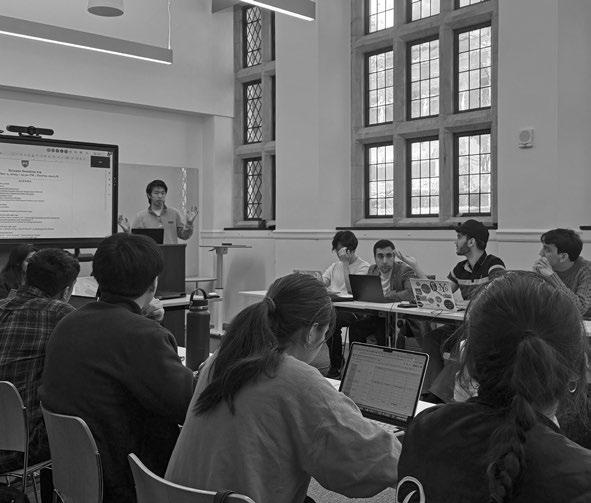
concerns about setting “a very dangerous precedent for an organization that’s meant to improve student life.”
“Once we start condemning things, it means if we don’t condemn them, we passively support them,” he said.
After debate, the senate passed the proposal, which instructs the YCC president and communications director to publish the proposed statement on behalf of the YCC and communicate it to “relevant University o ces.”
Loustaunau said in an interview after the proposal passed that the
student turnout at the meeting and the passage of the proposal demonstrate the strength of student movements on campus.
“More and more students are recognizing that Yale has harmful policies, which must be subject to reevaluation and change,” he said.
A donor-advised fund at Yale requires a minimum initial gift of $5 million, according to a webpage on Yale’s For Humanity campaign website.
Contact JOLYNDA WANG at jolynda.wang@yale.edu and MADISON AGUILAR at madison.aguilar@yale.edu.
“You’ll be my rise and shine soon as them stars align.”
BY OLIVIA CYRUS STAFF REPORTER
An image of a white bulldog holding a crew oar, and a desire to become the fastest-growing collegiate brand, catalyzed the founding of the clothing brand Crew Dog.
The clothing line was conceived in April 2023, when London native Constantine Polychronopoulos ’25 was in his second season as a member of the Yale lightweight crew team. At the time of its founding, co-owner Polychronopoulos dubbed the creations neither a business nor a brand.
“It was literally a side project for the team around the race season in the spring, where we were going to do a group order for merch and a bunch of the guys, especially, wanted something different,” Polychronopoulos said.
“Different,” in this case, meant prioritizing understated fashion rather than loud “Yale Crew Team” or traditional emboldened logos, Polychronopoulos said. The high-quality merchandise involves putting premium large scale embroidery on otherwise blank garments. He hoped to provide members of the team identifiable athletic
clothing that could also be worn in travel, professional or leisurely settings.
Nearly every member of the team purchased the clothing, Polychronopoulos said. News of the “side project” quickly spread, with requests for similar merchandise from the varsity swim and baseball teams and other student organizations.
The Shopify contact form he used to sell the clothing soon gave way to a full-fledged website, and that was when Polychronopoulos decided to call the brand Crew Dog.
Co-owner Coby Wagonfeld
’26 began his involvement with the company and Polychro -
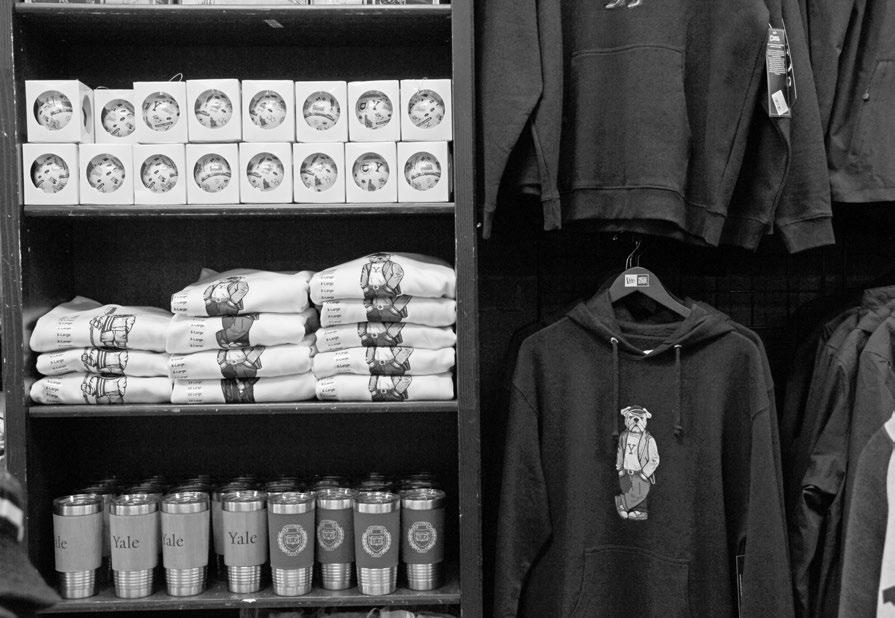
nopoulos, whom he refers to as Tino, shortly after it put up its storefront in August 2023.
“A mutual friend introduced me to Tino and at that time, Tino really realized that there’s a proper concept here and that the success at Yale could work at a bunch of other schools,” Wagonfeld said. “From our first lunch, we were like, ‘Oh, this would be a super fun project to work on.’”
Wagonfeld, currently a student, said that balancing his undergraduate workload with the thriving company is “not the easiest at times.” However, he said his main priority is the business.
Schoolwork sometimes takes a bit of back seat until midterm season, and then he has to “lock back into school,” he explained.
Wagonfeld, though, intends to work on the company full time after graduation, joining the recently graduated Polychronopoulos.
“College apparel is so concentrated between a few huge companies that have kind of forgotten about the consumer, whether that’s students or alumni, and focused more on profit,” Wagonfeld said. We feel like there’s a way to do both and make really cool stu When people think, ‘I want to buy something for my college,’ we want them to think of Crew Dog.”
In February, the company received its first retail placement and pursued buying consortia such as Barnes & Noble. In just a few months, Crew Dog grew to more than 40 bookstores and larger retailers, according to Wagonfeld.
Eight to nine months after the company’s inception, many of the order forms were handled by Polychronopoulos, who would spend his weekends dallying with the form and confirming orders.
By the end of 2024, the company sold approximately 12,000
units of clothing. This year, Wagonfeld estimates that it will sell closer to 37,000 through three revenue streams: direct to consumer, group orders and from bookstores. Currently, embroidered tees sell for about $45 on the company’s website; crewnecks go for nearly $100.
The pair, along with their 12 full-time staff members, sell hand-drawn images of everything from well-dressed Boston University terriers to dapper University of Washington huskies.
“Consumer apparel is hard,” Wagonfeld said. “At every touch point, there’s potential human error. You’re producing a physical project, and especially in the collegiate space, there are a lot of regulations around what you make. So it’s not a very easy space, but it’s even more rewarding because of that.”
The duo will have their first official merchandise drop on Saturday, with their Yale-Harvard game collection — a contrast with their other clothing, which showcases one school. The collection will remain available for two weeks and is inspired by Harvard and Yale archival magazines, Polychronopoulos said.
“There’s so much meaning you can pack into a shirt, you have memories around it, where you bought it, when you wore it, who you were with,” Polychronopoulos said. “We’re trying to put all of that heritage into a broad collection that really speaks to every kind of fan and potential consumer and give people unique, meaningful apparel that isn’t offered for the Game.”
The first Yale-Harvard football game was in 1875.
Contact OLIVIA CYRUS at olivia.cyrus@yale.edu.
BY OLIVIA CYRUS AND HAILEY YOUNG STAFF REPORTER AND CONTRIBUTING REPORTER
Morse Head of College Catherine Panter-Brick got her mini shepherd Rio in 2019 after a sustained campaign from students asking her to get a pet. Noting that other heads of college had dogs, the anthropology professor said that she received relentless emails from students for nearly a year asking her the same question: When are you getting your dog?
She eventually yielded.
Panter-Brick’s fun-loving fido isn’t alone — several other administrators credited their dogs with bringing stress relief and liveliness to campus. While Handsome Dan receives his flowers as Yale’s mascot, other administrator-owned pups have made appearances at college teas, commencement and fall festivities.
Administrators across campus said that aside from providing companionship, their dogs help ease student stress and foster a sense of belonging and community with students. The presence of these flu y companions, they said, has helped brighten admin-
istrative spaces and form connections with students.
“You and I can go through the day performing really well, but this animal just makes you feel wonderful because he’s so happy to see you,” Panter-Brick said, adding that she was inspired to adopt the dog because some students missed their own pets.
Having made appearances at intramural soccer games, family receptions and teas, Rio has become a college staple, Panter-Brick said, with students attracted like a magnet to “his beauty and steadiness.”
The dog takes its name from the Rio Grande, where Panter-Brick was doing field work along the border between the United States and Mexico at the time of his adoption. She said having Rio “chills everybody out” and makes the college experience feel more like a home.
For other administrators, dogs have become an extension of their work and how they build community with students outside of the office.
Dogs Winston Aloysius Farley and Maxine Shaw are “the light” of Matthew Farley’s heart. As an assistant director of the Yale LGBTQ Center, Farley attributes the pair to
relieving the “stress and tension” he encounters on campus.
Farley, who previously worked with K-12 students, often brought Winston with him for work. He said he hopes his pooches can bring joy to Yale, where students can take them for walks.
“I want to make sure that anywhere Winston and Maxine are, they’re able to touch at least one person or change one person’s day, because once that person’s day is changed, that affects their whole day and environment,” Farley said. “And that’s what they are here for.”
In residential colleges, deans and heads of college use dogs to create spaces of belonging.
Fubá, the dog belonging to Berkeley College Dean Bárbara Cruvinel Santiago ’17, is a “3-year old goofball,” doubling as the “Berkeley Dean of Paw airs,” Cruvinel Santiago wrote in an email to the News.
The pup is an English cream golden retriever Cruvinel Santiago got three years ago while studying at Columbia University. She raised Fubá in a shared apartment in Manhattan and often took him around Columbia’s campus and on the subway.
At Yale now, Fubá has become a

close companion to students walking into Cruvinel Santiago’s o ce and experiencing stress or sadness.
“It’s almost a daily occurrence that someone comes into the o ce looking for him and not anyone else,” she wrote. “These students just want a moment of peace and some cuddles to feel better during a particularly stressful day; it also gives them an excuse to come to the o ce and open up if something is wrong.”
Cruvinel Santiago also admitted that Fubá has given her a lens into student life that she may not have had otherwise. She’s noticed students often stopping her on her walks with Fubá to confide in the pair details about their lives.
Handsome Dan was first dubbed Yale’s mascot in the early 1890s, making Yale the first American college with a living animal as a mascot, according to a University article.
Contact OLIVIA CYRUS at olivia.cyrus@yale.edu and HAILEY YOUNG at hailey.young@yale.edu.
BY JOLYNDA WANG CONTRIBUTING REPORTER
Timothy Snyder, a prominent European history scholar who taught at Yale for more than 20 years, gave a lecture Monday on European rearmament with Andrew Peek, who previously directed European and Russian affairs at the National Security Council.
In the spring, Snyder and two other prominent professors — who have all been vocal critics of President Donald Trump — left Yale to teach at the University of Toronto. Jason Stanley, a philosophy professor, said in March that he left because of the “political climate,” while Snyder and Marci Shore, Snyder’s wife, attributed their depar -
tures largely to family matters.
Snyder wrote in a News opinion article that he was “not fleeing anything” because of Trump and instead left Yale for “matters that are of no public interest.”
Snyder still retains connections to Yale. He is currently a visiting professor at the Jackson School of Global A airs and the faculty advisor to the Fortunoff Video Archive for Holocaust Testimonies, he wrote in April.
At the lecture, Snyder and Peek shared opposing viewpoints on several topics, including the adoption of modern warfare, NATO’s role in European security, the Ukraine war and United States-Europe relations.
“The Americans have a traditional complaint, which is that we spend all the money and we do all the
work,” Snyder said. “But right now, the Ukrainians are doing all the work. They’re fighting the actual war.”
Peek praised Trump for being an “excellent diplomat” and creating “concrete policy objectives,” considering the uncertainty in Europe. Peek said that the president’s policy of lowering oil prices has put pressure on Russia and allowed the United States to “position itself” as a “mediator role” in the Ukraine war. Snyder asserted that “the world champion is not the United States” but instead is Ukraine, which Snyder said has “been spending far more on defense than anybody.” He said the purpose of defense spending is to deter and combat war.
This lecture was part of the Blue
Center for Global Strategic Assessment’s series, which features government or industry practitioners and Yale professors co-lecturing on statecraft. The practitioners share their policy experience, while the professors contribute their researchbased insight to the discussions. Snyder, in an interview after the lecture, expressed his appreciation for the format of the lecture, which allowed each side to present their perspectives, followed by questions from the other lecturer.
Lily Engbith ’17 SOM ’24, a former student of Snyder’s, described Snyder as “one of the most important intellectuals in his appeals” in an interview before the lecture.
Ethan Chiu ’26 JGA ’27 said he wanted to take Snyder’s “Hitler, Stalin, and Us” class but was unable to before Snyder left Yale.
“I’m grateful that he is still here and able to share his opinions,” Chiu said about Snyder’s lecture.
During his time at Yale, Snyder helped found the Jackson School.
Nico Kasparetz, a visiting doctoral student, said that a factor for many who applied to the Jackson School was the opportunity to interact with Snyder.
“I know two students who applied, hoping to be supervised by or talk to Snyder, so it’s really good that he keeps coming back here,” he said.
The Jackson School launched the Blue Center for Global Strategic Assessment in August 2024.
Contact JOLYNDA WANG at jolynda.wang@yale.edu.

Contributing Photographer
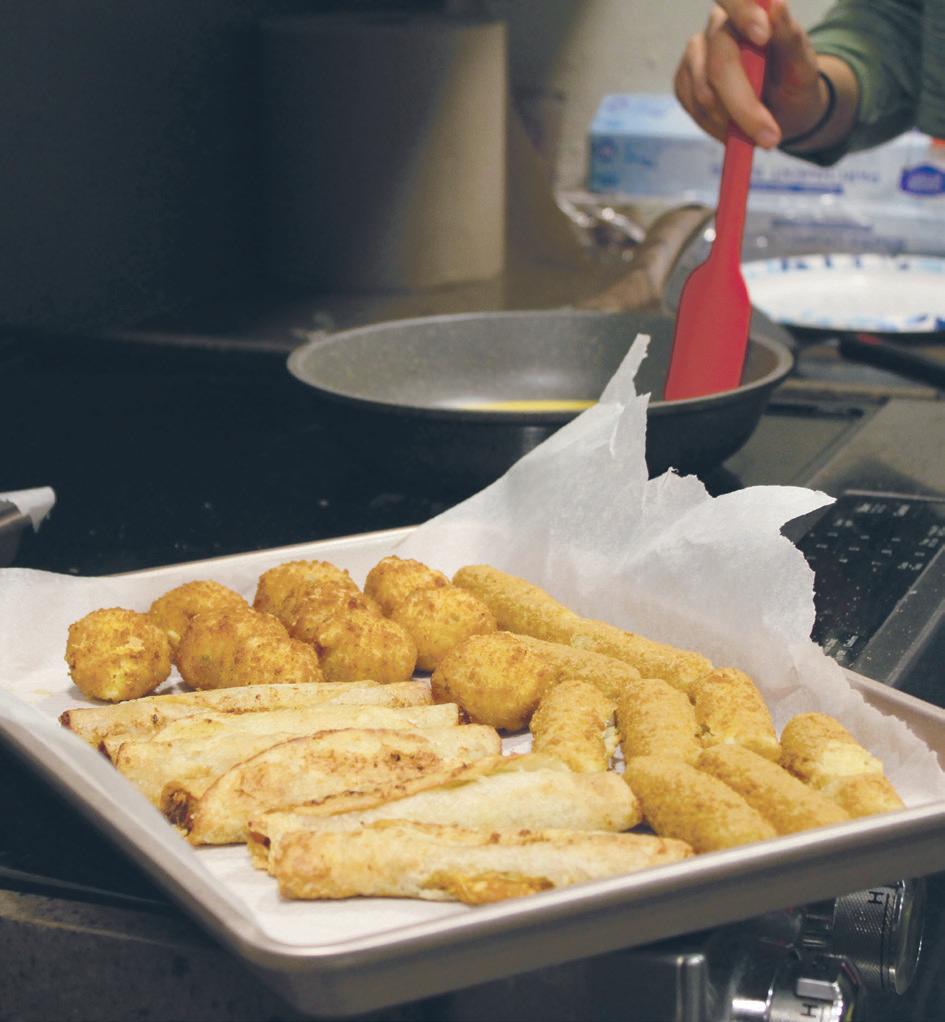
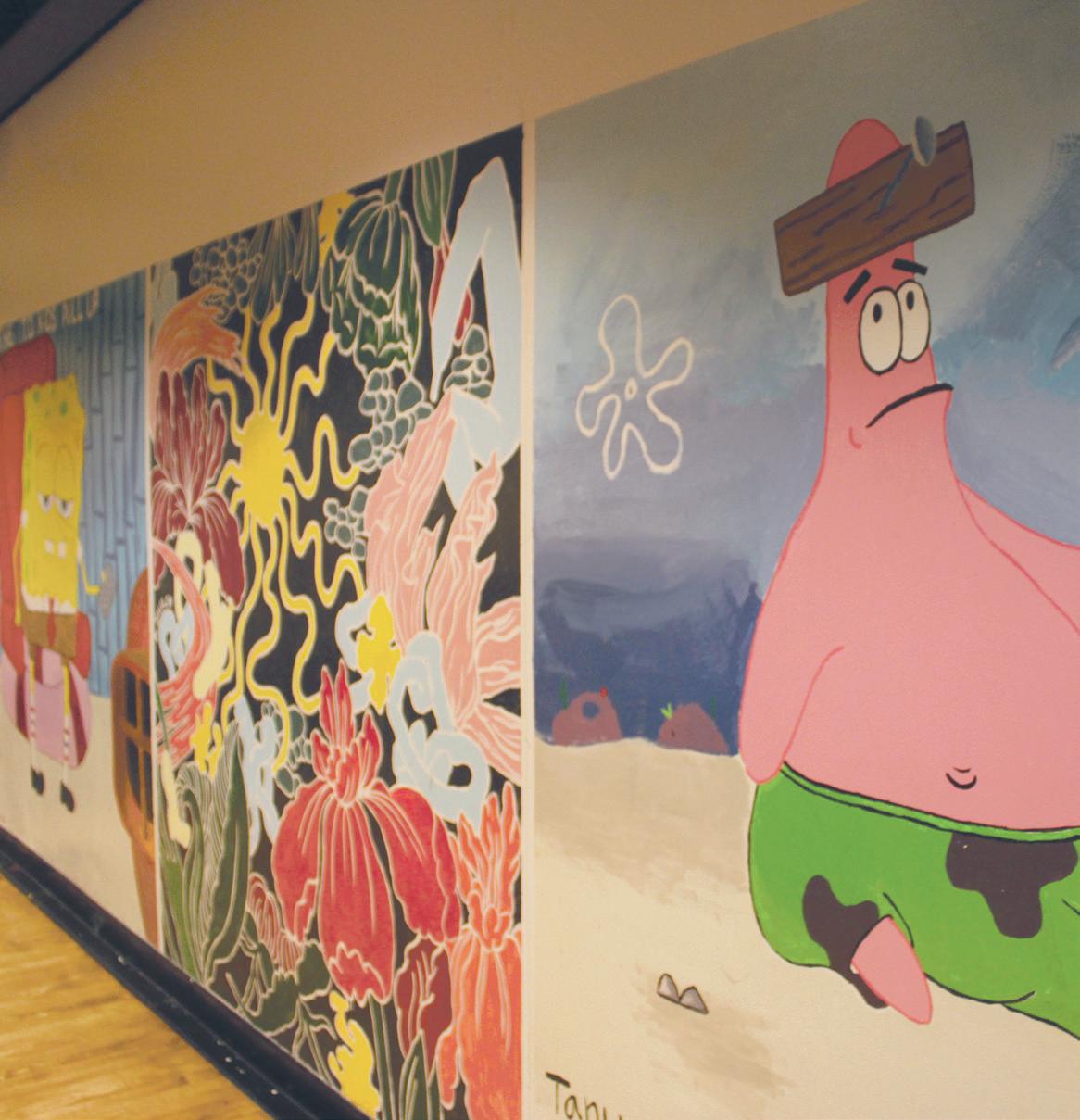
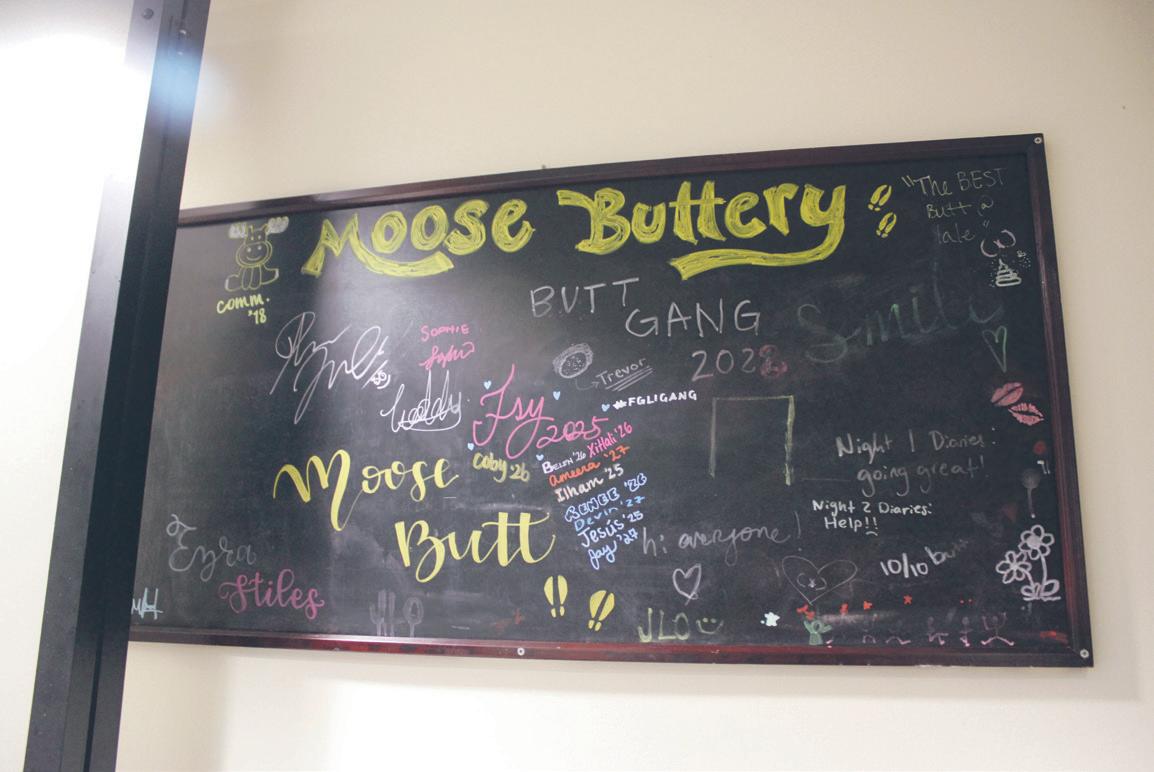
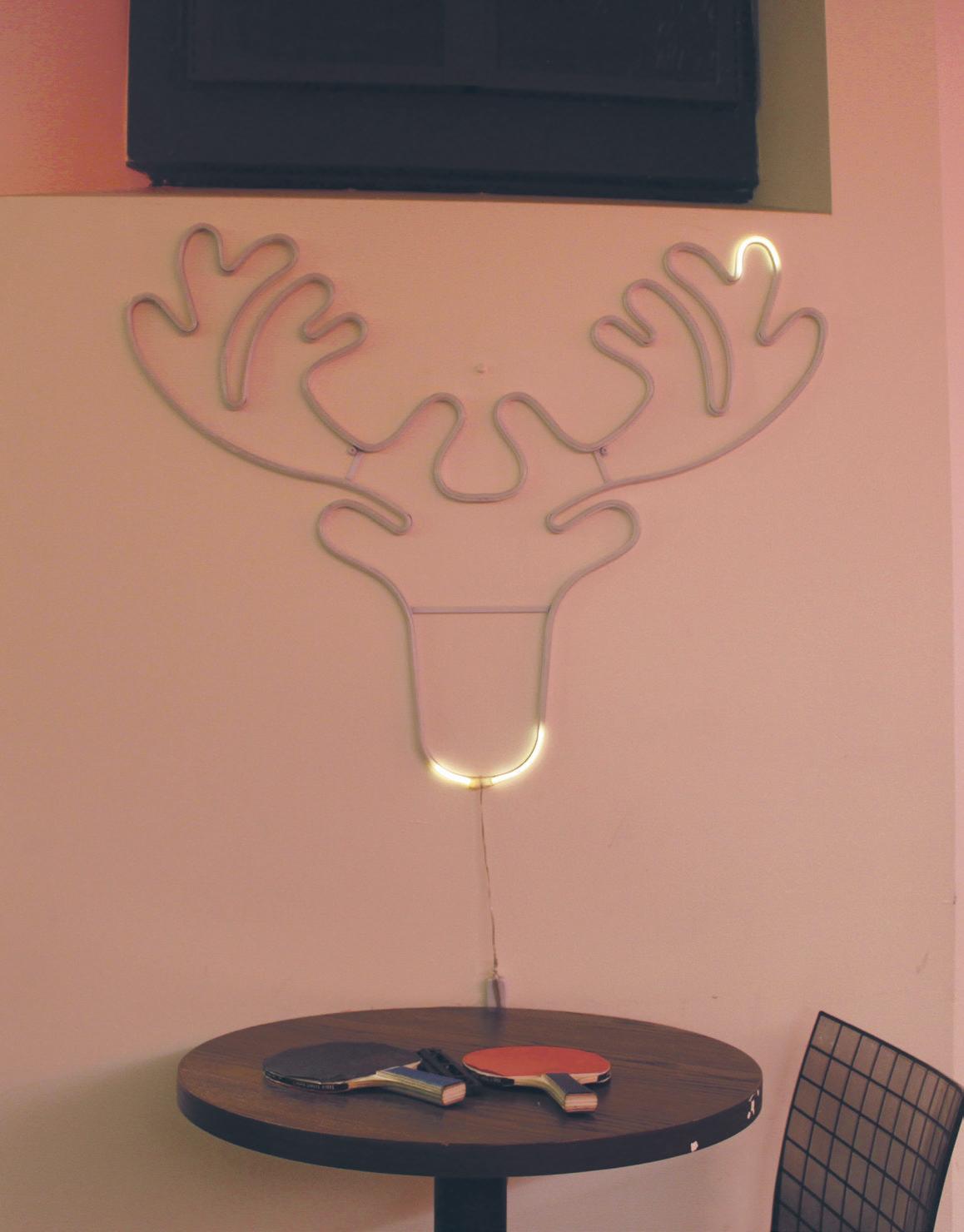




BY BRODY GILKISON STAFF REPORTER
Team 152 is set to travel on Saturday to Providence, R.I., to take on the Brown Bears.
Yale (5–2, 3–1 Ivy) comes into the matchup hoping to keep its playoff hopes alive, while Brown (3–4, 0–4 Ivy) is still looking to pick up its first conference win.
After Dartmouth’s (8–2, 5–2 Ivy) 31-10 loss to Harvard (7–0, 4–0 Ivy) last weekend, Yale now controls its own destiny regarding reaching the Football Championship Subdivision playoffs. The No. 9 ranked Crimson remain atop the Ivy standings with a perfect in-conference record thus far, but Penn and Yale both sit only one game behind. Since Yale holds the headto-head tiebreaker over Penn, a Bulldog victory over the Crimson in The Game would crown Yale as the 2025 Ivy League champions and would punch their ticket to the playoffs.
Looking at Brown Brown is a team known for its emphasis on the deep ball. Quarterback James Murphy has been aggressive throwing the ball all year, averaging 267 yards per game while throwing ten touchdown passes in seven games. However, that style of play has also led to turnover issues. Murphy has also thrown a league-high ten interceptions on
the season, four times more than the next closest Ivy quarterback. On the ground, the Bears’ rushing attack has struggled to alleviate pressure on the offense. Brown averages only 101 yards per game on the ground, which places them at second-to-last in the league in the category. With Yale currently ranked as third in the league in both rushing and passing defense and first in sacks, the Brown offense will need to break out of its season slump to give the Bears any chance on Saturday.
Meanwhile, the Eli defense will look to keep building upon their strong performances so far this season.
“We knew that we had a great group of guys heading into camp, but the way we have meshed as a group throughout the first part of the season has been unbelievable,” defensive lineman Mack Johnson ’28 said in an interview. “We know we have great depth, and that allows us to be aggressive and build on each other’s skillsets.”
Keys for a Yale win Yale is coming into this matchup with the mindset that every snap, drive and game matters down the stretch — no matter the opponent. Given the possibility of reaching the FCS playo s for the first time in program history, it could be easy for some players to fall victim

to looking ahead at a potential playo berth.
“At this point in the season, we don’t care about the name on the jersey of the guy lining up against us,” tight end Spencer Mermans ’27 said in an interview.
“We just want to play our brand of football, execute our game
BY AZARA MASON AND TANNER BATTLE CONTRIBUTING REPORTERS
After a challenging 2024-25 season with a record of 4–23, the women’s basketball team has been preparing to come back stronger.
The Elis struggled to compete with most schools in their division during their last campaign but say they are determined to turn things around. They have emphasized strengthening their mental toughness as well as their bodies in preparation for the upcoming season.
“Our team has focused on mental performance, strength and con-
ditioning, as well as skill work to gain confidence in other areas of our games to bounce back from last season,” senior captain Kiley Capstraw ’26 wrote in a text message. For Capstraw, building team chemistry is a priority, considering that the roster features five first-year players and two transfers. With 14 players on their roster — half of the members new to the program — the Bulldogs have had only a few months to build cohesion. In order to build trust on the court, the Bulldogs say they have benefited from time together o the court.
“We spend a lot of time with one another and really have gotten to
know each other o the court,” Capstraw wrote. “Our trip to Spain and France this summer was extremely instrumental in growing our chemistry and has carried over very well.”
Returning sophomore Magdalena Schmidt ’28 echoed that sentiment, emphasizing that the team became closer through the summer and preseason.
“We all genuinely love spending time together, which I think translates onto the court and will help us a lot this year,” Schmidt said. Schmidt also praised the first-year

plan to the best of our ability and go 1–0 every week.”
The Bulldogs could try to take advantage of the Bears’ sloppy o ensive play and set the tone early on. If the Yale defense is able to get the ball into their o ensive playmaker’s hands, star players like Nico Brown ’26 and Josh
Pitsenberger ’26 will look to wear down the Bears early and often. Kickoff is set for at noon at Brown Stadium. The game will be televised on ESPN+. Contact BRODY GILKISON at brody.gilkison@yale.edu.
BY RACHEL MAK STAFF REPORTER
The Yale women’s volleyball team (10–8, 6–4 Ivy) will challenge Harvard (5–13, 4–6 Ivy) and Dartmouth (7–13, 4–6 Ivy) this weekend in their final regular-season away matches of the 2025 season.
Earlier in the year, the Bulldogs hosted the Crimson and the Big Green at the John J. Lee Amphitheater, where they swept
both. The last time Yale lost to either team was in 2021. On Friday, Yale will take the court against Harvard. In their last matchup on Oct. 18, the Bulldogs defeated the Crimson 25-21, 25-21, 25-10. Ava Poinsett ’29 led the o ense, with 13 of Yale’s 36 kills. The Elis also bested the Crimson in total aces and blocks. With three aces, four blocks, seven digs and 27 assists,
BY LIZA KAUFMAN STAFF REPORTER
The men’s hockey team (0–1–0, 0–0–0 ECAC) will open its home slate and begin Eastern College Athletic Conference play this weekend with two highstakes matchups against Quinnipiac (5–2–2, 0–0–0 ECAC) and Princeton (2–0–0, 0–0–0 ECAC) at Ingalls Rink. This weekend will be the first chance for Yale hockey fans to experience the $3 million upgrades to The Whale, which include a new scoreboard, speaker system and broadcast room. The program will also welcome back generations of former Bulldogs as it celebrates alumni weekend. To promote the highly anticipated War on Whitney between the two New Haven-area universities, Yale Athletics is hosting a flag giveaway and ResCo challenge, in which one student from the most-represented college at
the game will win a prize.
“Our rivalry with Quinnipiac means a lot for both teams. The atmosphere of the building whenever we play each other is unlike any other game on the schedule,” captain David Chen ’26 wrote in a text message.
“With the added excitement of our first home game of the year and our alumni weekend, I’m sure Ingalls will be electric on Friday night. The team is definitely looking forward to playing in front of our home crowd.”
Senior defenseman Tucker Hartmann ’26 wrote that he is particularly excited for Friday night’s faceoff and to play in front of a packed crowd.
“Games against Quinnipiac are always special. It’s bound to be an electric atmosphere with fans from both teams able to make the watch. These are the types of games that make me so grateful to be playing college hockey at

// BY HANA TILKSEW
In my 10 weeks as a Yale student, I’ve received 10 emails from Cross Campus, an online platform facilitated by the Yale Alumni Association. For those of us who don’t bother opening the emails, the basic premise behind Cross Campus is that you fill out a LinkedIn-esque profile and connect with alumni mentors who can help guide you through your undergraduate journey and beyond. I have yet to complete a Cross Campus profile, and I don’t know of anyone who has. However, the knowledge that Yale makes something like that available to students is comforting. After all, part of the draw of elite schools is the presumption that you’ll make connections with thoughtful, intellectually challenging mentors.
But “mentor” is a vague word. What’s the proof that you’ve been mentored? Is it achieving the 500 plus mark on LinkedIn? Is it having a resume with no white space? Is it being best buddies with that professor who won a Pulitzer? Even approaching mentors can feel like a zerosum game. Reaching out is intimidating enough. And once they agree to a coffee chat, what’s next? Asking them questions you could easily Google is a waste of time. Asking about internships off the bat is taboo. Telling them who you are and why they should invest time in you is conceited. It seems like every step you take is cursed.
Over the past few weeks, I have sat down with students and faculty to orient myself with respect to mentorship culture at Yale. A part of me had expected the career-oriented advising and quick zips in and out of class that materialized, but I wanted to know if the hours-long philosophical office hour discussions were more than just a thing of the past. These conversations gave me a window into community members’ thoughts on whether mentorship at Yale is dead. The answer? It’s complicated.
Haley Cohen Gilliland ’11, the director of the Yale Journalism Initiative, suggests treating prospective mentors like anyone else you’re just getting to know. “My experience at Yale as a student was that there were ample opportunities for mentorship, but it was something that you had to proactively cultivate,” she said, recommending the cold email as a way to connect with mentors both within Yale or outside the campus bubble. Cold emailing freaks out many Gen Zers. Reaching out to people we don’t know? Isn’t that weird? Won’t we look desperate?
“The worst that happens is someone doesn’t answer,” Cohen Gilliland said. “The best that happens is they do answer and you have an interesting conversation, and maybe that does blossom into an enduring mentorship relationship where they are aware of opportunities you weren’t and point you towards them.”
But anyone at any university can send a cold email. Where’s the special Yale sauce in all this? What’s our return on investment for all those admissions essays and nerve-wracking interviews?
Ashley Yim ’27, a sociology major in Jonathan Edwards College, felt that Yale provides more personalized opportunities for social mentorship than academic mentorship. “They have TroCos and FroCos,” she said, referring to firstyear counselors and transfer student counselors. “They have Peer Liaisons. In JE, they have big sibs, little sibs,” she said. Yim transferred to Yale this semester from Cerritos College, a two-year institution in Los Angeles County, and observed a sharp contrast between mentorship at Cerritos versus at Yale.
“It’s zero at community college. There’s no big sib, little sibling. There’s no counselor that’s a student,” she said.
On the other hand, Jasmine Rossetti ’27 found academic mentorship at Yale in professor Woo-Kyoung Ahn of the Psychology Department, who she connected with while taking one of Ahn’s courses this summer. “Her lecture style was charismatic and engaging, so I felt com-
fortable chatting with her after class,” Rossetti wrote in an email. “Sometimes professors can be really intimidating, but I didn’t feel that way with her.” Yale professors are a diverse bunch. Some seem like they might break out in hives if you don’t address them by the proper title. Others sign their emails with “Sent from my iPhone.” One may be eager to discuss your entire life story in their office hours, while another wants you to get straight to the course material.
For any mentor in this diverse pool, the English Department’s Director of Undergraduate Studies Stefanie Markovits draws a clear line between short-term help and long-term guidance. “There’s a distinction between mentorship and advising. They’re easily conflated, but they’re different,” she said. Mentorship “depends much more on a personal connection between the mentor and the mentee. That’s something hard to arrange institutionally.”
Perhaps that’s the root of our disconnection to mentors at Yale: Maybe we’re drowning in such an abundance of advising that we struggle to find genuine mentorship. All of us are assigned a faculty advisor our first year at Yale. We have a director of undergraduate studies for our major. We have a residential college dean. There are endless opportunities for half-hour meetings about our academic roadmaps and postgraduate plans. But when it comes to building deep, personal connections, we don’t always have a strategy. When you’re used to eating at the drivethru, you feel out of place at a Michelin star restaurant.
Part of this dilemma has to be a lack of time. At a university where even lunch with a friend needs to be logged into the GCal, it may not seem efficient to consistently carve out the time to sit with a professor one-on-one on a regular enough basis for them to become a true mentor. Having deep talks in a professor’s office over tea for a couple hours may have been more common in the old days, when Yale’s students were the Waspy sons of America’s elite who went to university to discover themselves. Now, the average Yale student’s goal is to get a cushy job after graduation. As a result, we’re often more focused on connecting with hiring managers than our professors.
“The students who most need mentorship are the ones who are hard to reach,” Markovits said. “You can’t force mentorship on someone. It just doesn’t work that way.”
Many of us are guilty of not taking advantage of our professors’ availability as much as we should. They carve out time every week to lend an ear to their students, and although we know where and when to find them thanks to the handy syllabus, we don’t always show up. The first step of building a consistent connection is consistent presence. If we can’t get past that threshold, is it any wonder that mentors feel few and far between?
“Everyone who teaches at Yale teaches here because they want to mentor young people,” Cohen Gilliland told me. But do Yale’s young people want to be mentored? Are we taking our classes to engage with an expert in a specific subject and glean all their wisdom, or are we just trying to meet our graduation requirements so we can go out into the corporate world with a shiny Yale degree?
There’s no question that students’ priorities have changed — the world is a very different place than it was in 1701. As career stability becomes more shaky than ever for a new generation of young adults, we have no choice but to ditch office hours for career fairs, or skip our assigned readings to write a cover letter. Can we really say mentorship at Yale is dead? Or has it been buried alive, waiting for us to dig it up?
Contact HANA TILKSEW at hana.tilksew@yale.edu
// BY ESMERALDA VASQUEZ-FERNANDEZ
What do you need to survive the hardest time in your life?
Florence and The Machine answers with their sixth album
“Everybody Scream.” It was released on Halloween. It’s jarring. And it’s meant to be that way.
“Everybody Scream” was the first song released off of Florence and The Machine’s sixth LP — also called “Everybody Scream.” Released as a single in August, it started the very intimate journey Florence Welch would take her listeners on. The journey of the album uncovers aspects of her personal life and gifts listeners the opportunity to reflect on their own.
The album was released at the perfect time for my own journey of grief, change and loss. Welch doesn’t paint working through trauma and hardship as a heroic arc. Instead, she focuses on the rawness of hitting a new low. When it feels like nobody is going to save you. When it becomes clear that some things can’t be changed.
Welch has been public about the life-saving surgery she underwent and her miscarriage back in 2023 while touring “Dance Fever.” During this time of hardship, she had to cancel scheduled shows. While recovering from her health struggles, she faced criticism and a lack of space from fans who wanted a clear explanation for the cancelations. The final stanza in the single, “Everybody Scream,” leaves the audience curious of “oh what has it done”
in contributing to their favorite artist’s period of hardship. Welch’s lows were compounded by fan culture’s bias. In the past, Welch has been critical of fan culture’s parasocial relationships with male versus female celebrities. Where one relationship is based on the praise and approval of men, the other is rooted in a steadfast desire to disempower women. In the song, “One of the Greats,” she’s vulnerable about her treatment in both society and the industry who “burned [her] down at 36.” The rawness in Welch’s lyrics feels like an intimate window into her life.
This emphasis on what it means to be a woman is explored in her previous album “Dance Fever.” When I feel like my career ambitions can be costly to my personal life, I play “King.”
I think Welch is unafraid of exploring and admitting feelings that most artists don’t out of fear of being seen as cold. Welch’s poetic lines are both strikingly beautiful and at times feel like an ugly gut-punch. She is a lyrical genius and a professional at crafting soul-crushing lyrics. The same heart-wrenchingly beautiful songwriting is portrayed in “Everybody Scream.”
A big difference between the albums is that “Everybody Scream” sounds like a retelling of a horror story because, in some ways, it is. It also becomes clear that “Dance Fever” unintentionally shadowed the challenges Welch would soon
face. It is strange how life can sometimes give glimpses of what is to come.
“Everybody Scream” is far more personal than Welch’s previous work. The album reveals parts of Welch’s life that are deeply personal and in no way should be expected to be shared to the entire world. She creates an album for women who have lived through similar physical experiences and illustrates strength to others who have felt that same agonizing emotional pain.
Like many, I would never want to be pitied, even in the worst chapters of my life. Welch agrees. She doesn’t ask for insincere sympathy; instead, on “Sympathy Magic,” she valiantly screams, “come on, tear me wide open,” she “can take it.”
The album centers on recovery from struggle. Welch depicts it as a solitary endeavor but also questions the role of the audience in the journey. “Everybody Scream” made me question how I can offer warmth in a society that is so cold. The album recognizes how human connection can strengthen people when they are at their lowest. But for some, the season of change must be endured alone. As Welch sings in “Buckle,” people who claim to love you can sometimes “close the door and leave [you] screaming on the floor.” But yet, with resilience you will “still be there.” If I ever feel too weak to push forward, I know Welch’s album can act as a burning drive to remain strong.
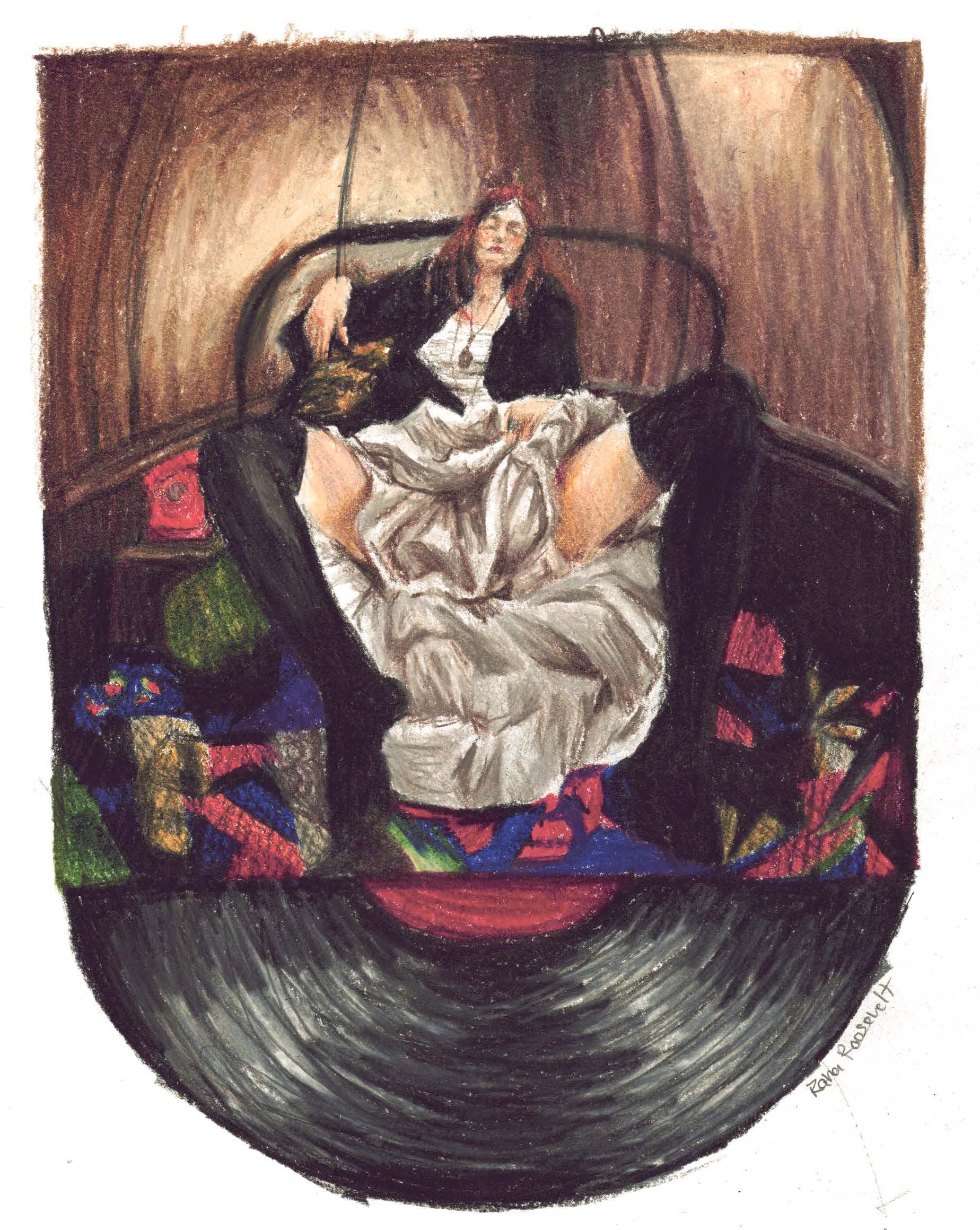
In all honesty, I wouldn’t want to listen to the album when I am thriving in life. It’s so emotionally heavy. It will likely remind me about darker chapters in my life. But, that is what makes this album so special: It has emotional depth that most pop-albums or mainstream music doesn’t. Despite trauma, hardships, mourning of relationships, you can find yourself again. The sad reality is that some people are sent
challenges without reason that they must overcome. Sometimes a part of you dies through the process. The past can haunt you. But, you still remain. You can almost die like Welch but — in the words of the album — peace is coming.
Contact
ESMERALDA VASQUEZFERNANDEZ at esmeralda.vasquez-fernandez@ yale.edu.
TheBoss’s biopic struggles to balance between Hollywood cliches and a near-groundbreaking portrayal of an artists pushed to his mental limit.
// BY CIELO GAZARD
“Springsteen: Deliver Me from Nowhere” juggles too many plotlines. The film, starring Jeremy Allen White, focuses on the making of Bruce Springsteen’s 1982 album, “Nebraska,” the relationship between a father and son and a fictional love affair with a hometown girl. The film explores a different side of Springsteen — not as “The Boss” but as Bruce the Jersey boy struggling to make the darkest and most personal record of his career. But its exploration covers too much ground and not enough depth.
This introspection is explored in the film through vignettes of Springsteen’s childhood. Springsteen’s relationship with his father is a highlight of the film, particularly the elder Springsteen’s struggle with alcoholism and mental illness. The film opens with a flashback — 8-yearold Springsteen going into the bar to get his father to come
home — before jumping ahead to 1981 for a triumphant live performance of “Born to Run” with the E Street Band. The black-and-white returns to childhood within the film fuel Springsteen’s creativity when writing “Nebraska.”
On the album’s title track, originally called “Starkweather,” Springsteen writes about a serial killer from Nebraska on death row. During the writing process, he remembers a moment in his childhood when he hit his father with a baseball bat to protect his mother. Springsteen crosses out the “he” and “him” references to the killer and replaces them with “I” and “me.” Springsteen seemingly relates to real-life murderers and writes from their perspective throughout the album as a means of dissecting himself and his relationships. These moments in the film, where viewers see how Springsteen’s mind works, are integral parts to the biopic. Unfortunately, “Springsteen: Deliver Me from Nowhere” tells more than it shows. Bruce’s childhood traumas and strained relationship with his father are not centered in the film. It tries to juggle three

plotlines at once — including one of a fictitious woman named Faye who was meant to simultaneously represent Springsteen’s relationship with women and his detachment from New Jersey after rising to fame. The inclusion of fictitious Faye would’ve been tolerable if it revealed something deeper about Springsteen’s expression of masculinity. Our usual image of Springsteen is a macho, rugged working man with an electric guitar strapped across his back. He’s called “The Boss” afterall. However, the Springsteen we see in the movie is not a very tough guy. As a child, he is disinterested in his dad teaching him how to fight. In adulthood, he has commitment issues with Faye and spends his nights listening to music and composing acoustic songs in his bedroom alone. Creating a fictitious love interest has been explored in other biopics, but Faye’s purpose in the film could have been improved to make her more than a shallow genre cliche.
Springsteen’s relationship with his manager Jon Landau, played by Jeremy Strong ’01, is where the movie seems most confined by tropes of the modern musician biopic. As Springsteen’s manager, Landau’s job is to defend “Nebraska” to the record executives. He defends Bruce wanting no singles, no tour and not wanting to appear on the album cover. Before we get to this scene, we see multiple moments of tension between Springsteen and Landau. Landau prefers the electric recordings to Springsteen’s original acoustic recordings and urges him to release them first. Springsteen refuses, shelving the electric tracks for a later release which would eventually become the album “Born in the U.S.A.” Despite Landau’s lukewarm support, the record executives remain unconvinced of its potential. As a track from the record plays, the record executive
says “So are all of the tracks like this?” Landau responds in the affirmative. The record executive then replies, “So we don’t have to listen to this anymore?” The album that is supposed to be the center of the film is made into a punching bag. I don’t deny that a scene like that may have occurred in real life, but Landau’s lackluster defense of “Nebraska” makes audiences unsure of who to side with: Springsteen or the suits.
If “Nebraska” was to be portrayed in such a way in this film, why not focus on the making of “Born in the U.S.A”? For a film that only takes place over two years of Springsteen’s life, the overlapping yet shallow plotlines leave it unfocused. The most powerful parts of the film lie in the flashbacks to Springsteen’s traumatic upbringing. They provide insight into his creative process in a way that other parts of the film fail to achieve. However, with a fictional romance subplot and a trite reliance on biopic tropes, the film wound up with more filler than needed.
I find it very brave of Springsteen to talk about his father’s mental health struggles and tie it to his own struggles with depression and loneliness. Those moments were some of the most focused of the film. Allen White’s performance as Springsteen is incredibly believable and raw. If the film was solely about this father-son dynamic, it could have been a much better, possibly groundbreaking biopic.
Many critics who’ve written about the film have asked: “Who is the intended audience?” The real question is: “What does this film want to be?”
An exploration of a musician pushing himself to his mental limit? A father and son drama? A lament on the girl that got away? “Springsteen: Deliver Me from Nowhere” could have been so much more. “Nebraska” is an album worthy of more praise. Springsteen is an artist worthy of a better film.
Contact CIELO GAZARD at cielo.gazard@yale.edu.
Sel es, Spectators and Social Media.
// BY REETI MALHOTRA
In the 2017 documentary, “I am Heath Ledger,” Ledger’s family and friends filled a significant amount of the biographical picture with footage that the late actor had filmed of himself on various cameras.
“He got this camera, and he didn’t know what to do with it other than to make something,” Trevor DiCarlo, Ledger’s childhood friend, said in the documentary. “It wasn’t just to film us and film what we were doing. He was, like, creating something straight away.”
Ledger used his camera largely as a self-teaching exercise, DiCarlo explained. In the shaky, intimate footage recovered from his personal video files, viewers are invited to watch Ledger experimenting; he records his face in the mirror, from the side and from above.
The late actor evidently had a recording habit — his camera seemed both an extension of himself and a vehicle for exploration. Whether that exploration was confined to the medium of film, or extended inwards to become an exploration of himself, we cannot know.
I cannot recall precisely when or how I came across the documentary on Ledger. What took root in my mind was a single sequence: Ledger filming himself as
he spins around the room. I was fascinated by the idea of photographing and recording myself — acts I once averted for fear both of being perceived and of seeming self-indulgent in a way that bordered on narcissism. Yet Ledger’s videography doesn’t lend credence to either anxiety. He does not appear to film himself for an audience, nor to elevate himself as a subject of attention. Rather, Ledger seemed to record himself specifically for himself. It appears as a somewhat purist union between film and an examination of the self. In the age of social media, this purity seems radical and rare. Self-documentation, and the act of turning the camera on oneself, is hardly ever conducted in private. Even if our footage goes nowhere and remains buried in TikTok drafts or Instagram archives that will never be made public, there is a subtle catering to the potential spectator who may come to view it, should we dare to provide them with access. To film oneself is now to inadvertently anticipate the gaze of another. The lens is no longer a mere mirror, but a stage for performance. Perhaps, however, this was always the case. Whenever I ponder my relationship with my camera — which
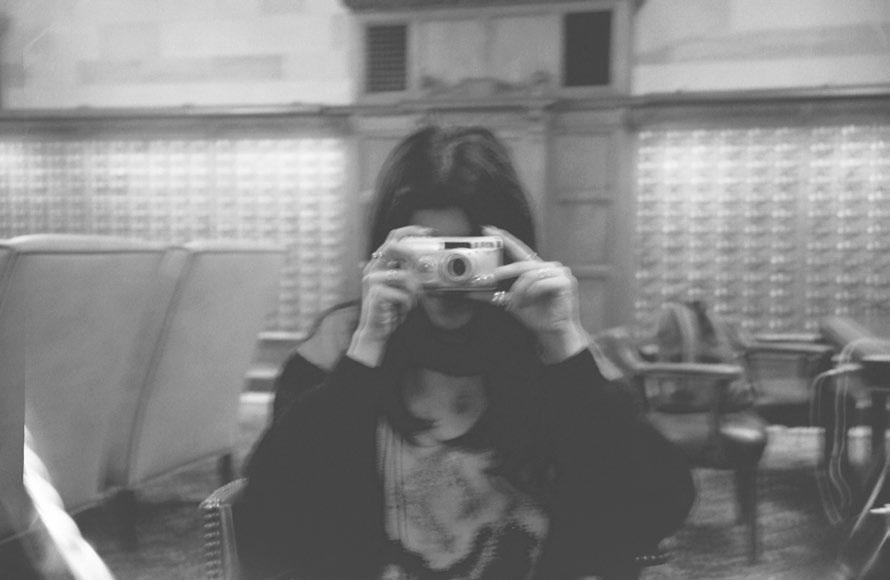
The photographer captures things as they are, but does not shape the version of reality that they collect with their comprehension of it.

has indeed become an extension of myself — I tend to reference Susan Sontag’s “On Photography” as a baseline. Admittedly, the essay collection sparked much of my interest in such contemplation over the summer, and my viewpoints on it are ever-evolving.
In “Photographic Evangels,” Sontag suggests a dichotomous view of how the self and photography are intertwined. Some may view the act as a means for the self to “master reality” in an “overwhelming world” by anthologizing it visually.
That is to say, the photographer infects the images they capture with their viewpoint of reality.
Others, however, contend that photography serves as a means of “finding a place in the world (still experienced as overwhelming, alien) by being able to relate to it with detachment,” as Sontag puts it.
That is to say, the photographer captures things as they are, but does not shape the version of reality that they collect with their comprehension of it.
So, the big question emerges: did Ledger aim to capture himself as he was, or as he understood himself to be?
Any answer to this question — which I do not have — in turn begs another: when we capture ourselves for a potential audience, do we conduct an exploration of ourselves as Ledger seemed to do, or do we merely perform such an exploration?
PHOTOS BY REETI MALHOTRA
It is no secret that I have an affinity for social media. I photograph and publish my life extensively on my Instagram account; it is a collage of the things I enjoy, the people I care for, the moments I would like to remember. I like the act of posting — I wouldn’t do it if I didn’t, I often tell myself.
But at times, the awareness of the ever-present external spectator proves exhausting. In those moments, I toy with the idea of going offline for good. My self-expression shall be conducted in private, I conclude.
But can it ever be? Is it possible to remove ourselves from the external viewer, when, by virtue of being in a community, we find ourselves being perpetually perceived anyway? I cannot escape the feeling that if I decided to stop crafting the image of myself for an external audience, I would less remove the image of myself from their eye than I would just remove my own authorship of it. Perhaps my questions are unfair or tedious or unnecessarily pedantic. I did say, after all, that we cannot know for certain what Ledger’s motivations were as he filmed himself — nor his expectations for what would be done with the footage he accumulated. I can imagine, too, that anyone reading this might argue that it simply “isn’t that deep.” People post to share slices of their lives and images of themselves. It’s straightforward.
Yet I fear that, in simply accepting that conclusion, we discount the evolving relationship between ourselves, the camera and the unavoidable expectant viewer wrought by the era of social media. It is indubitable that capturing the self affects self-conception. And when we bring in our potential spectator — who consumes and comprehends what we show them — we face another conundrum. How do we make sense of ourselves while simultaneously performing for someone else?
Contact REETI MALHOTRA at reeti.malhotra@yale.edu.
// BY LILY SCHECKNER
Fluorescent TV light flickering over my face, I sank deeper into the couch. I grabbed a fistful of popcorn from the bowl in my lap. I was bewitched by the new show I was watching: a brightly colored, nostalgic, quick-witted gem of a one-season wonder.
It was called “Everything Sucks.”
It came out in 2018, but I binged it in the throes of the COVID-19 lockdown. Like nearly every other eighth grader with their life turned upside down, I was lonely and confused. I felt that time was relentlessly passing me by as I laid in bed, ignored my homework, gorged on chips and slept through my Zoom classes.
Unsure what high school would look like with masks on, I turned to coming-of-age media. It was never satisfying. All the actors who were supposed to look like me were two decades my senior, and the struggles in “Gossip Girl,” “Riverdale” and “Pretty Little Liars” were all booze, pills and murder — worlds away from my problems.
“Everything Sucks” was a breath of fresh air. I felt affirmed every time the opening credits rolled — because yes, everything did suck. The characters were played by true teenagers, some as young as I was in that era. And, despite the show taking place in the ’90s, I recognized the struggles of those characters within myself. Their angst, their families, their mistakes — it was all familiar.
Long before she was a rom-com bombshell or a controversial TikTok sound bite, Sydney Sweeney played the foul-mouthed, redlipped Emaline. I saw a fraction of myself in her. Like Emaline, I was handed an adult body as a child, and I didn’t know what to do with it. I was extroverted and insecure. Emaline felt so real, down to her appearance — far from the airbrushed models in the other shows I had seen.
Emaline was lauded as a beauty despite having some of the frizzy, pimply imperfections we all struggle with. She was unapologetically loud and complex, a popular theater kid with a mean streak. Yet, throughout the season, she softened,
after COVID-19 ended, I was reintroduced to Sweeney via fractured, glittery clips of her breakout role as Cassie in “Euphoria.” I never watched the show — perhaps to preserve that image of the imperfect Emaline. Sweeney didn’t owe the preservation of that image
breaking up with her boyfriend and falling in love with a shy character named Kate. It was the first time I understood love between women, mostly because it wasn’t between women. It was between girls — fumbling, unsexualized, teenage girls. After finishing the show, I sat on the couch for a few minutes, thinking. I realized I was bisexual.
to anyone. She had simply outpaced me, growing up far faster than I ever could have imagined. Still, I had no interest in this new coming-of-age show, another airbrushed story of booze, pills and murder.
usually thought people were taking it too far, but I couldn’t help noticing her evolution from inspiring my queer awakening to being a marketing tool for the male gaze. It made me sad in a very distant way, like growing apart from a friend in preschool and seeing them at graduation. Or, maybe more accurate would be a comparison to myself — looking back on little me, before she was changed by parents and boys and bad friends.
I don’t begrudge Sweeney for her evolution. I’m thankful to Emaline for giving me someone to recognize myself in. I hope every kid finds that person — and, oddly enough, I think there’s something special about doing so through the remoteness of a TV screen. In a lot of ways, that distance is what allows me to live with the duality of Sweeney.
In a time when parasocial relationships are practically the norm, I find it comforting to be able to hang on to what Emaline once meant to me without knowing what her actress stands for now. I will never know if her current image is what has been created for her or something she embraces. It doesn’t really matter. Either way, I know she once helped me embrace my 14-year-old self, in all my imperfections and awkwardness and complexity.
Whatever you think of the jeans ad, Sweeney propelled me to now — the last year of teenagehood — and the end of my coming of age.
Contact LILY SCHECKNER at lily.scheckner@yale.edu .
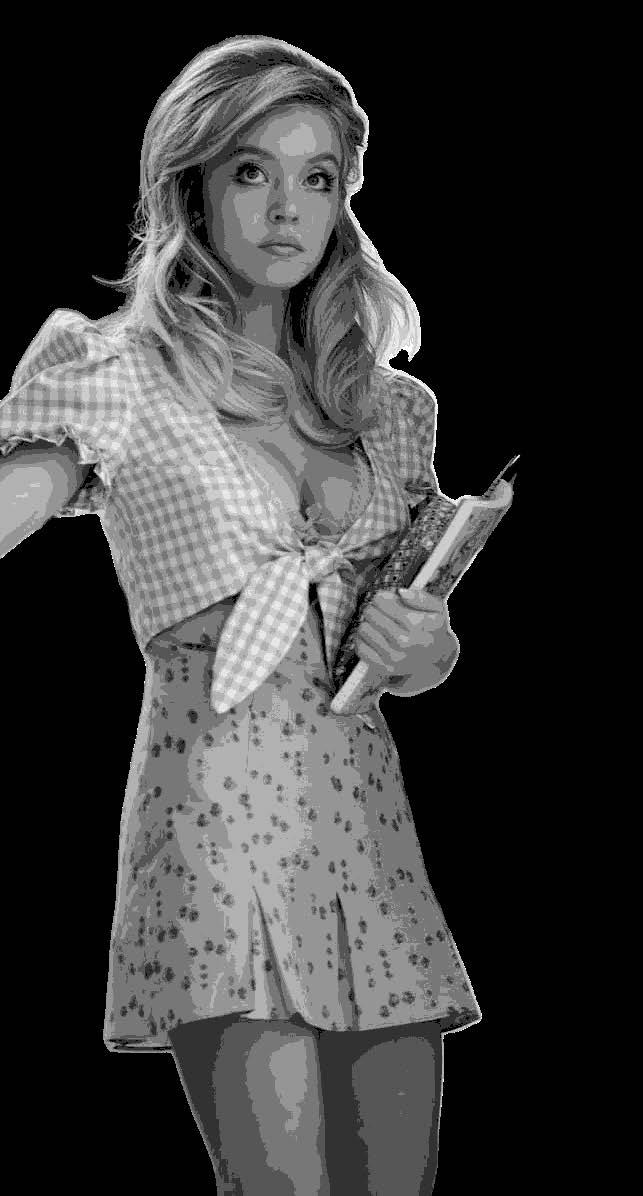
The increasingly polarized dialogue around Sweeney, before and after the infamous American Eagle jeans ad, was mostly in my periphery. I






// BY HANNAH ROLLER
I am a mosaic of everyone I have ever loved.
I always sign a birthday card with my name in cursive because that is what my grandmother taught me to do. I still say “potato tomato,” an expression coined by my first boyfriend, when something seems different
because my dad swears by it.
I keep a drawing in the drawer of my bedside table that a 5-year-old made for me when I was volunteering at an orphanage in the Dominican Republic. I am fully convinced that the only way to get over a hangover is
huge bagel with lox because that is what my high school friend group did the morning after every single party.
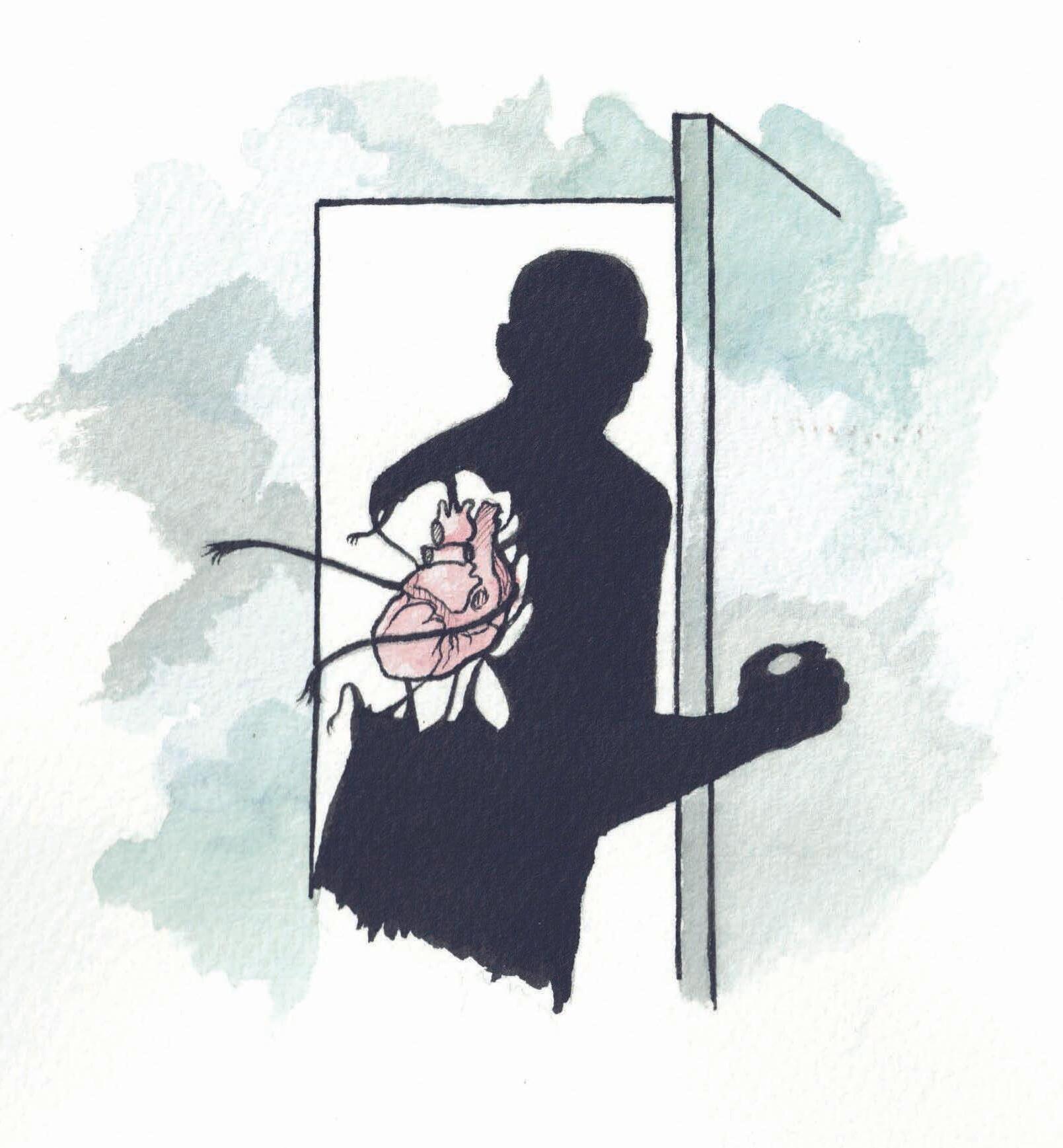
I play Bob Dylan and The Cure because one of the best people I know would always blare it on his truck speakers. I never annotate books in pen because my first-year history teacher — who is an atheist — told me it was a sin. I make tea for my friends when their days are long because that is what my mother does. The parts of us cultivated in the image of others are easy to miss.
But pause for a second, take a look, we are inarguably shaped by the current of people that flow around and through us.
Like any other mosaic, I am composed of parts. Fragments of love and fragments of loss. The former unavoidably fades into the latter because people are transient and imperfect beings. There is no way to avoid it. To love is to live, but to live is also to lose.
I barely remember the first funeral I went to, but I remember that my older cousin was crying and I couldn’t understand why. I lost my aunt last November. At the service, I sat on a couch in the back room attempting to explain to my cousin’s 8-year-old daughter why it was okay that people were crying. Her black dress didn’t match the hot pink pompom on the pen she was using to doodle in a unicorn decorated notebook.
Despite loss being an inescapable and undeniable truth of life, we deny it again and again and again. The first break up, the slow torture of growing apart, seeing a face that you once had memorized months later, looking at a
// BY ESMERALDA VASQUEZ-FERNANDEZ
Bustling from meetings, to clubs, to work, to every other thing that propels our careers and passions can feel like you are merely gliding by people and gliding through life. When someone manages to stop you and ask, “Can you grab a meal?” you shuffle through your Google Calendar to find any empty white space.
Maybe you can spare 30 minutes tomorrow or 40 minutes next weekend, but this exchange can feel transactional as they scour their own calendar to find any compatible time.
When I first got to Yale about three months ago, I found myself making lunch plans weeks in advance. I wanted to connect with people in my residential college, clubs, classes but with such a demanding schedule the only time I had was when I finally got to take a breath and eat. Hey, everyone needs to eat.
The “let’s grab a meal” culture on campus is convenient, but it can lack depth. If I wanted to say anything personal about your life during your resco dinner, I need to comically use the classic “Yale 360 head sweep” to make sure the environment is safe. Still I’d whisper in fear of being heard, maybe in fear of being known. Yale makes capitalizing on all networking opportunities seem most important. Any peer could be the next president or CEO of some billion dollar company. The thrill of recognition and social clout makes it feel worth it to slide through the door. But while approaching random strangers at parties just to give introductions and walk away probably is the way to gain social recognition, it’s a terrible way to make friends. There is a di erence between knowing someone’s name and maybe what projects they are involved in and knowing they like an iced matcha latte with
almond milk and one pump of vanilla. Just as there is a di erence between a friend and a true friend.
Real friendship requires time to foster a close connection, but if all I did was grab a meal with various people throughout the year, I would likely find myself emotionally afloat. Chronicling the past few months of minor life updates starts to feel stale. By week three, I found myself needing someone to help rearrange my room and wanting to go thrifting, but I couldn’t comfortably text someone out of the blue and ask for their company.
People at Yale might have a group of friends who they party with, a group they study with and another group they run with. These sub-groups of friends are realistic because not everyone who wants to go out every weekend will be in your same major or enjoy stomping on concrete. Most friendships get started as “a friendship of convenience.”
These groups of friends can be real friends, but there are also the friends we keep around despite slews of inconveniences.
Friendship is about carving time out of a busy schedule because this person matters just as much as — and no shade to these people — consulting group meetings. It is not a chore to find compatible time, nor is it a stressor. Being around my friends lightens the load of the day and, hopefully, illuminates theirs to the same extent. It is about letting someone see my authentic self without being armed with first-impression armor. They become people I value the presence of in my day-to-day life, whether they are physically present or not. An internal indicator that I care deeply about my friend is if I find out about a cool opportunity and immediately reach for my phone to invite them. I over-
hear someone talking about their favorite band and I get reminded of them. I receive random texts about G-Heav running out of chips and hummus literally daily. I have an ongoing text message chain that continues and stops and picks back up again. Friends, at least in my mind, should be people who are constant.
Now, I am not saying my friends need to be there 24/7 attached at the hip. I actually believe that real friendships get tested when both parties naturally take a pause but are able to pick up right where they left o This kind of friendship is easier to foster with people who’ve known each other for years, but it is just as possible with the friends who see each other once a week for Sunday morning hikes or Wednesday morning coffee dates. It is the people who lay on the floor with each other on Friday nights after a night out just to talk about a bunch of nothing.
According to Rhaina Cohen at the Atlantic, “Wasting time together makes the best memories.” I happen to agree. These types of friendships are built by establishing a layer of trust. These friends demonstrate a care for one another’s wellbeing and celebrate
picture of your parents when they met, the first falling out, your grandfather painting over 14 years of height measured in pencil on the door frame, a song from October 2024, the first funeral, a shirt you don’t wear anymore, a phone number that you have memorized but won’t call. I am 18, so I don’t truly know what I’m talking about. But here is what I think. I think that we have no choice but to carry loss through our lives. That to grieve deeply is to have loved fully. That it’s okay to regret, it’s okay to love somebody so much that the loss haunts you, okay to wish that things were different. But I also think that people stick with us despite distance and break ups and fall outs and silence and death. I think that getting over the pain of the first break up makes us learn what we want to be in love. I think that growing apart from someone you were convinced would be your maid of honor helps define you outside of who you were. I think that sitting in a church pew at a funeral staring at the candle flickering on the pulpit makes us more compassionate and more empathetic beings. I think that loss is as integral to us as love is. That learning to lose is a necessary trial of life. This is an ache of emerging from youth, of learning what cannot be taught but must be lived. There is a realization that accompanies the shift from the childish abstraction of grief to the lived daily ritual of mourning that which will not return. As mosaics, our love and loss are inextricable, so inseparable, so intertwined that they blur together all too often. Perhaps loss is just as important as love to the project of deeply knowing ourselves.
Contact HANNAH ROLLER at hannah.roller@yale.edu.
their authenticity. I trust in their warmth for me because I feel it, like a constant hug that bears comfort. It takes vulnerability, and that can feel scary in such a small school. Nobody wants to see their deepest secrets on Fizz or hear them pass swiftly through the lips of someone waiting for their order at the Elm. But that trust is an element of what makes true friendship so valuable. My advice: It is not easy to maintain a friendship, so learn from the ones you’ve lost. But also recognize that sometimes people are meant to stay or can only be in only a chapter of your life.
Thankfully, I have found people, both before Yale and since I’ve arrived here, who I can text about tripping on a step or whenever I need reassurance. I don’t want to glide through life to realize all I have is a list of followers on Instagram and LinkedIn. I want to be surrounded by people who believe in me and root for me in ways that are deeply personal and meaningful. I hope I return the favor.
Contact ESMERALDA VASQUEZ-FERNANDEZ at esmeralda.vasquez-fernandez@yale.edu


Ten years ago, a weekend of controversies sparked a reckoning with racism and debates about free speech.
Friday, November 7, 2025
An email and a Facebook post lit a fuse for protests and conversations about racism at Yale — a striking moment in the broader stories of Yale, student activism and American movements for racial justice.
BY SABRINA THALER STAFF REPORTER
In recent months, universities have become central to President Donald Trump’s attack on race-conscious culture and diversity initiatives. His administration has pulled funding from universities when they refused to shutter diversity, equity and inclusion programs and has terminated “‘equity-related’ grants or contracts” for thousands of researchers, including more than 50 at Yale.
Today’s colleges and universities are navigating how to speak publicly about racial inclusivity on campus, but 10 years ago this week, Yale students propelled that discourse into the fore.
Days before Halloween in 2015, Yale’s Intercultural Affairs Committee circulated a message to the student body cautioning against wearing culturally insensitive costumes. On Oct. 30, 2015, Associate Master of Silliman College Erika Christakis wrote an email to Silliman students disputing the directive, criticizing the administrators’ “exercise of implied control over college students.” Christakis wrote that her husband, Silliman Master Nicholas Christakis, agreed.
Soon after, hundreds of students railed against the associate master’s memo, circulating a petition calling for the Christakises’ removal from their posts.
The next day, Halloween, a student claimed on Facebook that she had been denied entry to a party at the Sigma Alpha Epsilon fraternity, now known as LEO, on the grounds that the party was for “white girls only.” A Yale investigation later found two credible accounts that SAE members used the phrase, but did not find evidence of a systematically racist entrance policy.
Students seized on the two events as indicators of a much wider crisis, fueling a viral confrontation with the then-Silliman Master Nicholas Christakis, weeks of demonstrations and a studentled campaign to make Yale more inclusive for students of color.
For Brea Baker ’16, a student organizer during the 2015 demonstrations, the concerns about racism on campus were not the only concerns she had with University positions. Baker explained that she had known of instances of violence against Black students, including when a Yale Police Department o cer held a student at gunpoint in January of that year.
She was surprised that Erika Christakis’ email sparked the uproar given other pressing issues.
“There was a lot to be mad about to me. Hoarding resources, Yale endowment being invested in private prisons and fossil fuels,” Baker said in a recent phone interview. “So it was like, ‘Oh, that’s interesting that it was this email and party that did it, that was the catalyst.”
Since Halloween in 2015 and the ensuing weeks of student advocacy, residential college “masters” became “heads of college.” Calhoun College — named after John C. Calhoun, a leading champion of American slavery and 1804 Yale graduate — was
renamed Grace Hopper College. In the path to those changes, Yale students framed their demands within a much longer timeline of concerns about race on campus. Their critics, meanwhile, alleged they overreacted.
A faculty letter of support for the Christakises denied that Erika Christakis’ email constituted “support for racist expressions.” The letter said that students’ reaction, particularly their confrontation of Nicholas Christakis in the Silliman College courtyard, challenged the Christakises’ right to free expression.
An editorial published on Nov. 9, 2015 in the Wall Street Journal, however, labeled Yale student protesters “Robespierres” and suggested someone with a Yale degree could not be marginalized in America. Readers from across the country echoed the sentiment in a series of letters published in the Journal a week later.
“Many Yale students of color walk around this campus searching for some sort of injustice that they can complain about, taking attention, time and funds away from other more or equally important issues, and reveling in the sense of power they gain from these events,” Ali StephensPickeral ’16 wrote in one of the letters.
According to students involved in the protests, the faculty who supported them, historians and observers, students’ concerns about inclusion and racism were not isolated to the events that took place around Halloween 2015 — nor were they focused only on Yale’s campus.
The protests were concurrent with other high-profile campus movements for racial justice and the early years of the Black Lives Matter movement. On the University of Missouri’s campus, students successfully demanded the resignation of the university president and chancellor after alleging they had not su ciently responded to repeated instances of racism on campus. The protests at Mizzou were also driven by the police shooting of Michael Brown in Ferguson, Mo. the previous year.
“As someone who cares about justice in a broad sense, not just where I happened to be, hearing about other people’s experiences was so helpful,” Abby Johnson ’15, another student activist, said about organizers at other universities in a recent phone interview. “It also underscored the point that these issues are pervasive and not just not just about Yale, or another institution, but these are systemic problems across higher education.”
In a November 2015 opinion article for the New York Times, Christopher Lebron, then a professor of African American studies and philosophy at Yale, resisted the narrative that students at Yale were overreacting to a series of small-scale, insignificant events.
“These and similar events are the catalyst for a revelation – that the rage and sadness these students inherited have been there for years, waiting to make themselves known,” he wrote.
Another opinion article in the New York Times by Eve Fairbanks ’05, published in December, compared
American student protests to a contemporaneous movement at South African universities to take down statues that honored the country’s colonial history and to make academic o erings more reflective of Black history and literature.
A popular critique of American student protests, Fairbanks noted, was that their demands reflected a “cultural obsession with a rmation.” Instead, she argued, the global movement reflected an e ort to reclaim spaces they should have more say in.
Angus Johnston, a historian of student activism and professor at the Hostos Community College at the City University of New York, believes said that the students have been “vindicated” in their response to Christakis’ email.
“What these protesters understood, I think a lot of them, was that the kind of social environment that you create, the kind of environment that you countenance, is going to shape the way that society looks, that it is okay to say that certain kinds of speech are beyond the pale,” Johnston said in a Zoom interview.
“And I think that one of the things that a lot of critics of student protest in the era that we’re talking about really got wrong is claiming that strong, aggressive rejection of hateful speech was the same as censorship.”
Some Yale students at the time saw their experiences of racism on campus as representative of a wider national and international reality, as well as a pervasive problem on campus that had long gone unaddressed.
“In that moment, Yalies went from being in solidarity with other people to being like, ‘Hey, wait, we’ve got our own stu to work out, too, and let’s figure this out together,’” Baker said.
In a November 2015 issue of DOWN Magazine — a publication led by students of color and founded earlier that year in response to separate instances of on-campus racism — Daad Sharfi ’17 wrote that racism was “embedded in this institution and its history.”
“It’s going to be a long haul and I probably won’t be around to see the big picture realized to its fullest but to keep fighting this long, exhausting fight we need to commit to the revolution of loving ourselves,” Sharfi wrote.
At Yale, some changes did take e ect. The University administration quickly committed to spending $50 million to expand faculty diversity, allotted more budget funding to Yale’s cultural centers, expanded course offerings on ethnicity and race and instituted multicultural training for mental health counselors, among other actions.
Today, some commentators and professors maintain that the protests — and the University’s quick response — represented a shift in how students perceived their campuses’ role in responding to their needs, and a longer-term leftward movement among student activists.
“This kind of wokeness continued, and it kind of came to a head with the big protests, obviously not just here at Yale, but
over the country, over the Gaza war,” Steven Smith, a professor of political science and former master of Branford College, said in a phone interview. In a December 2023 article, Len Gutkin GRD ’14 argued that division on campuses in response to Israel’s war in Gaza should be understood within the context of the 2015 protests, writing, “a renascent brand of identitarian student activism began to assume moral authority on campus, commanding administrative fealty and inspiring conservative loathing in equal measure.”
recruit more Black and brown students to the university,” Trachtenberg said of Mizzou’s protests in a phone interview. “Well, some of the ways that universities used to do that have now been declared illegal by the Supreme Court of the United States. That’s not something over which the President of Yale or the University of Missouri has any real influence.”
Those changes amount to a “sea change in higher education,” Trachtenberg said.
Johnston contends that critics of the students — especially those who claimed their reactions disrupted
“THESE ISSUES ARE PERVASIVE AND NOT JUST NOT JUST ABOUT YALE, OR ANOTHER INSTITUTION, BUT THESE ARE SYSTEMIC PROBLEMS ACROSS HIGHER EDUCATION.”
“We may as well start with the Yale Halloween Costume Controversy, which in retrospect appears a compact fable containing all or almost all of the elements of our disorienting campus present,” Gutkin wrote.
According to Ben Trachtenberg, a professor at the University of Missouri School of Law, it is di cult to trace the long-term impacts of students’ advocacy for racial justice as a result of the “confounding factors” that emerged after Donald Trump’s first presidential election a year after the 2015 events, especially the Supreme Court’s dismantling of a rmative action.
Since Trump took office for the second time in January, hundreds of universities have reworked or entirely eliminated their diversity, equity and inclusion programs to avoid federal funding cuts.
“One of the things that the students really wanted was a very robust effort to
campus free speech — were wrong, and that they took the side of the “people who put us in this position.”
“The argument that the protesters, like the ones at Yale, were making was that racism is a real serious problem in our society and that we need to find ways as a society, combat it, not just through the premise that says that, you know, ‘bad ideas must be countered by good ideas and it’ll all work itself out,’” Johnston said.
The “March of Resilience” through Yale’s campus, which drew over a thousand student protesters, was on Nov. 9, 2015.
Kiva Bank, Olivia Cyrus, Jerry Gao, Adele Haeg, Jaeha Jang, Jolynda Wang and Olivia Woo contributed reporting.
Contact SABRINA THALER at sabrina.thaler@yale.edu.

STAFF COLUMNIST
RICHIE GEORGE
The email heard ’round the world, the one Erika Christakis sent her students in October 2015, is one of the most tame and ino!ensive documents I have ever come across.
Sure, it criticizes the oversensitive approach that administrators on Yale’s Intercultural Affairs Committee had taken — their suggestion that students religiously avoid Halloween costumes “based on ‘making fun’ of real people, human traits or cultures.”
But it’s also got disclaimers about not wanting to “trivialize genuine concerns” that anyone might have had about classmates “wearing feathered headdresses” or turbans. Its closing line is a suggestive question: “Whose business is it to control the forms of costumes of young people?” Not a condemnation, nor a slogan.
Yet the campus backlash was immediate and fiery. The very next day, an open letter appeared calling Christakis’ message “jarring and disheartening.” On Nov. 5, around 100 students surrounded her husband, Nicholas, in the Silliman College courtyard. Some demanded he resign over his wife’s email.
Video of the courtyard mob went viral, receiving breathless coverage in national outlets, and even sparking a brief debate in the pages of The Atlantic. But for all its immediate notoriety, the Christakis a!air only became legendary as a harbinger of a new age. A decade where lukewarm appeals to “free speech and the ability to tolerate o!ence” would be considered literal violence by progressive mobs.
Today, that era — the one ushered in by the Christakis a!air — feels like it’s drawing to a close.
And the data agrees. Since 1998, the Foundation for Individual Rights and Expression, or FIRE, a campus freespeech watchdog, has documented the deplatforming attempts at American universities.
According to FIRE’s database, every year from 1999 through 2015 featured more right-wing cancellation attempts than left. But, after Yale’s Halloween kerfu e, between 2016 and 2024, that trend precisely reversed: each year, leftist activists, students, administrators and faculty tried to cancel speakers, professors, performances and art installations nearly twice as often as right-wingers did.
Left-wing censorship was the mundane reality of life in higher education. Prospective faculty were subjected to ideological litmus tests; speakers considered controversial were barred from campus or shouted down. The Christakises’ critics got what they wanted — Erika left her teaching role in December 2015, and in May the next year, both Nicholas and Erika stepped down from their positions in Silliman College. By 2024, the deplatforming attempts reached a fever pitch. That year, according to FIRE, 104 came from the left, and 65 from the right — the highest total in FIRE’s records. And then the vibe shifted. In 2025, right-wing cancellations are up to a count of 77 — and the left is down all the way to 47.
The change coincides with the Trump administration’s crackdown on left-illiberalism in academia. But Trump isn’t advancing a classically liberal commitment to free expression in its stead. He’s instead eager to enforce right-illiberalism. His administration has proposed ideological litmus tests
Editor In Chief & President
Ariela Lopez
Managing Editors Carter Cashen
Lily Belle Poling
Ethan Wolin
Publisher Alyssa Chang
Project Editor Fareed Salmon
Editors Mia Rose Kohn
Dani Klein
Nora Moses
too — only for conservative values — and they’re leaning on university o cials to suppress progressive campus speech. In 2015, when censorial “antiracist” agitators had the might of all the professional-managerial class behind them, Yale relented and relented. In May 2017, it gave awards to two of the students who told Nicholas Christakis he was “creat[ing] a space for violence to happen,” according to a column in Tablet Magazine.
Today, the entire apparatus of the federal government stands in the way of free expression on campus. To stand up and fight it head-on would certainly be noble — but also foolish, and most likely doomed.
So what can we do? Just wait until the next Halloween scandal and twiddle our thumbs as the federal shitstorm rains down?
Pretty much! It’s better to be cowed than bankrupted — I’d rather not risk our near–billion dollars’ worth of federallyfunded research.
IN 2015, WHEN CENSORIAL “ANTIRACIST” AGITATORS HAD THE MIGHT OF ALL THE PROFESSIONALMANAGERIAL CLASS BEHIND THEM, YALE RELENTED AND RELENTED.
And if the Christakis affair has taught us anything, it’s that the cowing is deeply impermanent. Nicholas and Erika stepped down, sure — in a sense, they surrendered to the mob — but their retreat was measured, tactical. They kept working: researching and writing. They opined on the controversy, too, but nonconfrontationally, and sparingly.
The restraint paid off: in 2018, Nicholas was quietly named a Sterling Professor — the highest honor granted by Yale to its faculty. In 2020, he became a leading soothsayer of the COVID-19 pandemic. FIRE put him on its Advisory Council.
Not every academic who fought the illiberal left made it through so unscathed.
Bret Weinstein was a professor at Evergreen State University, until he resigned in 2017 — a principled stand against antiracist illiberalism had earned him violent threats too. Weinstein refused to be cowed. He made a new career as an outspoken opponent of leftwing identity politics. And then, in 2020, became a leading anti-vaccine crackpot. This isn’t close to a conclusive proof or anything. But, when Yale finally must meet the Trump administration’s illiberal gaze — well, I think I’d rather we make like a Christakis than a Weinstein.
ARI SHTEIN is a first year in Saybrook College. He can be reached at ari.shtein@yale.edu.
Maia Nehme
Ximena Solorzano
Zachary Suri
Chris Tillen
Luciana Varkevisser
Reporters
Kiva Bank
Olivia Cyrus
Jerry Gao
Sofa Gaviria Partow
Anya Geist
Adele Haeg
Jaeha Jang
Aria Lynn-Skov
Reeti Malhotra
Michelle So Sabrina Thaler
Jolynda Wang
Olivia Woo
Illustrators
Beatrice Barilla
Sudarshan Krishnan
Sebastian Woods Serina Yan
Production & Design
Dani Klein
Timothy Leung
Lucy Bland
Copy Editors Isobel McClure
Leandro Menchu
Jack Tompros
The narrative usually starts like this: a day before Halloween, Associate Master of Silliman College Erika Christakis writes an email to her students, arguing that culturally insensitive costumes are legitimate expressions of youthful exuberance. Protests led by angry, “woke” students spark in reaction to Christakis’ email. The wise administrators respond with appeasement. “Good job, Yale Corporation; you handled the crisis with grace and wisdom.”
Halloween 2015 was about more than an email. It was an expression of decades of student struggle — visible and invisible — and a demonstration of the university’s uneven and incomplete transformation.
In the past 60 years, minority students at elite universities have found themselves in a precarious position. The ’60s, with its revolutionary fervor and its student organizing, wrought profound changes to the university that has created America’s political, academic and cultural elite. New departments, namely Black studies, came into existence; entire demographics, from Blacks to women, were admitted to the university; and cultural centers were created to furnish spaces for minority students.
The ’60s brought with it a new social contract between the nation and the university. The university would insulate the decade’s revolutionary possibility by including historically marginalized groups within its hallowed halls. The university’s mission was reimagined, but only up to a point.
Nevertheless, the racial divide persisted. It reached a tipping point in 2007 when some Yalies took to blackface and defaced Pierson College with the words “n***** school,” presumably with no concern for their Black classmates. Although Blacks joined Yale’s graduating classes at increasing numbers, inclusion was not enough to build care or
even respect. Whether Black lives mattered — both at Yale and in America — remained the central point of contention in 2015. The Ferguson riots had just elapsed, and the Movement for Black Lives was full steam ahead, demanding that the nation value Black Americans in life and in death. This fight
2015 WAS ABOUT MORE THAN AN OFFENSIVE COSTUME OR TWO; IT WAS ABOUT THE UNIVERSITY’S LEGITIMACY AS A SYMBOL OF THE NATION’S FAILURE TO COMPLETE THE HARD-FOUGHT PROJECT OF RACIAL JUSTICE.
for justice and love prompted Yale students to reconsider the university’s handling of the “race” question and its historic and foundational tie to slavery.
2015 was about more than an o!ensive costume or two; it was about the university’s legitimacy as a symbol of the nation’s failure to complete the hard-fought project of racial justice.
The university has always been a site of struggle, over who gets to define what it is and
why. It has always been a place where students, faculty, and administrators deliberate and stake their position in a fight over the future of the university, as to whether it could be more than just an artifice of slavery and its accumulation over time. 2015 was, like years prior, a crisis of legitimacy, during which a new contract was drawn up. “Master” became “head”; new faculty arrived to join Yale’s ranks; and the ER&M department was revitalized. Advocacy group Students Unite Now’s fight to eliminate Yale’s student income contribution – a known barrier for FG/LI students at Yale – began in earnest. 2015 marked another moment when we reimagined the university and defined what it meant for us.
2025 marks another crisis of legitimacy. The Trump administration has pulled billions of dollars in federal funding from public and private universities, using the promise of research as leverage to marshall his racist, sexist and fascist campaign to silence all thought he dislikes. It would be a mistake for the university to turn back now, to concede to the worst underbelly of American racism and fascism. If 2025 is the last staging ground for America’s future, let the university be a shining example for an America otherwise, a nation built on a shared commitment to a better world.
So let us imagine something different now. Let us continue the work of the thousands before us, those who have entrusted us with the promise of a world and a university that are truly emancipatory.
RICHIE GEORGE is a junior in Grace Hopper College studying history and philosophy. They are the Editor-in-Chief of DOWN Magazine and can be reached at richard.george@yale. edu.


OCTOBER 28
Yale’s Intercultural Affairs Committee sends an email to Yale students urging them to wear culturally sensitive costumes on

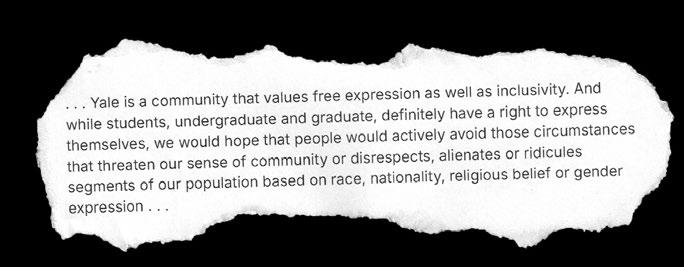

OCTOBER 30
Silliman College Associate Master Erika Christakis sends an email to Silliman students in response to the IAC email, defending students’ rights to wear potentially insensitive costumes.
In the long email, in which she referred to her academic work, Christakis encouraged students to “tolerate o ense” as an exercise of free speech. Her email prompted more than 740 undergraduates, graduate students, alumni, faculty, and students from other schools to sign onto a letter arguing that Christakis’s words invalidated the experiences of students


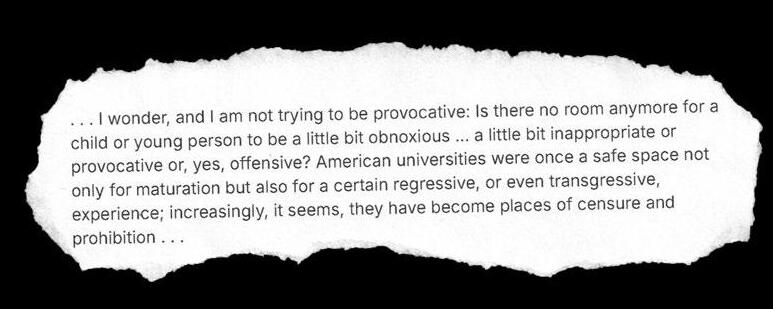
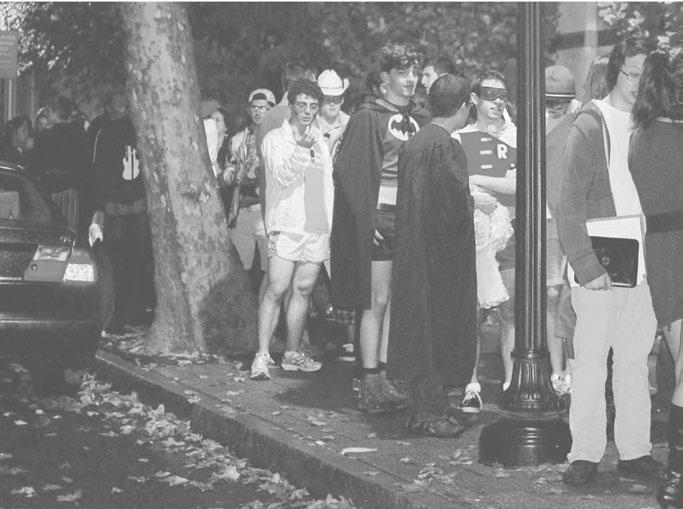

OCTOBER 29
Calhoun College Master Julia Adams joins the call to change the college’s name.
an ongoing
students and administrators had advocated for a new name, such as Calhoun-Douglass, which would honor abolitionist Fredrick Douglass. Others called for the name to be changed completely.
OCTOBER 30
A student posts on Facebook about women of color turned away from a Sigma Alpha Epsilon party on the grounds it was for ‘white girls only.’
The fraternity’s president denied the allegations. Dean of Student Engagement Burgwell Howard told the Yale Daily News that administrators were investigating the claim, and that he would look into whether SAE — which is now LEO — had violated University policy.

NOVEMBER 5
Students confront Yale College Dean Jonathan Holloway and Silliman Master Nicholas Christakis about the Halloween email and campus racial climate.
the
an email to the Yale College community a day later that the meeting left him “deeply troubled.”
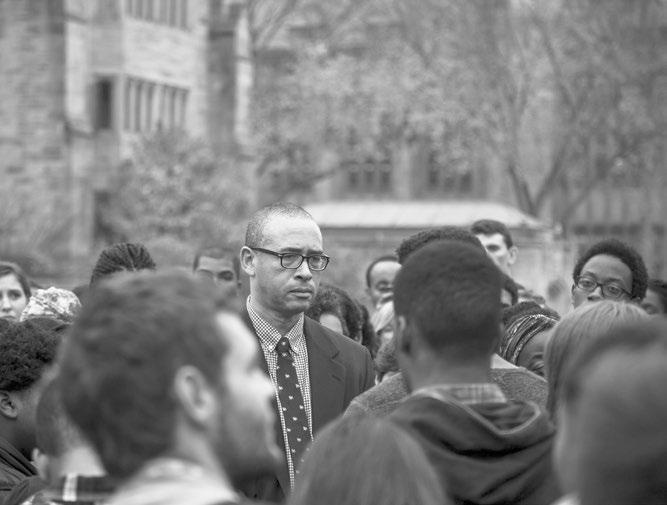
NOVEMBER 5
Later, University President Peter Salovey and Yale College Dean Holloway meet with about 50 students to discuss the experience of being in a minority group at Yale.
At the meeting, hosted by Salovey, Holloway and two other administrators, a member of the Black Student Alliance at Yale suggested possible steps the administration could take to address the discourse about campus racial climate. Salovey wrote in an email to the Yale College community a day later that the meeting left him “deeply troubled.”
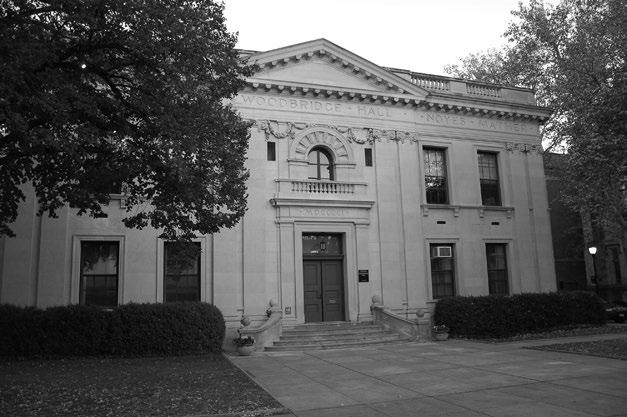
NOVEMBER 9
More than 1,000 gather for a ‘March of Resilience’ across campus.
Hundreds of Yale a liates participated in the solidarity march from the Afro-American Cultural Center to Cross Campus. The large gathering amid discussions about race on campus culminated in a lively gathering with speeches and musical performances by cultural groups.
During the march, students chanted, “We are unstoppable, another


NOVEMBER 11
Hundreds of undergraduate and graduate students attended a teach-in on race at Battell Chapel.
At the three-hour event, panels discussed supporting women of color at Yale, mental health in communities of color, addressing white and male privilege and the importance of taking ethnic studies classes. Student attendees told the News they hoped the teach-in would show administrators that the student advocacy should be taken seriously.
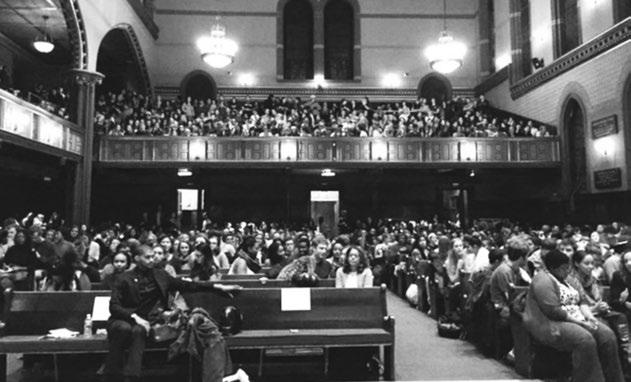
NOVEMBER 12
Students march to Salovey’s house to deliver a new set of demands.
At close to midnight, roughly 200 students visited the president’s residence with updated calls for Salovey to develop the ethnic studies program, increase support for cultural centers, address mental health issues for minority students and remove the Christakises from their Silliman College roles.

NOVEMBER 17
Salovey announces a series of policy changes geared toward diversity and inclusion
The actions publicized In a university-wide email sent on Nov. 17 included founding of a new academic center focused on race and ethnicity, more faculty positions and course o erings for scholarship on underrepresented communities and a five-year series of conferences on identity and inclusion. Salovey also announced Yale would dedicate $50 million to a faculty diversity initiative, double the cultural centers’ budgets and expand services for students — including more avenues for reporting discrimination.
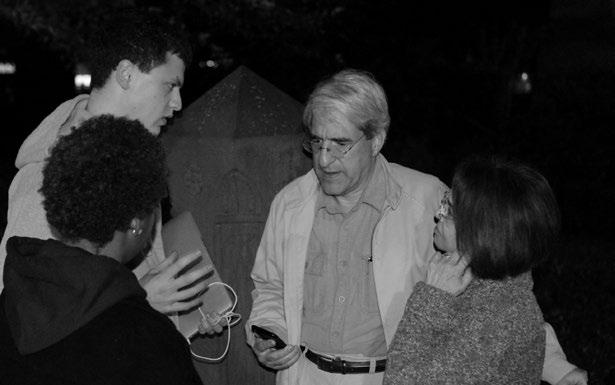
DECEMBER 3, 2015
Erika Christakis leaves teaching role
FEBRUARY 11, 2017
Salovey announces that Calhoun College will be renamed for Grace Hopper GRD ‘34

BY ADELE HAEG AND OLIVIA WOO STAFF REPORTERS
On a February afternoon in 2015, the Silliman dining hall broke into “whooping applause” after its newly appointed master, Nicholas Christakis ’84, announced to students that his family’s two dogs would be available for sleepovers.
Just nine months later, over a hundred furious students surrounded Christakis in the Silliman courtyard. One demanded of him: “Who the fuck hired you?”
Two months after the first class of first-year Sillimanders under the Christakises arrived on campus, Associate Master Erika Christakis sent students an email under the subject line “Dressing Yourselves.” In it, she questioned administrators’ authority to dictate the Halloween costumes students wore, arguing that students should not be afraid to be “inappropriate or provocative or, yes, o ensive” in the way they dress.
“I am not trying to be provocative,” Christakis wrote in the email. Whatever her intentions were, her interjection “led to a campus firestorm,” and she and her family became “tinder for a mass emotional conflagration,” she wrote in a 2016 Washington Post op-ed.
The email generated debates across campus and in the years since about the role of master, a title replaced the next year by “head of college” as part of the racial reckoning that the email helped set o
Paul McKinley, a Yale College senior associate dean and a twotime former dean of Saybrook College, told the News that masters o er “idiosyncrasies” to residential college life. For the Christakises, advocacy for free expression was a priority that came to define their brief tenure in Silliman. Heads should have “different visions” for their role, said Stephen Davis GRD ’98, a former master and then head of Pierson College who personally dropped the title “master” over the summer of 2015 because its historical and racial connotations had made him uncomfortable. However, if a head chooses to “focus in on one particular issue, and the consequence is that everything else kind of gets out of kilter,” Davis said, that inhibits their “ability to do what they want to do in the role.”
‘Our discourse about the exercise of free speech’ In an email announcing his appointment, University President Peter Salovey and Yale College Dean Jonathan Holloway lauded Nicholas Christakis for his contributions to sociology and public health.
Christakis was ranked among Time Magazine’s 100 most influential people of 2009 and Foreign Policy magazine’s top global thinkers in 2009 and 2010. A 2010 TED talk in which he discusses “the hidden influence of social networks” has amassed over two million plays on the TED website. Both Christakises were also
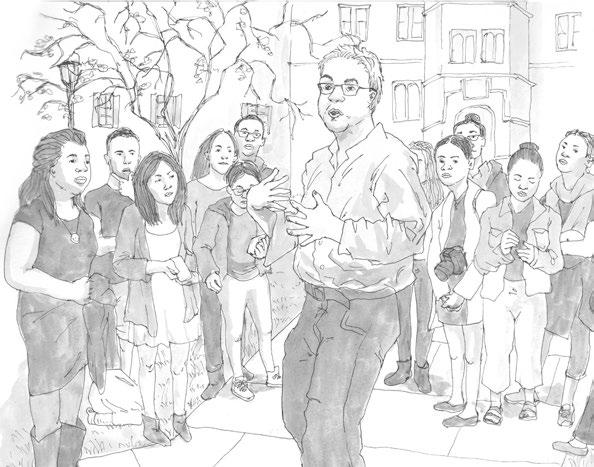
advocates for unfettered free expression, including in their roles as co-masters of Harvard’s Pforzheimer House from 2009 to 2013.
In a 2012 op-ed in Time magazine, the couple criticized Harvard’s response to a racist and antisemitic satirical flyer, accusing administrators of running a “free-speech surveillance state” that “infantilizes students” and permits them to “restrict the speech of others so that they can avoid their unpleasant feelings.”
In a personal blog post written in 2013 entitled “Use Your Words,” Erika Christakis recounted the frustration she felt with some Harvard students’ refusal to engage with “insensitive” and “oafish” remarks made by a peer expressing resentment for students on financial aid.
The blog post bears striking resemblances to the email she sent to Silliman students on Halloween weekend two and a half years later, in response to an email sent to all undergraduates by Yale’s Intercultural Affairs Council that asked them to be “thoughtful” when choosing Halloween costumes in order to avoid engaging in “cultural appropriation.”
“A healthy democracy depends on the free exchange of speech,” Erika Christakis wrote in the email, which cited her background in education. “Speaking as a child development specialist, I think there might be something missing in our discourse about the exercise of free speech.”
Nicholas and Erika Christakis declined to comment for this article.
Leading a residential college
In interviews, both Davis and Traugott Lawler, the master of Ezra Stiles from 1986 to 1995, called the role of master or head the best jobs they had held. They emphasized how rewarding it was to get to know undergraduates and eat in the dining halls daily, chatting with students.
The specifics of what the job actually entails are not precisely defined — much of it is up to heads themselves.
When the Christakises stepped into Silliman College leadership in July 2015, the Yale College website described the role of master as responsible for “the physical well being and safety of students in the residential college, as well as for fostering and shaping the social, cultural, and educational life and character of the college.”
In a “Welcome to Silliman!” pamphlet addressed to the class of 2019, however, Nicholas Christakis
centered his own responsibilities to the college around the setting of an “intellectual, social, and ethical tone.”
Lawler told the News he “wasn’t ever told that I was responsible for looking to the intellectual and moral development of my students.”
If a head of college enters the role with an eye to the “ethical” development of students, their own moral values may influence their leadership.
“Heads can have strong opinions and commitments,” Davis told the News. However, he said, “if those strong commitments” do not allow heads to be present with students and prioritize the “coherent, integral valuing of students, then that inhibits their ability to do the work fully.”
“Heads of College have a central role in their residential college communities, serving as compass and chief executive officer,” the description on the Yale College website currently reads, using language updated last year. “Each college has its ethos, traditions, and activities, which Heads support and enhance.”
Amy Hungerford, who was Morse master from 2012 to 2014, emphasized that a professor in the role of master should “model what it means to be passionate.”
“You don’t change yourself in order to appear neutral,” she said. The fallout from ‘Dressing Yourselves’
The same weekend Erika Christakis sent her email, allegations of a “white girls only” fraternity party surfaced. The two incidents combined to produce a student uproar about racism on campus, with students confronting administrators to demand a variety of changes. Within a week, campus activists led a massive “March of Resilience.”
“This period of time for me was incredibly formative,” Davis said. “It clarified my moral and ethical vision for what leadership needed to look like at the University.” He said he started to think about “when I needed to speak and when I needed to not speak.”
Brea Baker ’16, who helped organize the 2015 protests, said that the Christakis email was “divisive” and defended “free speech for one group, I think, at the expense of mental health and inclusion for other groups.”
Nicholas Christakis told the News a week after his wife sent the email that she had written it because she
believed that in doing so, she was “serving the intellectual and moral needs of students.”
He said he did not think that generating such intellectual discourse was inconsistent with addressing student needs.
Davis — who chaired the Council of Masters beginning in July 2015 — stressed that masters, and now heads of colleges, must reconcile the values of free speech and collective empathy among students.
“How do you create space for students to disagree and to be themselves?” Davis asked in a recent interview with the News. “That culture of care is a different value metric than, say, freedom of speech, and it has to be navigated and negotiated. I think if you value, say, something like freedom of speech to the detriment of, say, a culture of care, you’re missing something.” In mid-November 2015, Nicholas Christakis wrote an “open letter to the Silliman community,” entitled “The Idea of Positive Intent.”
In the letter, Christakis wrote: “Finally, in the spirit of positive intent, I quite understand that the movement on campus has a laudable objective. It seeks better communication among groups; it seeks to redress past wrongs; and it seeks to have its own, powerful, voice. The last item in particular, if you re-read Erika’s email, was a point she herself was making!”
The Christakises resigned from their positions in Silliman College leadership at the end of May of the next year, less than seven months after Erika sent out the email with the subject line “Dressing Yourself.”
Less than a month after the Christakises stepped down from their roles at Silliman, Salovey announced that psychology professor Laurie Santos would succeed Nicholas Christakis as head of Silliman College. Santos had been teaching at Yale for 13 years, and her classes were popular — a recordbreaking 584 students took her spring 2015 iteration of “Sex, Evolution and Human Nature.”
Nicholas Christakis runs the Human Nature Lab as part of the Yale Institute for Network Science. He was appointed Sterling professor of social and natural science in 2018.
Contact ADELE HAEG at adele.haeg@yale.edu and OLIVIA WOO at olivia.woo@yale.edu.
BY REETI MALHOTRA STAFF REPORTER
In response to outrage sparked by an email sent by then-Silliman Associate Master Erika Christakis to Silliman College students in 2015, 49 faculty members signed a letter of support for the “right of Erika and Nicholas Christakis to free speech and freedom of intellectual expression.”
“A crucial component of free expression is the possibility of open and civil discussions, without vilifying those who disagree with one’s own viewpoint,” the letter read.
Ten years later, five faculty members who signed the letter recently described the Yale community as more receptive to free speech now than in 2015. cq
“I believe that the Yale community is more open to free speech and free expression than it was a decade ago,” Julia Adams, who between 2014 and 2024 was the master of Calhoun College and then head of renamed Grace Hopper College, wrote in an email to the News. “Nicholas and Erika Christakis’ courageous defense of those principles helped make that possible, in my view.”
“The University itself has since underlined its support of the Woodward Report, which I think is great. I also did so, explicitly, as thenhead of college, especially to facilitate the community discussion and debate around the name change from Calhoun to Grace Hopper College,” Adams, a co-chair of President Maurie McInnis’ Committee on Trust in Higher Education, added.
The Report of the Committee on Freedom of Expression at Yale, known as the Woodward Report and adopted by the University in 1975, provides principles to foster open discourse on campus.
On Oct. 30, 2015, Erika Christakis,
the wife of Silliman’s then-Master Nicholas Christakis, sent an email to the Silliman community questioning the implications of the Intercultural Affairs Committee’s recently proposed guidelines about culturally insensitive costumes.
Erika Christakis declined via email to comment on the 2015 controversy, pointing the News to a 2016 opinion piece she published in The Washington Post. At the time, she wrote that her attempt to “generate a reflective conversation among students” was met by what she said many outside observers saw as “a ba!ing overreaction.”
Referencing the institutional response to the controversy, Erika Christakis added that “by a rming only the narrow right to air my views, rather than helping the community to grapple with its intense response, an unfortunate message was made plain: Certain ideas are too dangerous to be heard at Yale.”
Nicholas Christakis, in a 2019 interview, classified the 2015 controversy as a “challenging period” in his life. Citing a Nov. 5, 2015, confrontation during which he stood and interacted with students for just over two hours in the Silliman courtyard, Nicholas Christakis said that “many of the students were swept up in a kind of mob fervor” and “should have known better.”
On Oct. 30, 2024 — nine years to the day Erika Christakis emailed Silliman students about the Halloween costume guidance — McInnis accepted a report by the Committee on Institutional Voice that implored University leaders to refrain from issuing “statements concerning matters of public, social, or political significance, except in rare cases.” McInnis’ adoption of the institutional voice report contributed to Yale’s 97-spot increase this year
in a “College Free Speech Ranking” — based on student surveys, campus policies and speech-related controversies aggregated by the Foundation for Individual Rights and Expression, or FIRE — to 58th of 275 universities surveyed nationwide.
“FIRE believes institutional neutrality is a cornerstone of a truly free and open campus,” Laura Beltz, the FIRE director of policy reform, wrote in an email to the News.
FIRE’s latest report also said Yale students still reported a “mixed atmosphere” on campus with regard to freedom of expression, with 33 percent of its survey’s respondents reporting that they self-censor on a monthly basis.
FIRE CEO Greg Lukianoff was present on campus on Nov. 5, 2015, and filmed videos of the confrontation between Nicholas Christakis and students in the Silliman courtyard. Lukiano was already scheduled to appear at Silliman for a college tea with Christakis about campus free speech and attended a panel on freedom of speech hosted by the Buckley Institute.
Lukianoff has not returned to Yale since then, according to FIRE spokesperson Alex Griswold.
Jim Sleeper ’69, a former political science lecturer who did not sign the 2015 letter backing the Christakises and who left Yale in 2020, said in an interview that the couple had presented themselves as “being martyred, sacrificed on the altar of politically correct, crazed student radicals.
“I think that the Christakises presented themselves — with the help of this guy, Greg Lukianoff of the Foundation for Individual Rights in Education — as apostles of free speech, defenders of free speech,” Sleeper said, using FIRE’s pre-2022 name.
Faculty members who signed the 2015 letter of support for the Christakises expressed opposition to the conduct of certain students during the November confrontation at Silliman.
“I saw these videos, and I thought, this is kind of abusive surrounding somebody in that way,” A. Douglas Stone, professor of applied physics and physics, said in a phone interview.
Stone co-authored the November 2015 open letter defending the Christakises with two other faculty members who, due to holding administrative positions at the time, chose not to be publicly identified.
Stone said he chose to author the letter after watching videos of the confrontation.
“He was trying to communicate with the students and open a dialogue, and he was getting very aggressive pushback from them,” Paul Forscher, a professor emeritus of molecular, cellular and developmental biology and signatory of the letter, said of Christakis in an interview.
Debates about free expression on campus have been hotly contested in recent years and have been shaped this year by President Donald Trump’s return to the White House.
Forscher said the Trump administration’s aggressive policies toward universities — which have been aimed at fostering ideological diversity; culling diversity, equity and inclusion initiatives; and curbing antisemitism — have affected the climate of free speech.
In an April opinion piece in the News, two faculty members voiced concerns about a “double standard” in disciplinary action taken against pro-Palestinian student protestors. The faculty members alleged that university policies were being used against certain groups for the content of their speech.
Yale revoked Yalies4Palestine’s status as a registered student group in April 2025, following a protest on Beinecke Plaza for which the group allegedly took credit through public social media posts.
“These conversations about how we balance a climate of inclusion and mutual respect with an absolute regard for the freedom to di er publicly are now unfolding in a radically altered and urgent context of state repression,” Catherine Nicholson, a co-author of the opinion piece and professor of English, wrote in an email to the News.
“Any internal efforts to facilitate free speech and discourse on campus that do not name, reckon with, and actively resist that threat are worse than ine ective; they are corrosive of our mission,” Nicholson added.
The April disciplinary action against Yalies4Palestine also prompted 1,020 faculty members to sign a letter urging leaders to “defend the rights to free speech on campus recognized in the Woodward Report,” including through the support of “community members at risk of government infringement on this right.”
The previous year, in February 2024, faculty members formed a faculty group, Faculty for Yale, that “confirm Yale’s commitment to robust free expression” and “insist on the primacy of teaching, learning, and research as distinct from advocacy and activism.”
As of Oct. 21 2025, Faculty for Yale has 162 signatories, including Nicholas Christakis and 18 of the professors who signed the 2015 letter backing him and his wife. Jerry Gao contributed reporting. Contact REETI MALHOTRA at reeti.malhotra@yale.edu.
In 2015, President Peter Salovey and Yale College Dean Jonathan Holloway faced passionate calls to make Yale more inclusive for sutdents of color. Some students and professors think they should have acted faster.
BY JAEHA JANG STAFF REPORTER
In his opening address to first years in 2015, former University President Peter Salovey implored the Yale College class of 2019 to engage in “di cult conversations” about Yale’s “complicated and sometimes surprising” ties to the past, including the naming of Calhoun College after the proslavery advocate and Yale College alumnus John C. Calhoun.
“I cherish Yale’s traditions and her history, and I do not believe we should undo them motivated solely by events or emotions of the moment,” Salovey said, referring to the debate about whether to rename Calhoun College. “Good people — moral and principled people — can and will disagree about it.”
Less than three months later, thousands of Yalies confronted the University’s past and present — perhaps not in the way Salovey had imagined in August. Campus events — including a series of emails about cultural sensitivity, allegations of racism at a Halloween party and subsequent protests — rapidly shaped University-wide discourse, and emotions ran high.
In the weeks following Oct. 31, 2015, students demanded a range of reforms for racial equity, spanning from the renaming of Calhoun to increased access to mental health services. University administrators performed a careful balancing act between student calls for change and administrative caution, meeting some demands while leaving others unanswered.
“There is a tendency sometimes for administrations to view student protests as a bother or an annoyance or an obstacle to work around,” Stephen Davis GRD ’98, who served as Pierson’s master and then head of college between 2013 and 2023, said in a phone interview with the News. “There were times when Yale struggled to figure out how best to engage with the students and to recognize what they were doing as a form of engagement.”
Salovey and then Dean of Yale College Jonathan Holloway GRD ’95 declined to comment for this article, citing personal policies against commenting on past issues and positions.
A week of administrative silence, compromised demands
Two years into his presidency, Salovey was known for his accessible style, having launched “Notes from Woodbridge Hall,” a series of biweekly emails to the University community, and made a habit of performing at Toad’s with his band, the Professors of Bluegrass.
It took him one week to directly respond to two incidents on Oct. 30, 2015 — too long, according to four students and faculty.
On the morning of Friday, Oct. 30, Silliman College Associate Master Erika Christakis sent an email to Silliman students criticizing a message from the Intercultural Affairs Committee earlier that week, which cautioned students against cultural appropriation during Halloween. Christakis’s email promptly drew widespread criticism, including a letter signed by more than 740 people who called it “offensive” and accused it of invalidating minority voices.
That night, the fraternity Sigma Alpha Epsilon — a chapter that later disa liated from the national organization and was renamed LEO — hosted a Halloween party that became the subject of allegations of racial discrimination. A student claimed in a Facebook post the following day that women of color were turned away on the basis that the party was for “white girls only.”
On Nov. 3, Salovey and then University Provost Benjamin Polak GRD ’01 announced the launch of a $50 million initiative to expand faculty diversity. This statement did not address Christakis’s email or the allegations of racism at SAE, though two weeks later, Salovey
characterized this initiative as part of a wave of policy changes prompted by “the expressions of those who do not feel fully included at Yale.”
Polak did not respond to multiple requests for comment.
On Nov. 4, some students who gathered at a race-related discussion forum at the AfroAmerican Cultural Center pointed out the administration’s silence on Christakis’s email and the allegations of racism at the SAE party. While more than 350 individuals, including Christakis, attended the forum, neither Salovey nor Holloway was present, the News reported at the time.
In the afternoon of Nov. 5, more than 200 protesters who had gathered on Cross Campus for a chalking event surrounded and confronted Holloway.
One year into his deanship, the African American studies professor had built a reputation for transparency and concern for student life, becoming the first Yale College dean in recent memory to attend a Yale College Council meeting. Holloway, a former master of Calhoun College, was Yale’s first Black dean.
“It is painful for me — as someone who has a vested interest in supporting you — to hear what you have just told me, but I am glad you did,” Holloway said, addressing the students in a speech on the Women’s Table after listening to them for three hours. “I’m here for you. I do have your back. Please know that I have heard your stories and I’ll leave here changed.”
That evening, Salovey, Holloway and other members of the administration met with about 50 minority students in the Corporation Room of Woodbridge Hall to listen to student grievances. At the meeting, students still demanded an o cial administrative response to the previous week’s controversies, the News reported at the time.
Salovey finally broke his public silence on the morning of Nov. 6, one week after Christakis’s email and the SAE party that drew allegations of racism. In an email addressed to the Yale community, Salovey acknowledged the “great distress” of minority students and promised to announce policy changes before Thanksgiving.
On Nov. 17, Salovey outlined a four-part plan to improve diversity and inclusion at Yale, through new initiatives in academics, student support, institutional structures and representation.
“In my thirty-five years on this campus, I have never been as simultaneously moved, challenged, and encouraged by our community—and all the promise it embodies—as in the past two weeks,” Salovey wrote.
On the same day, he and Holloway emailed Silliman College to reaffirm the Christakises’ leadership positions and call “for a spirit of generosity and a willingness to assume the best in others.” One of the core demands of student activists had been the immediate removal of the Christakises from their leadership positions.
‘Feelings of almost abandonment’
Karleh Wilson ’16 felt that the administration’s statements in 2015 were not “appropriate or rapid enough.” She felt that administrators were overly worried about alumni input and student activism “messing up Yale’s reputation.”
“They were putting out statements, but I didn’t actually feel like they heard me, saw me, and cared about myself and other students that were going through similar things,” Wilson said in a phone interview with the News. “It became clear that they didn’t realize how much we were dealing with as African American students or just minorities in general.”
Brea Baker ’16 said she felt “feelings of almost abandonment” from Salovey and Holloway’s responses to the student body’s advocacy. Administrators had been charged with student well-being,
she said, but she felt they cared more about alumni and the press.
Davis said he believes administrators should have conveyed more “emotional honesty” in public communications in the midst of student advocacy.
“It remains a fact that I think that the students felt supported by the people who were present supporting them, but there were moments where they weren’t sure that they were being heard,” Davis said. “So I think that collectively is a kind of labor that universities can do better, should do better.”
Davis added that Holloway’s Nov. 5 appearance on Cross Campus, where he listened to students for three hours, exemplified the administration’s active presence. As the face of the administration to undergraduates, Holloway honored the students’ grievances despite being their target, Davis said.
According to Davis, the administration was working to “corral things piece by piece” as it announced targeted policy changes throughout the year.
The administration’s $50 million commitment to expand faculty diversity, he said, was based on existing demands from faculty and “happened to dovetail in part” with student advocacy. Similarly, increased financial aid was an issue students had been advocating for before 2015.
“What made that time so vibrant and also complicated was, there was a lot going on,” he said. “There were a lot of conversations being had, some of which had been happening for a time earlier, and during that period, some conversations gave renewed energy or raised new issues, new dimensions.”
Engagement or capitulation?
According to Davis, a defining difference between the roles of heads of college — called “masters” in 2015 — and the University administration is the extent of presence among students. While heads of college build trust through constant presence among students and sta , the University is a “huge entity” that is not “set up like that,” he said.
While a negative perception of student protests is not unique to 2015 or to Yale, Davis said, he thinks student protests are a mode of engagement that Yale should be “encouraging, actually, as part of the wider aspects of a university education and experience.”
Steven Smith, who served as the master of Branford College from 1996 to 2011, believes the
administration went too far in engaging with students’ demands in 2015. The administration should have considered the merit and validity of student demands more carefully, he said.
According to Smith, the $50 million commitment to faculty diversity that the University announced four days after
in 2015, and these works have been “meaningful” for Black students and alumni and for the “health of the University,” he said. In May 2016, Salovey announced that the title of “master” would change to “head of college,” that the two new residential colleges being built would be named after Benjamin Franklin and Anna
“THERE WERE TIMES WHEN YALE STRUGGLED TO FIGURE OUT HOW BEST TO ENGAGE WITH THE STUDENTS AND TO RECOGNIZE WHAT THEY WERE DOING AS A FORM OF ENGAGEMENT.”
Christakis’s email represented a “moment of capitulation” to students and a sign that “the University was in the grip of wokeness.”
“It sounds like an attempt to me just to buy the goodwill of this mob,” he said in a phone interview with the News. “Can you imagine the good that that 50 million dollars could be put to for student life and tuition? To me, it sounds like it was just a gesture of fear and sort of defensiveness. ‘Oh, yes, we’ll give you 50 million dollars.’ It’s a staggering sum of money.”
Smith added that while every student has the freedom to voice discontent, he thinks the advocacy represented only a loud group of students, not the entire student body.
Davis said he “definitely” thinks the advocacy of 2015 informed the rest of Salovey’s presidency. Many self-reflective projects, including institutional research into Yale’s relationship with slavery, would not have happened without the conversations sparked
Pauli Murray LAW ’65 and that Calhoun College would not be renamed. Calhoun was ultimately renamed to Grace Hopper College in February 2017. In his August 2016 opening address, Salovey still emphasized the value of critical thinking, but he qualified how to approach it in “increasingly polarized and fractious times.”
“We sometimes find that anger, fear, or disgust can blind us to the complexity of the world and the responsibility to seek deeper understandings of important issues,” he said. Yale, he added, is “where we prize exceptional diversity of views alongside the greatest possible freedom of expression.”
Salovey plans to return to teaching next school year.
Adele Haeg and Olivia Woo contributed reporting.
Contact JAEHA JANG at jaeha.jang@yale.edu.
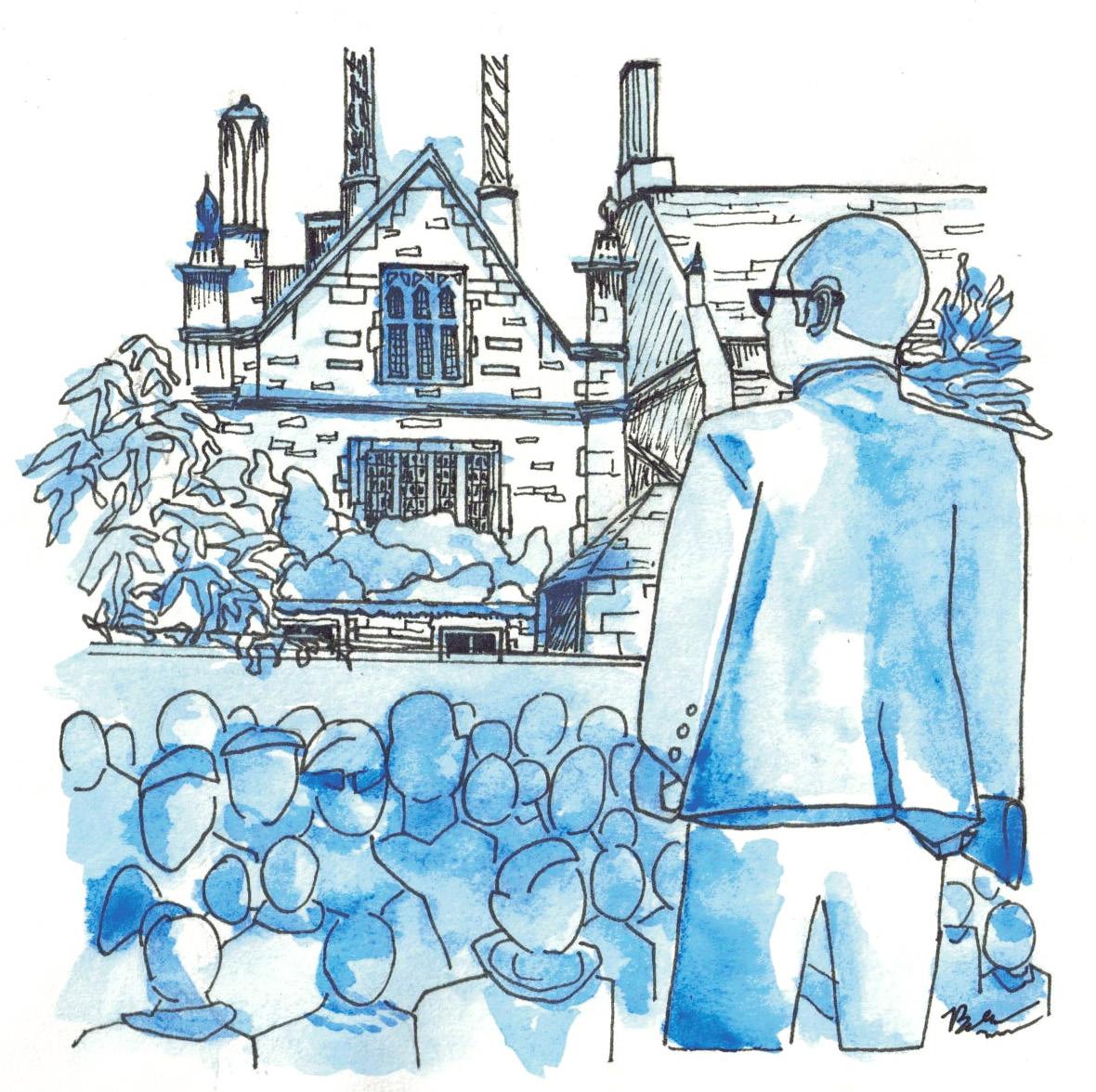
some student activists, 2015 was life-altering
A decade after calls for racial inclusivity resounded on campus, former students who participated in the post- Halloween swell of activism say the experience changed the trajectories of their careers and lives.
BY OLIVIA CYRUS STAFF REPORTER
In a Facebook post published on Halloween in 2015, Neema Githere, then a Yale sophomore, sounded the alarm about a fraternity’s alleged “white girls only” party, helping to ignite a tornado of controversy.
“I’d just like to take a moment to give a shoutout to the member of Yale’s SAE chapter who turned away a group of girls from their party last night, explaining that admittance was on a ‘White Girls Only’ basis,” Githere wrote in the post, referring to Sigma Alpha Epsilon. “And a belated shoutout to the SAE member who turned me and my friends away for the same reason last year. God Bless the USA.”
The Facebook post, which has since garnered more than 1,500 likes and 250 shares, went viral — drawing attention from major publications across the country, such as The Washington Post and TIME. It also ignited at least two distinct protests and several meetings with administrators over race and belonging that would help reshape Yale’s campus, Githere said.
More than 1,000 students participated in the demonstrations in November 2015, which were also fueled by an email from Silliman College Associate Master Erika Christakis criticizing administrators’ guidance to students about exercising “sensitivity” when selecting Halloween costumes. The controversy coincided with Githere’s allegations of racist behavior at Yale’s Sigma Alpha Epsilon chapter, which has since broken from the national organization and is known today as LEO.
For Githere, the aftermath was life-altering. After enduring cyberbullying and what she described as “cyber-PTSD,” she dropped out of Yale and said she was denied readmission twice.
When asked about Githere’s attempt to be readmitted, University spokesperson Karen Peart wrote that “to maintain confidentiality and student privacy,
for a generation of Yale students who were forced to confront the limits of belonging and advocacy at an elite institution. A decade later, three other former students who participated in that activism reflected on how their involvement changed the trajectory of their careers and lives.
In 2015, Luke Stringer ’18 DIV ’23 stood alongside the a cappella group, Shades of Yale, and in front of a sea of more than a thousand students on Cross Campus and sang a medley of “Amen” and “We Shall Overcome.”
At the time, Stringer was an architecture major. Now, he’s an associate pastor at Plymouth Congregational Church in Des Moines, Iowa. In a recent phone interview, Stringer said his experience with the protests catalyzed a turning point in his post-graduation aspirations.
“It sort of boiled over into this moment of, ‘Why does this university seem to be so illequipped to address the needs of Black students and students of color to feel at home and full members of University life?’”
Stringer said.
Stringer, who is white, said he felt that the protests were fueled by the same wave of outrage that came with protests in Ferguson, Mo., a year earlier. In August 2014, a white police officer shot a Black teenager in the St. Louis suburb, setting off weeks of protests across the country.
Many students of varied backgrounds were pondering: “Do Black lives matter, and if so, how do we make that true?” Stringer said.
Among those students was Gabby Cudjoe Wilkes DIV ’18, then a first-year Yale Divinity School student, who was adjusting to her transition from serving as a young adult pastor in New York. A graduate of Hampton University, a historically Black university in Virginia, she worked part-time at the Afro-American Cultural Center, affectionately known as “the House,” and was intrigued by the prospect of mentoring Black students at a predominantly white institution like Yale.

to all of you, and you all deserve the right to enjoy the good of this place, without worry, without threats, and without intimidation,” Holloway wrote at the time.
That week, Cudjoe Wilkes joined about 1,000 people in a march from the Afro-American Cultural Center to Cross Campus. She said at the time that she partook in the event because, even as a graduate student, she still felt an undeniable “emotional connection to the march because she is a woman of color,” the News reported in 2015. Stringer recalled that at the time, discourse around racial tensions was “all anyone was thinking and talking about.” He said when organizers were coordinating the timing of the march, they began asking students if they would be willing to skip their normal class periods to attend. The response felt like a unanimous yes to Stringer, which he said was “outstanding.”
“WHY DOES THIS UNIVERSITY SEEM TO BE SO ILL-EQUIPPED TO ADDRESS THE NEEDS OF BLACK STUDENTS AND STUDENTS OF COLOR TO FEEL AT HOME
we do not discuss specific reinstatement cases.”
“The protests from my Facebook post was one of many dominos that led to a residential college being renamed & a number of other concessional transformations but in many ways I feel like a casualty to that whole saga,” Githere, who is now an author, wrote in an email the News, referring to the renaming of Calhoun College — named for pro-slavery politician John Calhoun, who graduated from Yale College in 1804 — to Grace Hopper College.
“In as much as it inspired the core of my practice it also indirectly led to me withdrawing from Yale & never getting a bachelor’s degree,” Githere added.
The protests were a turning point, not just for Githere, but
“Once the residential college environment was no longer safe for Black students, they admitted they had no place to retreat and that’s what got me involved in the protest,” Cudjoe Wilkes said in a recent voice memo sent to the News. “I just could not fathom already being a minority student at an Ivy League school and then the place where you’re supposed to call home is also a place where you don’t feel supported or seen.”
In response to students’ concerns that the residential colleges were not inclusive for students of color, Jonathan Holloway, the Yale College dean at the time, sent an email to undergraduates addressing the concerns, as reported by The Washington Post.
“Remember that Yale belongs
Ten years later, the image of the rally persists with Cudjoe Wilkes, who is now a director of Union Theological Seminary in New York. She recalls most vividly herself and others situated in front of Sterling Memorial Library, and students reciting vulnerable recollections of instances where they felt othered on campus.
“The visual that stands out to me the most from that moment is when a student got up and said ‘Listen, we are not asking for you to do something out of the ordinary or extraordinary,’” Cudjoe Wilkes said. “She said, ‘We’re asking you to be true to who Yale says it is on paper,’ and that always stuck with me, that visual of an undergraduate student having to beg and plead with this
university who claims to be the best in the world.”
She recalled the national attention the protests garnered, with reporters from MSNBC, CNN and Fox News sprinkled across campus. Regardless, Cudjoe Wilkes said that she and other Black students made a pact not to comment to the outlets. Instead, they designated spokespeople to engage with the platforms, she said.
Though she and Stringer felt as though, initially, Yale intended to remain neutral or take the side of the Christakises in the name of free speech, Cudjoe Wilkes gave credit to former President Peter Salovey for his visibility throughout the protests’ tenure.
At the Nov. 9, 2015 March of Resilience, among the nearly 1000 students, Salovey spoke with students and news outlets in attendance.
“We need to work harder, and this [march] is reinforcement that if we work harder, I think we can create an educational environment where everyone is respected, everyone is heard,” Salovey told the News at the time.
“I’m inspired to create that kind of Yale.”
Cudjoe Wilkes said the events remain a constant reminder that “sitting on the sidelines” was and is not an option during conflict. They also reaffirmed for her that one cannot pick and choose when to become an advocate.
“I came to get a master’s degree and to advance my education. I didn’t come to be an activist,” Cudjoe Wilkes said.
“But I came to Yale at a time where activism was nonnegotiable and people think that activism is enjoyable and fun. It’s not, it’s labor, it’s exhausting and the rest of your commitments don’t stop because you’re advocating for what’s right.”
For Abigail Goodman-Johnson ’15, who graduated in December 2015, activism took another form. Enrolled in the course “Freedom and Identity in Black Cultures” with Professor Jafari Allen, Goodman-Johnson said in a recent phone interview that she learned about how art and protest could intertwine.
In the class, she said students wove together Black art and history with current events at the time. She recalled many of her classmates expressing themselves less through protesting and more through the creation of art. Goodman-Johnson herself contributed to the discourse by writing poetry about the events, posting them on social media and having conversations with peers expressing their nuanced thoughts via art and literature. Nearly a decade after her Facebook post, Githere is still grappling with what that moment set in motion. In response to the post’s virality, Githere said she began “naively” accepting interviews from a flood of journalists
Illustration by Serina Yan
and outlets.
Githere said that after attending a study abroad program in South Africa in spring 2016 to “get a bit of distance from Yale,” she was hospitalized the following fall and medically withdrew from Yale.
Intending to return to Yale, she said that she completed all the requirements for reinstatement — therapy and two summer classes — yet, her application was denied, as was her appeal.
The rejection, Githere said, left a lasting wound from the emotional toll of being shut out from her own education.
She attributed discovering the works of artist and author Audre Lorde as a turning point in her healing journey, especially “The Audre Lorde Questionnaire to Oneself,” which asks: “What are the tyrannies you swallow day by day and attempt to make your own, until you will sicken and die of them, still in silence?”
“Hits me in the gut every day,” Githere wrote. “I feel like Audre Lorde would probably come at me for framing myself as a ‘casualty’ so much and not celebrating that ‘transforming silence into courage’ is what it’s always been about because courage is a gift regardless of what necessitates it.”
Last week, Goodman-Johnson, who is based in D.C., said she met up with a former classmate who graduated in 2016 and reflected on how her current profession, working in education policy, was inspired by the protests in late 2015.
“My experience with the demonstrations and my experiences volunteering with education organizations in New Haven informed my desire to have a career dedicated to service,” Goodman-Johnson said. “The demonstrations also underscored the importance of being in conversation with folks and ensuring that there are some spaces, including when there’s dissent, for folks to share what they are experiencing.”
Stringer said he returned to New Haven in 2024 when encampments were set up on campus by pro-Palestinian protesters. He said that seeing student demonstrations a year ago showed him that the culture of protesting at Yale is alive and well.
“Students are totally with it,” Stringer said. “They are paying attention to the same problems of who is being treated as collateral and not thought of as full human beings, full participants of whose lives are not mattering to this institution.”
In the fall of 2015, Yale College had an undergraduate population of 5,505 students, according to a fact sheet assembled by the Office of Institutional Research. Contact OLIVIA CYRUS at olivia.cyrus@yale.edu.